BE PREPARED FOR LIFE’S UNEXPECTED EMERGENCIES WITH OUR HANDY, HOW-TO GUIDE!













Find a Physician Register for a Class Share Your Story Find a Career Connect With Us www.CFHAlliance.org The Villages Regional Hospital Central Florida Health Alliance




















Be cool. Mount Dora Podiatry 3651 Lake Center Dr., Mount Dora, FL 32757 www.MountDoraPodiatry.com // 352.385.9156 Your Feet Our Passion Dr. Janet L. Black DPM Diplomate of the American Board of Podiatric Surgery Specializing in Wound Care Foot and Ankle Injuries Custom Orthotics Fractures Heel Pain Diabetic Foot Problems Numbness/Tingling/Burning Ingrown Toenails Infections of Skin and Nails Bunions Neuromas Second Opinions
Limbstitute is a center for comprehensive treatment of peripheral, venous and arterial diseases. It’s now open to patients with venous insufficiencies, peripheral arterial disease and non-healing wounds.

















A SERVICE OF
INSTITUTE OF CARDIOVASCULAR EXCELLENCE Ocala 4730 SW 49th Rd. // 352.854.0681 ocalaice.com
INSTITUTE OF MEDICAL EXCELLENCE
Summerfield 10435 SE 170th Place // 352.233.4393
The Villages 1950 Laurel Manor Dr., Bldg 240 // 352.509.9295

Williston 412 W. Noble Ave. // 352.528.0790 ocalaice.com
LIMBSTITUTE
Summerfield 10435 SE 170th Place // 352.233.4393






















Tavares 2754 Dora Ave. // 352.259.5960





The Villages 1050 Old Camp Road // 352.259.5960 limbstitute.com

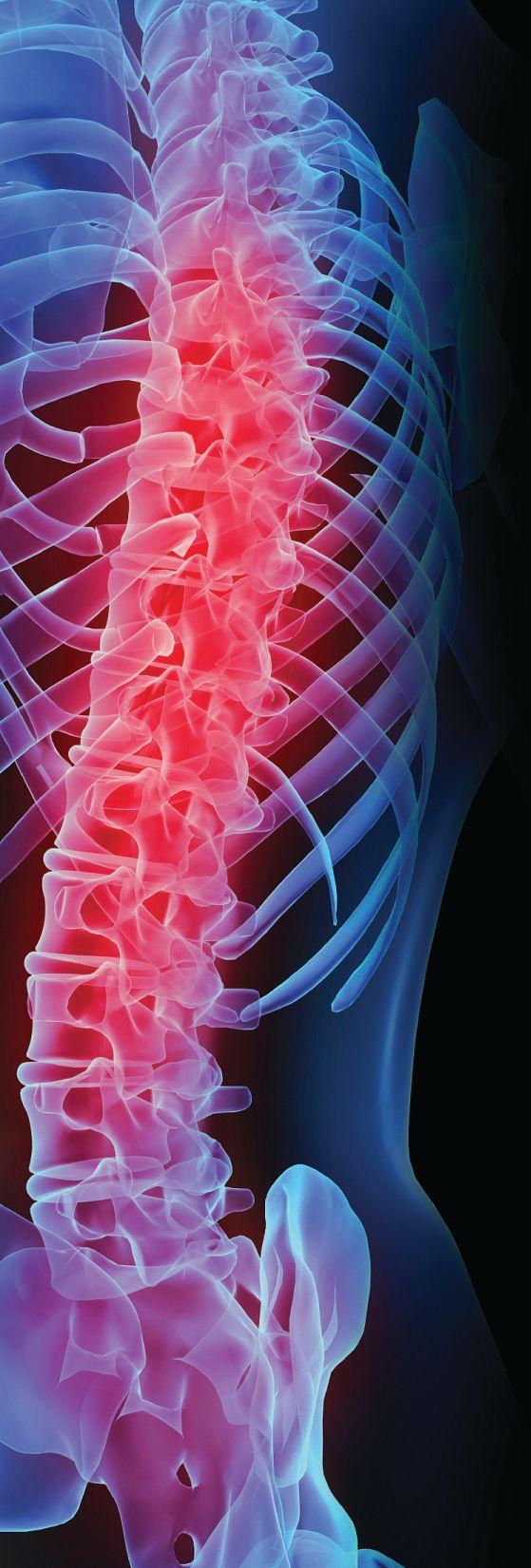
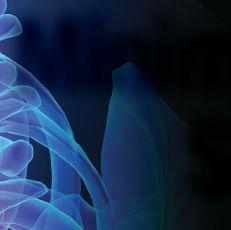










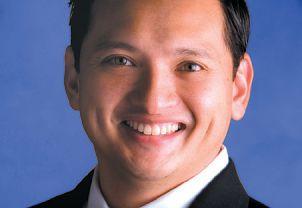


Minimally Invasive Spine Surgery Dr. Paraiso’s number one priority is patient care, and he treats his patients with compassion, empathy, and knowledge. He takes pride in seeing his patients live active and enjoyable lives. Specializing in Minimally Invasive Spine Surgery for: • Spinal Stenosis • Herniated Discs • Failed Laser Spine Surgery • Back & Leg Pain Clinical Assistant Professor University of Florida Department of Orthopedics - Spine Surgery Published Author and Minimally Invasive Spine Surgery Instructor/Health Grades® Five Star Recipient Board-Certified & Fellowship Trained OCALA MEDICAL PARK 1500 SE Magnolia Extension Suite 104 Ocala, FL 34471 THE VILLAGES 920 Rolling Acres Rd. Suite 208 Lady Lake, FL 32159 352-873-7770 • f 352-873-7704 www.centralfloridaspine.com Now servicing The Villages Regional Hospital
March 2014
32

Would you know what to do if an emergency arises? There is nothing wrong with answering “no,” especially since most of us secretly assume we’ll never find ourselves in such disastrous situations. That is precisely why we bring you “Healthy Living’s” first ever emergency guide, which contains important “what-to-do” information when emergencies strike.

WRITER: JAMES COMBS
THIS IS 911.
WHAT IS YOUR EMERGENCY?

We have all seen ambulances racing toward an emergency with lights flashing and sirens blaring. However, there is more to being an emergency medical technician (EMT) and paramedic than simply transporting patients to a hospital. “Healthy Living” staff writer James Combs spent an evening with Lake EMS employees to get a behind-the-scenes look at life as a medic.
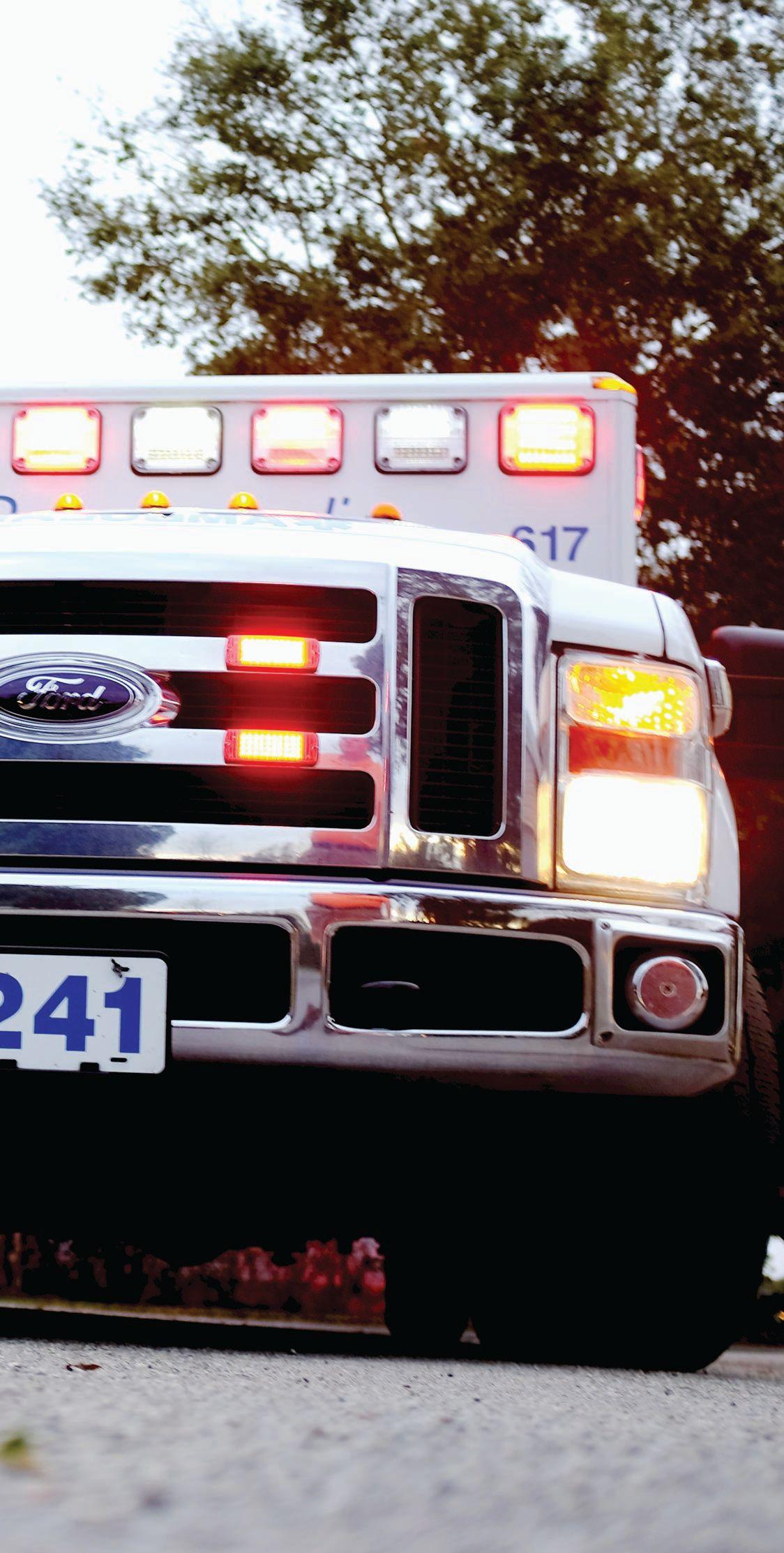
WRITER: JAMES COMBS

ON THE COVER DIRECTION: JAMIE EZRA MARK
FOR LIFE’S OUR HANDY,

LAKEHEALTHYLIVING.COM // 7
IN CASE OF EMERGENCY 44
ENTS FEATURING
PHOTOSHOP: JOSH CLARK
HEALTHYBODY
SHAPE

62 THE FORGOTTEN CALVES

Turn heads by sculpting sleek yet sexy lower legs.

WRITER: TRACY DRAPER
EAT FIT/NOT FAT
66 STIRRING THINGS UP
Before you order that burger, try this healthy “emergency” meal.
WRITER: ANNA GUNTER, RD, LD/N INSIDE
68 FOOD FIGHT: ORGANIC VERSUS NONORGANIC Is eating organic truly better for you?

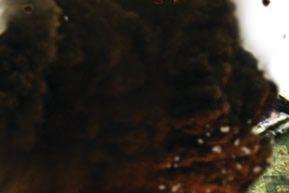


WRITER: RICHARD T. BOSSHARDT, M.D., FACS

CONT

HEALTHY
TRAUMA 74 SUFFERING IN SILENCE

For many, post-traumatic stress disorder is a daily battle.

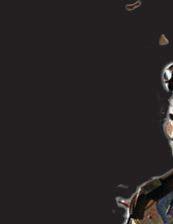


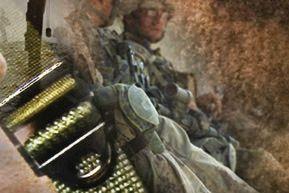








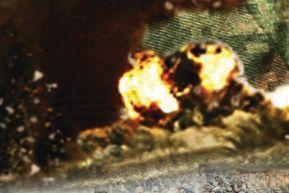

CONFRONT 76 THE FEAR FACTOR
While anxiety can be healthy in some situations, never allow it to rule your life.
HEALTHYSPIRIT


INNERVENTION

82 BEATING ADDICTION
Overcoming drug dependence can be hard, but it can be done.


WRITER: DR. ISAAC DEAS
CHALLENGES
84 COPING WITH TOUGH TIMES
It’s best to persevere with positivity in the face of life’s difficulties.
MENCOURAGEMENT
86 WISE COUNSEL
When someone is hurting, the best comfort is to speak the truth in love.

HEALTHYFINANCE
SUBTRACT
88 WHERE DID ALL MY MONEY GO? UNDERSTANDING YOUR PAYCHECK
All those deductions on your pay stub go somewhere.
WRITER: THOMAS RUGGIE, CHFC, CFP











RESERVE
90 CRISIS FUND
When the unexpected strikes, make sure you have an emergency fund.
WRITERS: THOMAS FROSS AND ROBERT FROSS
WRITER: RICHARD BURGUET 68
8 // HL // MARCH 2014 74 MARCH 20 2 1 14
10 PUBLISHER’S CORNER 12 MEDICAL MYSTERIES 14 HEALTH MATTERS 20 HEALTHY INSPIRATION 54 CALENDAR 92 COMMUNITY 98 HEALTHY VIEWS IN EVERY ISSUE
76
FOOT AND ANKLE CARE
Board-certified foot surgeons Dr. Michele McGowan and Dr. Timothy Henne offer a number of foot and ankle services for comprehensive foot care and ankle disorders. They are trained to handle problems as small as ingrown toenails and warts to as large and complex as bunions, hammertoes and heel pain.
bunions, hammertoes and h
PINPOINTE LASER TREATMENT
The Center for Ankle & Foot Care uses the state-of-the-art PinPointe Laser to cure embarrassing and unsightly toenail fungus. This FDA-approved treatment is a safe and effective way to kill fungus and improve the appearance of your nails. Our practice also sells the SteriShoe. This patented ultraviolet shoe sanitizer kills the microbes that cause athlete’s foot, toenail fungus, and offensive shoe odor.

THE NATURAL NAIL SPA
For a relaxing and enjoyable spa experience, try the Natural Nail Spa, a podiatrist-owned and certified modern nail lounge that maintains a pampering, relaxing atmosphere and the utmost sterilization and safety techniques. Even the nail polish bottle goes home with the client — just another step to heighten the “safe pedicure experience.”
Publisher’s corner
KENDRA AKERS publisher/editor-in-chief kendra@akersmediagroup.com
DOUG AKERS vice president doug@akersmediagroup.com
JAMIE EZRA MARK chief creative officer jamie@akersmediagroup.com
ACCIDENTS WILL HAPPEN
It is an unfortunate fact that most of us will be confronted with an emergency at some point in time. When that time arrives, will you know what to do to ensure your survival or the survival of a friend or loved one?
We hope this issue of Healthy Living will help prepare you for unexpected crises. Our editorial team has created a guide with step-by-step instructions on what to do should you find yourself faced with a medical emergency, natural disaster, or animal attack. For example, do you know what do if an alligator starts to chase after you? Should you run? We asked a local expert so we could give you the correct answer.
Also, have you ever wondered how emergency responders can answer 911 calls so quickly? When you are involved in an emergency situation and dial 911, you know someone will be there to render aid in just minutes. Most people do not think much about this benefit; they just know the service is available when needed. However, we at Healthy Living wanted to know what happens between the time an emergency call comes in and the time responders arrive at the scene. Staff writer James Combs and chief photographer Fred Lopez traveled into the field and spent the evening riding with Lake EMS. They followed emergency calls from start to finish and learned what goes into this amazing service. We will share with you what they discovered. We think you will find it extraordinary what this organization does to stay in a constant state of readiness for the health and benefit of Lake County residents.
Our goal for this issue is to provide our readers with an important resource guide so you can hold on to it and share it with friends and loved ones. Proper information and readiness are keys. Reading this issue could very well be the difference between a positive experience and an unfortunate outcome. Be sure to keep yourself educated about what you can do when (not if) you are faced with an emergency.
Until next month,
Kendra Akers
Publisher Publisher
EDITORIAL // DESIGN
TINA MORRISON editorial/community relations director tina@akersmediagroup.com
MARY ANN D ESANTIS editor-at-large maryann@akersmediagroup.com
SHEMIR WILES copy editor/writer shemir@akersmediagroup.com
JAMES COMBS staff writer james@akersmediagroup.com
AUBREY AKERS receptionist
contributing writers RICHARD T. BOSSHARDT, MD, FACS RICHARD BURGUET
DR. ISAAC DEAS ROBERT FROSS THOMAS FROSS ANNA GUNTER, RD, LD/N FRED HILTON THOMAS H. RUGGIE, CHFC, CFP
STEVEN J. CODRARO associate creative director steve@akersmediagroup.com
JOSH CLARK senior designer/advertising josh@akersmediagroup.com
ANTHONY CASTO senior designer/editorial anthony@akersmediagroup.com
MICHAEL GAULIN production director michael@akersmediagroup.com
FRED LOPEZ chief photographer fred@akersmediagroup.com
contributing photographer JAMES GIBSON RON VANDEVANDER
SALES // MARKETING
TIM MCRAE vice president of sales and marketing tim@akersmediagroup.com
MIKE STEGALL senior marketing representative mike@akersmediagroup.com
LORI STRONG marketing representative lori@akersmediagroup.com
HEIDI RESSLER marketing representative heidi@akersmediagroup.com
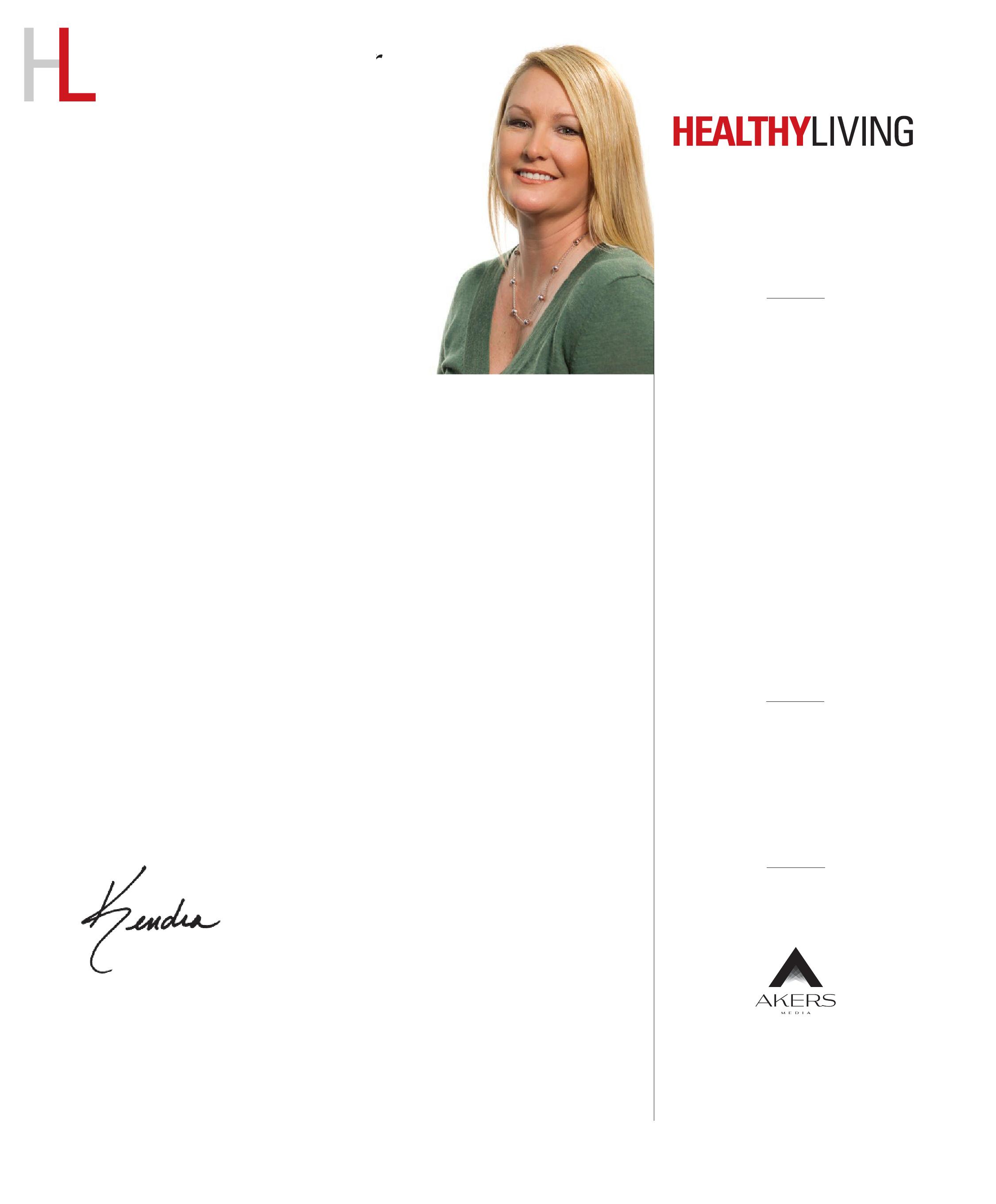 SHAENA CHASTAIN sales assistant shaena@akersmediagroup.com
SHAENA CHASTAIN sales assistant shaena@akersmediagroup.com
DISTRIBUTION
SCOTT HEGG distribution manager scott.hegg@akersmediagroup.com
10 // HL // MARCH 2014 All contents are copyright © 2014 by Akers Media Group, Inc. DBA Lake County’s Healthy Living Magazine. All reproduction or use of content without written persmission is strictly prohibited under penalty of law. The contents of the Lake County’s Healthy Living Magazine are for informational purposes only. The information is not intended to be an alternative to professional medical advice, diagnosis or treatment. Always seek the advice of your physician or other qualified health provider before starting any new diet or exercise program. The ideas and opinions contained in this publication do not necessarily reflect the thoughts or opinions of Akers Media Group. Phone: 352.787.4112 // Fax: 352.323.8161 P.O. Box 490088 Leesburg, FL 34749 www.akersmediagroup.com
or questions for our publisher? Please email
Our goal is to provide you with the best quality publication, so your feedback is vital.
Comments
kendra@akersmediagroup.com.


”If You Need Your Tonsils, Why Take Them Out?” by Dr. Steven Y. Park. DoctorStevenPark.com. September 25, 2008. doctorstevenpark.com/if-you-needyour-tonsils-why-take-them-out; “Why Do We Have Tonsils?” WiseGeek.org. www.wisegeek.org/ why-do-we-have-tonsils.htm (Accessed Jan. 27, 2014) Photo illustration by Anthony Casto

DO I REALLY NEED MY TONSILS IN THE FIRST PLACE?


WRITER: FRED HILTON


ONCE CONSIDERED AN EASY FIX FOR CHRONIC SORE THROATS, A TONSILLECTOMY MAY NOT BE SUCH A NECESSITY ANYMORE

One day in the third grade, Melinda Lester and I both brought our tonsils to class. Mine were in my throat; hers were in a glass jar. Melinda had just had her tonsils removed and thought it would be fun to bring them to show and tell. I remember them as being disgusting — sort of like two swollen worms in murky water. Melinda seemed unaffected by the experience and in fact, chatted happily about all the ice cream she was getting to eat.


Not long afterward, I also had my tonsils taken out. Like Melinda, there were no problems and I fully enjoyed the ice cream bonanza that followed. All these years later, I have not missed my tonsils at all and seem to have suffered no ill effects because of their absence. The last time I saw her, Melinda also seemed to be doing famously without tonsils.
We’ve both survived tonsil-free with no ill effects so it raises a question: why did we have those nasty looking things in our throats in the first place?
First, an anatomy lesson: “Tonsils are paired lymphoid or glandular tissues that sit on the side walls of your throat just behind your tongue,” explains Dr. Steven V. Park on his website. According to an article on MachinesLikeUs.com, tonsils serve as an important health protection device with “their immune-cell-rich tissue acting as the body’s first defense against the germs about to be swallowed or inhaled”.
There is some debate on whether tonsils are essential in today’s world or if they are merely a holdover from prehistoric times. “Some people argue that we don’t really need our tonsils, that they are an evolutionary hangover, something we needed as we evolved to help protect us against infection and disease, but that today they are not essential,” the website HealthyAndSimple.com says.
Tonsils are generally removed when they become enlarged due to colds, allergies, or other causes. Not too many years ago, tonsillectomies were a rite of passage for most children. Today, however, doctors are more likely to treat infections with antibiotics rather than surgery. It’s a case of “if you like your tonsils, you can keep your tonsils. Period.”
Since I had my tonsils out many years ago, I’ve had some other yucky-looking things removed from my body — an appendix and some hemorrhoids, for example. I never had the slightest inclination to bring them home in a glass jar, though.

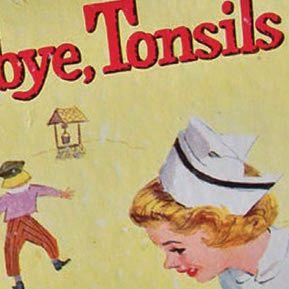
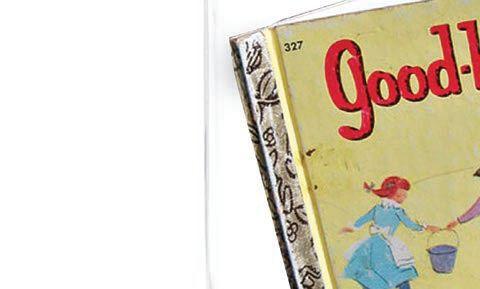

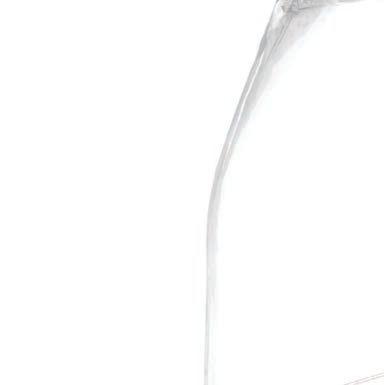


FRED HILTON spent 36 years as the chief public relations officer/spokesman for James Madison University in Virginia and 10 years prior as a reporter and editor for The Roanoke Times in Roanoke, Virginia. He is now happily retired in The Villages with his interior designer wife, Leta, their Cadillac Escalade golf cart, and their dog, Paris. (Yes, that makes her Paris Hilton).
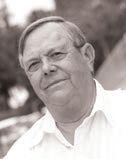
12 // HL // MARCH 2014
Sources: “What do tonsils do and why would we take
by Dr. Christopher Johnson. KevinMD.com. August 19, 2011. www.kev inmd.com/blog/2011/08/tonsils.html; “Do you need your tonsils?” MachinesLikeUs.com. March 12, 2008. machineslikeus.com/news/do-you-need-your-tonsils; “Do You Really Need Your Tonsils?” HealthyAndSimple.com. August 8, 2011. www.healthyandsimple.com/2011/08/do-you-really-need-your-tonsils/;
them out?”
Medical mysteries

MARCHIS DVTAWARENESSMONTH IS ENESSMONTH Samuel P. Martin - MD, FACS Vascular Surgery/Phlebologist Founder and Medical Director Vascular Specialist Daniel L. Arnold - MD FACS Board Certified General Surgery Vascular Specialist Hugo V. Hart - MD, FACS Board Certified General Surgery Vascular Specialist We specialize in the non-surgical treatment of Varicose Veins • Spider Veins • Skin Changes • Venous Ulcers Tired, achy, heavy-feeling legs • Leg cramps • Swollen ankles legslove your again Serving Central Florida for over 12 years! ALL DOCTORS ARE MEMBERS OF THE AMERICAN COLLEGE OF PHLEBOLOGY MOST INSURANCES ACCEPTED INCLUDING MEDICARE Six Central Florida locations including Orlando, Kissimmee, Lake Mary, The Villages – GOLF CART FRIENDLY, Waterford Lakes and Davenport 1.877.244.8558 www.BestVeinTreatment.com eling • Leg cramps Q: What is DVT? A: DVT (Deep Vein Thrombosis) happens when a clot forms in the deep vein system which carries the blood out of the legs. We cannot see or feel these veins. Some symptoms of DVT are swelling, dull, heavy pressure and pain. Be aware that a clot could also be ‘silent’, with no pain. This is why it is so important for you to have your legs checked at least once a year by a board-certified vascular specialist. Your risk for developing a DVT increases: • Long trips with little movement • Major operations • Family history • Cancer ASK THEDoc Samuel P. Martin, MD, FACS Skin ChangesVenous Ulcers Varicose Veins Spider Veins Extracranial Cerebrovascular Peripheral Arterial Peripheral Venous
According to the National Institutes of Health, alcohol-related assaults have hit
600,000 cases a year and alcohol-related deaths among college students have increased by 13 percent.
GIMME A BREAK!
In 2013, more than 20,000 fake IDs were confiscated in Panama City and Daytona Beach alone.
During last year’s four-week spring break period, more than
Duri r ng g las a t ye y ar a ’s foourur-wweeek k n brereak a pe periiod, moore r thahan
2,000 arrests occurred in Panama City and Daytona of individuals ages 15–21.
arrrest s s oc occu c rr r ed d in n Pa P nama Cit i y an and d Daytyton o a of indivviduals ages s 15––21 2
Ac A corddin n a U Univvers Wi Wisconnsiin n
According to a University of Wisconsin study, 75%
of college males and 43.6 percent of college females reported being intoxicated on a daily basis during spring break.

of colllege e ma 43.6 per e ceent n o fe f maalees rep be b in i g in intooxixic a da d illy y basis sppring g bre r
STAYING SAFE FOR SPRING BREAK
With spring break this month, high school and college students will head to Florida’s beaches to enjoy time away from teachers and tests. If you will be among the thousands looking for the ultimate vacation, follow these common sense tips to make spring break memorable rather than disastrous.
SEX AND VIOLENCE
• Avoid drinking too much alcohol. Overindulgence makes it easier to become a victim or a perpetrator of a sexual assault.
• Don’t let someone take you to an isolated location.
• Always walk with a friend and never alone. Also, do not leave with someone you just met.
• Never leave your drink unattended.
• Do not accept drinks from strangers.
HOTEL SAFETY
• Keep your hotel door locked at all times.
• Look through the peephole before answering the door. Do not open it for a stranger.
• Use the buddy system when leaving the room for any reason.
• Avoid leaving your valuables in the hotel room.
• Do not try to impress others by climbing on balconies or sitting on balcony rails. This can be fatal.
Source: gofl orida.about.com/od/ planningyourtrip/a/springbrksafety.htm
Source: dfnc.org/index.php?option=com_content&view=article&id=105:teens-and-spring-break-a-dangerous-mix&catid=42:familyparent&Itemid=167; goflorida.about.com/od/planningyourtrip/a/springbrksafety.htm; voices.yahoo.com/the-truth-spring-break-26735.htm
14 // HL // MARCH 2014 H / MA MARCCH H 2 20014 14
Matters
Spring safety / Local spin / Local health





NEW HEALTH FOOD STORE IN TOWN WITH EVERY DAY LOW PRICES! WITH THIS AD 10% OFF VITAMINS • HERBS • SUPPLEMENTS • ORGANIC • GLUTEN FREE • NON GMO • GROCERIES • LOCAL PRODUCE • ORGANIC WINE Not valid with any other offers. Expires March 31st, 2014 Enrollment for 2014-2015 has begun! Enrollment will continue until classes are full.
PEDAL TOWARD SAFETY
With near-perfect temperatures and low humidity, March is an ideal time to dust off your bicycle and enjoy the great outdoors. With plenty of back roads, rolling hills, and beautiful scenery, Lake County is a cycling paradise. However, whether you are a novice or experienced cyclist, there are certain rules you should follow:

• Always ride on the right side of the road and go with traffic flow.
• If you ride with a group, make sure everyone rides single file.
• Realize that traffic laws still apply to you. Obey traffic signs, signals, and lane markings.


• Stay alert and be aware of cracks, dips, railroad tracks, and other things that could cause you to lose control of your bike.
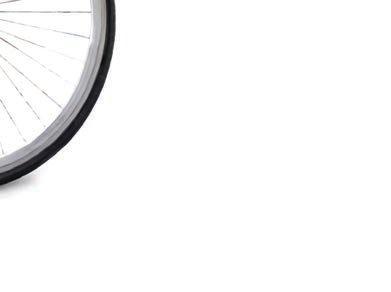
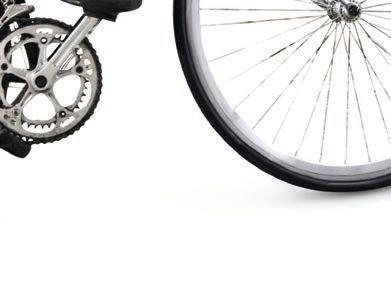



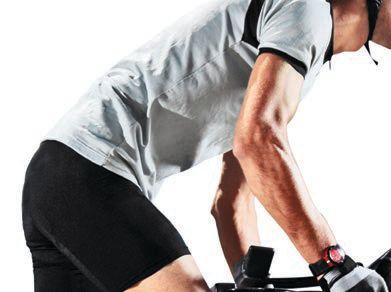
• Bring a cellphone in case of a flat tire or mechanical breakdown. However, do not use your cellphone while riding.
• Watch for parked cars. You certainly want to avoid a car pulling out or a door flying open.

• Consider wearing light-colored, reflective



























































door open. • clothing. •

• Always wear a helmet to avoid potential head injuries should you fall.





• Rather than riding around town, consider one of the numerous paved bike trails in Central Florida.
oridacyclinglaw.com/blog/archives/2010-fl


Source: floridacyclinglaw.com/blog/archives/2010-florida-bicycle-crash-statistics




















































































Matters
Local
/ Local
Spring safety /
spin
health
DID YOU KNOW?
In 2010, 4,610 Florida cyclists were involved in motor vehicle crashes and suffered non-fatal injuries.
16 // H // MA MARRCCH 20 2014 4
•
In cra
orida-bicyclecrash-statistics
Your partners for life
Miguel Bryce, MD, FACC, is our electrophysiologist. He specializes in heart rhythm disorders, and was the first electrophysiologist in our area, joining our practice in 2002. In the EP Lab, he uses the newest technology to diagnose and treat cardiac arrhythmias, performing EP studies and Cardiac Ablations. He has a vast experience in implantation of cardiac devices, such as Pacemakers, Implantable Cardiac Defibrillators (ICD’s), and Cardiac Resynchronization Therapy Devices (CRT’s). Dr. Bryce is well recognized by his colleagues, who trust the care of their patients and family members to him.
As one of the oldest private cardiology practices, Cardiovascular Associates of Lake County, we are dedicated to bringing innovations in cardiovascular care to our patients. Since 1992, we have been your partners for life

1879 Nightingale Lane, Suite A-1 and C-1, Tavares • 352.742.1171 LRMC Medical Plaza, 705 Doctors Court, Leesburg • 352.323.5700 CVALakeCounty.com
All class
Children whose parents are receiving life and job skills training, mentoring, and counseling services at the New Beginnings Learning and Development Center have a safe place to play on site thanks to the Leadership Lake Class of 2013.
The class, which graduated from the Leadership Lake program last May, donated nearly $7,500 for a commercial-grade playground at the Clermont-based New Beginnings. The new playground features a rock wall, slide, and swings.
DON’T JUST SIT THERE
A recent study published in the American Heart Association’s journal Circulation concluded that too much sitting increases the chances of heart failure. The 10-year study conducted by researchers at Kaiser Permanente followed more than 82,000 men between the ages of 45 and 69. The study concluded that men who sat five or more hours a day outside of work were 34 percent more likely to develop heart failure than those who spent two hours or less sitting.
At work, though, it is nearly impossible to avoid sitting. Therefore, here are a few
POUNDING AWAY THE POUNDS
Florida Hospital Waterman employees Kelly Dower and Samuel Jones were “Waterman’s Biggest Winners” at the end of a three-month weight loss competition. Fifty-five employees from the hospital shed a combined 430 pounds.
The competition lasted from Oct. 1 through Jan. 7 and ended with a special ceremony honoring all participants.
The class, comprised of 30 Lake County business and civic community members, conducted various fundraising activities to raise the necessary money.

“Our entire class was extremely enthusiastic and motivated to raise the money for this organization, which truly benefits the Lake County community,” says Rebecca Sargent, financial adviser with Edward Jones and president of the Leadership Lake Class of 2013.
workplace exercises you may want to consider.
• If feasible, walk or bike to work. If driving is necessary, park at the far end of the parking lot.
• Try to stand when necessary. For instance, you can stand while talking on the phone, or you can eat snacks or lunch while standing. And instead of calling a co-worker, consider walking to his or her desk.
• Take occasional breaks. Avoid the snack lounge and instead take a brisk walk or engage in gentle stretching.
• If possible, trade your office chair for a stability ball. You will improve your balance and tone your core muscles while sitting at your desk.
• Bring fitness equipment to work. You could easily store resistance bands in your desk drawer and then perform arm curls between meetings or tasks.
“The Monday weekly weigh-ins and the monthly lunch meeting support sessions helped to keep me on track,” says Dower, a respiratory therapist with Florida Hospital Waterman. “I also went to the employee fitness center every morning, trying new workouts to further my weight loss and get in shape.”
The goal of the competition was to help participants learn more about proper nutrition.
“The amount of employee involvement in this competition was tremendous, and we hope to achieve the same results in all of our health improvement initiatives,” says David Ottati, president and chief executive officer of Florida Hospital Waterman.
18 // HL // MARCH 2014
Matters
nstead of onsider esk s. nstead gage in or tasks Source: usatoday.com/story/news/nation/2014/01/21/sitting-disease-heart-failure/4661431/; mayoclinic.org/offi ce-exercise/art-20047394 Spring safety / Local spin / Local health
We Love to See You
“I spent years of my life not wanting to smile around others and not able to enjoy the foods I like. I was afraid to do anything about my teeth until Dr. Barr and his team gave me the support and enthusiasm I needed to overcome my fears. I am truly thankful to them because the work they did for me has put the light back in my life again. I now have confidence with a smile I want to share with everyone.”
 — Mitchell Barbe
— Mitchell Barbe
www.adambarrdds.com 980 Mt. Homer Rd. Eustis, FL 32726 352.357.7900
980 Mt H Rd
EMERGING FROM THE RUBBLE
LAKE COUNTY WOMAN PERSEVERES AFTER AN EARTHQUAKE IN HAITI SHAKES HER LIFE.

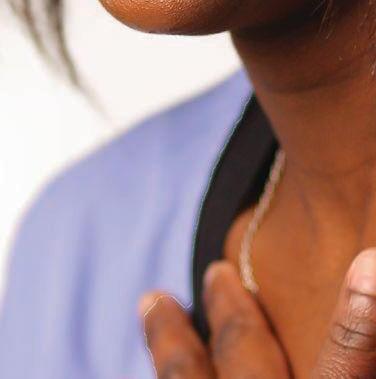
Lovely Dorleans leads what most people would consider a normal life. The 25-year-old Mount Dora resident lives in a nice apartment, drives a nice car, and is gainfully employed as a nurse.

For Lovely, though, the past four years have been anything but normal. Her life was forever changed on Jan. 12, 2010, while living with her grandmother in her hometown of Leogane, Haiti. On that tragic day, a powerful earthquake ravaged the country, killing 230,000 and leaving 1.3 million homeless.
The disaster claimed the lives of Lovely’s seven-yearold cousin and several close friends. She vividly remembers the heartbreaking scenes from the aftermath: people screaming in agony, enormous piles of rubble, dismantled shacks, and streets split in half. For three months, she slept in a makeshift tent without sheets or blankets. She was left with only the clothes on her back. Bathing or showering was impossible.
“That was a horrible day,”


she recalls. “I thought it was the end of the world and the end of my life.”

Instead, it was really just the beginning. While the earthquake crumbled cities and villages, she would not allow it to destroy her life.
Three months after the disaster, she came to the U.S. and ultimately ended up in Eustis to stay with a close friend of her mother’s. Although she had no money and spoke little English, Lovely was a strong-willed, independent woman who desired to make it on her own. She enrolled in English for Speakers of Other Languages (ESOL) classes at Lake Tech and began working toward her GED diploma.
“To repay the family for providing me with shelter, I would go to Lake Cares Food Pantry in Mount Dora and apply for food stamps,” she said.

That is where she met Irene O’Malley, executive director of Lake Cares. Each Saturday, Irene would drive Lovely to the pantry so she could assist with food distribution and
serve as a Creole translator. They formed a close relationship, similar to mother and daughter. Realizing that Lovely possessed untapped potential, Irene helped her enroll in Lake Tech to pursue a certified nursing assistant certification.

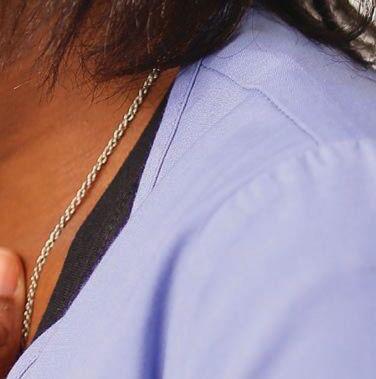
After graduation, Lovely worked two jobs at CVS Pharmacy and Waterman Village. “She did not have a car at the time, so I made her do direct deposit at a bank far away so she would not spend money foolishly,” Irene says


while smiling.
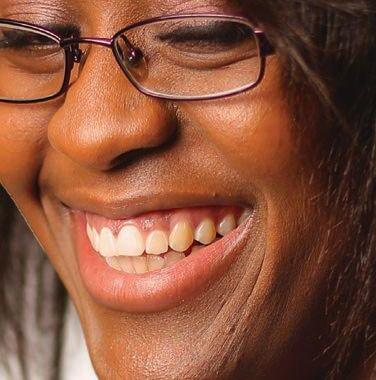
That plan proved effective, as Lovely saved enough money to rent an apartment and purchase her first vehicle — a 2003 Hyundai Santa Fe. She also landed her dream job as an emergency room nurse at Florida Hospital Waterman.
“The earthquake was horrible, but I wouldn’t change it because I emerged as a strong testimony to what God can do in a person’s life,” Lovely says. “I’m just happy to be alive.”
20 // HL // MARCH 2014
Healthy inspiration
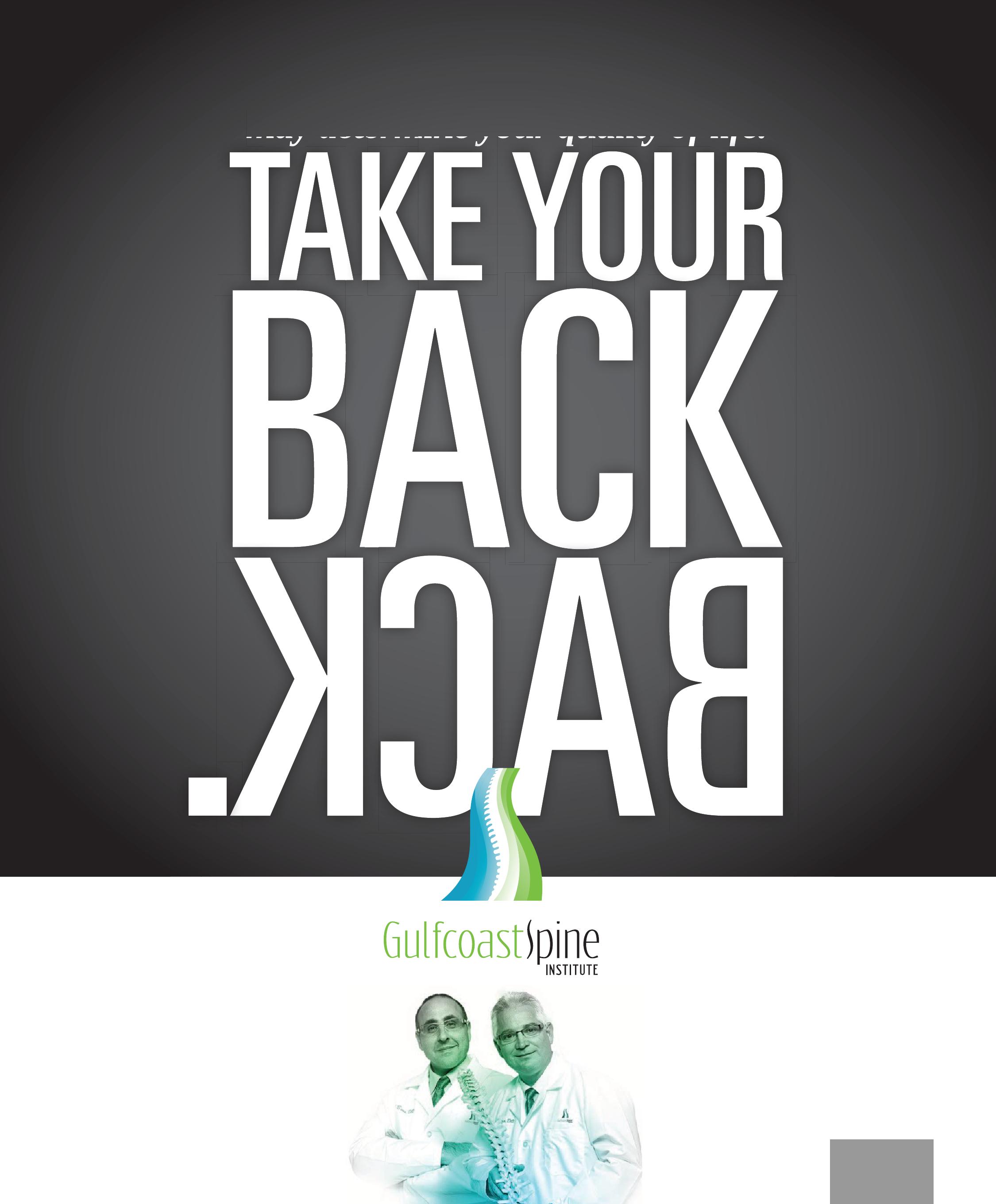
The experience of your surgeon may determine your quality of life. Call toll free 1-855-GULFCOAST (485-3262) www.GulfcoastSpine.com
DR. FRANK BONO Board Certified // Fellowship Trained
Locations in THE VILLAGES, TAMPA, INVERNESS, SPRING HILL MINIMALLY INVASIVE SPINE CARE MEDICARE ACCEPTED
DR. JAMES RONZO Board Certified // Fellowship Trained
I’m a strong believer in old-fashioned, quality health care. With more than 30 years of experience in the medical field, I define success as making a positive impact on the lives of patients, their families, and my employees. I make sure everyone who walks through these doors at Promise Hospital of Florida at The Villages receives the finest care and is treated with respect so THEY WILL HAVE THE BEST FIGHTING CHANCE FOR RECOVERY…






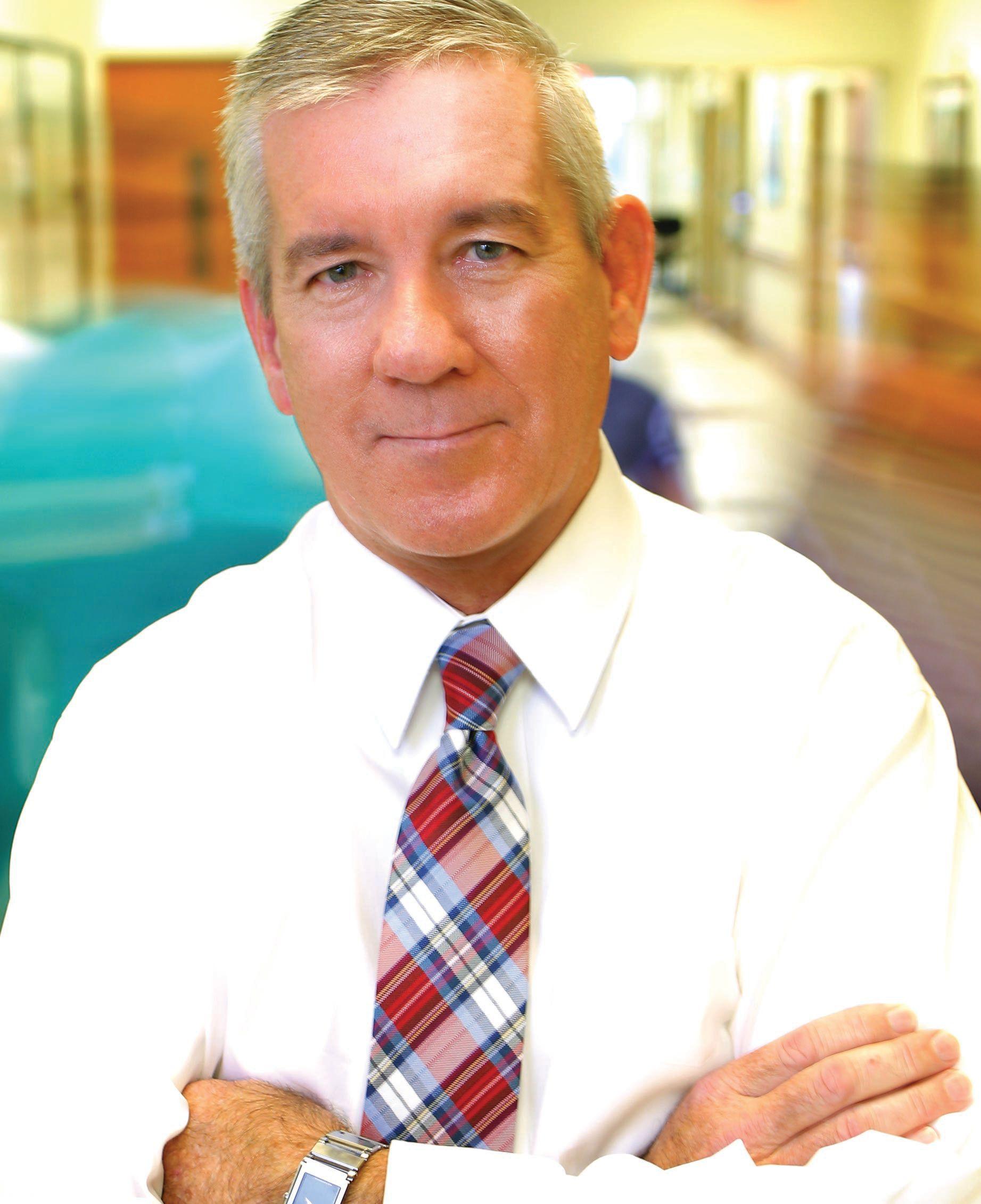

Promise Hospital have been amazing. The doctors are here every day.
are
for you as a person, and
a
5050 County Road 472, Oxford FL 34484 352.689.6400 // promise-villages.com
“The staff at
They
concerned
as
patient. They make me feel very comfortable.” — A PATIENT AT PROMISE HOSPITAL
— Patrick Ryan, CEO
Jason A. Boardman, M.D., FACS Chief of Surgery South Lake Hospital

After completing surgical training, Dr. Boardman served for four years in the U.S. Army where he received multiple military honors in 2005. After his time in the Army, Dr. Boardman relocated to Clermont to begin his career in private surgical practice. He joined Mid-Florida Surgical Associates in 2010.
Dr. Boardman specializes in general surgery with an interest in breast disease, vein treatments, and minimally invasive surgery and an emphasis on oncological procedures for breast and colon. Along with Dr. Johnson, Dr. Boardman offers patients the latest in minimally invasive surgeries, utilizing both the da Vinci robot and TIF (transoral incisionless fundoplication), a procedure used to treat acid reflex disease.
Dr. Boardman is highly respected in the community and serves as the president of the Lake-Sumter Medical Society. He is chief of the South Lake Hospital Foundation Board, board certified by the American Board of Surgery, and is a fellow of the American College of Surgeons. The Florida Medical Association has also recognized him for his leadership, and he has been named “One of America’s Top Surgeons” by the Consumers’ Research Council of America.
Dr. Boardman is married to Dr. Mary Beth Lewis-Boardman. They have two children: Annabelle and Sam. In his spare time, he enjoys traveling and playing golf.
P 352.243.2622
Fax 352.243.6277
24 // HL // MARCH 2014
1804 Oakley Seaver Dr. Suite A Clermont, FL 34711
INSTITUTE OF CARDIOVASCULAR EXCELLENCE inside the cath lab what makes ours different LIMBSTITUTE COMPREHENSIVE VEIN CARE AND LIMB SALVAGE in step with a cardio waltz program
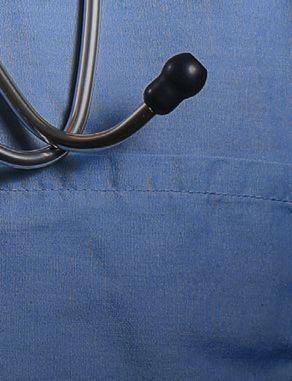



Dr.Donald Liebelt


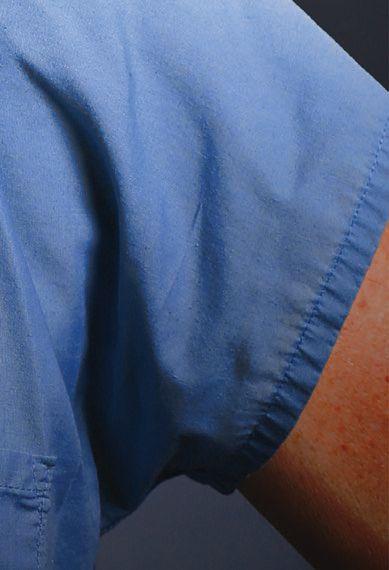


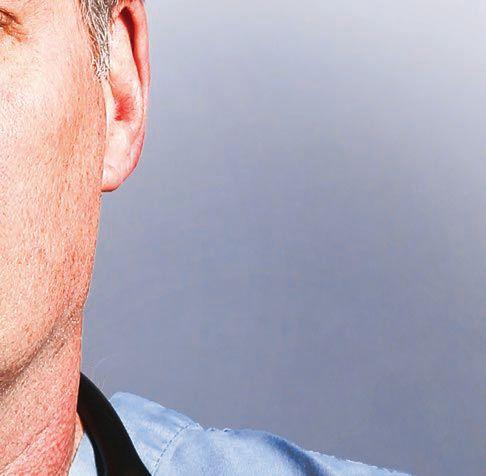
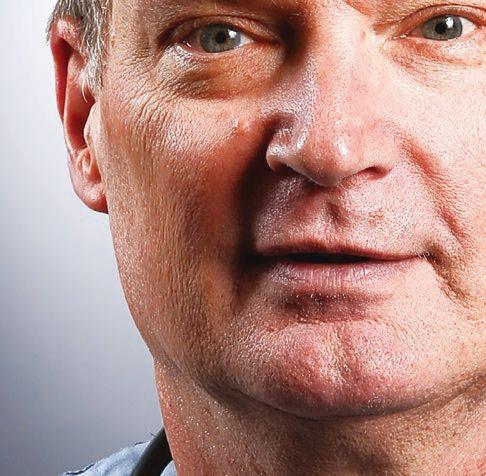





A SERVICE OF ice MARCH 2014 ISSUE www.ocalaice.com
newest
of
The
member
ice
May we have this dance?
Thisissue of IMPULSE shines aspotlighton the benefits of dance—from the intricate moves performed bythe skilled staffwho perform catheterizationproceduresinourcathlabs at ICE toyes, actual dance—asin, CardioWaltz.
Here at the Institute of Cardiovascular Excellence we are fortunate to be able to provide ourpatients withtheverylatestinproventechnologies and advanced medicalequipment. Butstate-of-the-art machines,whileimportant, are onlyhalf of the equation. People are the otherhalf andwe are blessed tohave the supportof aremarkable team of medicalprofessionals notonlyinourcathlabs but throughout the Institute aswell.
As nice as our staffis, I knowmost peoplewould preferto neverhave to meetthemunderthose circumstances. Onewayto stayoutof the cathlab is to commit to aregularexercise regimen. Nothing newthere. Butwaltzingyourwayto fitness? That is new. CardioWaltzis aprogramthatinjects a healthydose of funand socialinteractioninto exercise.Thoseinneed of somethingdifferent or who justcan’tfind anexercise programtheylike wellenoughto stickwithare discoveringthehealth benefits of Cardio Waltz. Studies show that dance improves balance, strength, stamina—and mostof allit’s fun. Seeyouonthe dance floor!

Yours,
Our cath lab can
It’s called the Cardiac Catheterization Lab but it is so much more than that. Not only does it perform Left and Right Heart Catheterizations, the lab also does Carotid Artery Angiography, Cardioversions, TEE’s, IVC filter placements, Lower Extremity, Visceral, Renal and Subclavian Angiography and Interventions. We treat Peripheral Arterial Disease with angioplasty, atherectomy, stenting or thrombectomy. Peripheral Venous Disease with Radiofrequency Ablation, Laser, and Sclerotherapy among other procedures.
We continually upgrade equipment and technology to keep them all state-ofthe-art. A full complement of the latest hemodynamic monitoring, procedural and nursing documentation software and imaging/ archival systems are the newest additions to the list. But critical as having the latest equipment and technology is, it’s important to realize that a cath lab is much more than the sum of its state-of-the-art parts.
The hands prepping the procedures and ultimately using all that equipment are the real secret behind getting a superior result. Good news for our patients—the professionals in our ICE cath lab are all “old hands” at achieving success no matter how challenging the procedure. The team has grown from 6 in the early years to 30 today and they’ve
Asad U. Qamar, MD

 FACC, FCCP, FSGC, FACP, FSCAI Cardiologist
FACC, FCCP, FSGC, FACP, FSCAI Cardiologist
INNOVATION • COMPASSION • EXCELLENCE
There are 2.7 million cardiac caths performed in the US each year.
put ice on it.
“Dancing can be magical and transforming. I’ve seen many patients fall in love with dancing and greatly improved their quality of life without even realizing they have adopted an exercise regime.”
— Dr. Asad Qamar
// INSTITUTE OF CARDIOVASCULAR EXCELLENCE //
1912
ADVERTISEMENT
Frizt Bleichroeder records the earliest procedures of cardiac catheterization on humans without x-ray imaging.
worked together so long— many for over fifteen years— that they operate as a singleminded unit, anticipating and complementing one another day after day. At the head of the team, Dr. Qamar sets the example: work hard and serve your patients with your best knowledge and a singleminded devotion. As a result, patients who come to ICE requiring a catheterization can be assured they will receive the very best care possible from a team of experts unsurpassed in both their skill levels and their compassion.
So, while the equipment in our ICE cath labs is the

very definition of state-ofthe-art and we are justifiably proud of that, the skilled team of people who put that equipment and the technology to use deserves equal credit. The Board of Medicine at the Florida Department of Health agrees. They have licensed the facility and staff of ICE as a Level II Office Surgery Center because we meet or exceed standards of care required to perform outpatient surgical procedures. That means, whatever needs to be done to repair or maintain a healthy cardiovascular system—the cath lab at ICE can do it.
Dr. Don Liebelt has been on both sides of the hospital bed. Much of his youth was spent in doctors’ offices dealing with a congenital foot problem. “I had to visit a doctor every two months from age 12 to age 20... and most of those visits involved two hours in the waiting room prior to being seen…Obviously, we can’t guarantee timeliness. You never know how sick a patient is or how much time an individual is going to need. But I am very sensitive to patient wait time.”
Dr. Liebelt practiced in clinics and hospitals in Georgia and Florida, before finally finding a ideal fit with the team at The Institute of Cardiovascular Excellence. “Being associated with a top notch cardiovascular group was a key factor when I was first considering coming on board with ICE. They clearly have a philosophy where the patient comes first.” Here at ICE as well as at Dr. Liebelt’s previous practices, Dr. Don employs a highly personalized approach to patient care. “One of the things that I think I do well is listen carefully to my patients. Hidden in their description of symptoms are clues that can often be the only thing that gives you a sense of what the real problem is. I try to take the ‘Sherlock Holmes’ approach … combining facts, test results, symptom clues and logic to get to the diagnosis.”






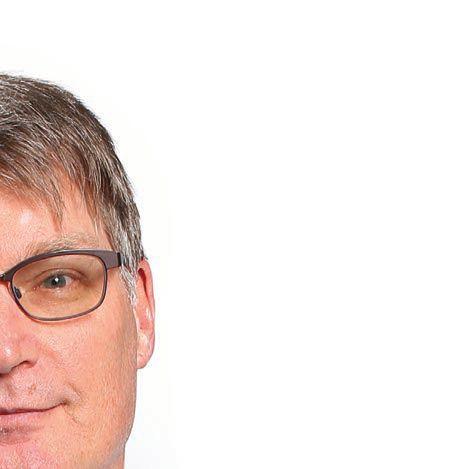
Dr. Don Liebelt is a perfect addition to the family at ICE. Not only is the way he practices modeled deliberately on the Golden Rule—“My philosophy… is based upon how I would like my own family to be treated.” It also happens to fit beautifully with the vision behind The Institute of Cardiovascular Excellence. As it turns out…“It’s one of many reasons I joined ICE.”
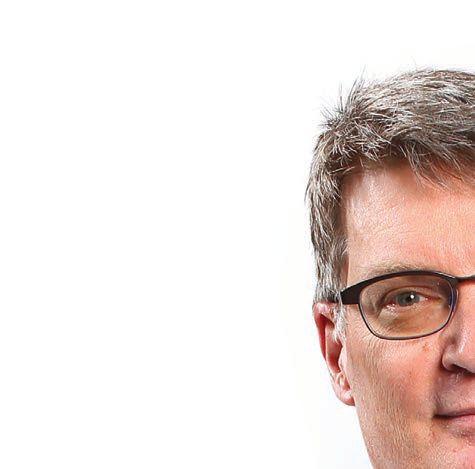
// INSTITUTE OF MEDICAL EXCELLENCE //
Donald Liebelt, MD specializes inthe “golden rule.”
“In my opinion, a good physician is as much a teacher as a diagnostician and care manager“
—Dr. Donald Liebelt
ADVERTISEMENT
X-ray of cardiac catheterization
“Cardio Waltz” is what it’s called and it is the latest fitness craze to get people up and off the couch. Why all the talk? Probably because gliding across a dance floor with a partner in your arms beats pounding out miles on a treadmill any day. Cardio Waltz is more fun. It’s more social. And the best part? It actually works!

Waltzing burns about 380-400 calories an hour. Not necessarily enough to create a major change in health, but it’s certainly enough to maintain it. An Italian study tracked patients for eight weeks through a rehab program. Half waltzed their way through it, while the other half spent their time on a treadmill. Objective testing at the end for oxygen consumption, vital capacity and ventilation capacity showed more substantial improvements in the dancers.
Cardio Waltz is not as easy as it sounds. Holding frame, supporting a partner, and flexing those quads gives you a real workout. Balance improves. Strength increases. Self-confidence grows. But perhaps the real secret to why Cardio Waltz delivers outstanding results is because it’s enjoyable. The more you like something, the more likely you’ll continue with it.
// THE LIMBSTITUTE //
It’s as simple as 1-2-3, 1-2-3…
INNOVATION • COMPASSION • EXCELLENCE put ice on it. ADVERTISEMENT Feel like hitting the dance floor? Dr. Ferns will begin a new Cardio Waltz Program in the spring! Drop a line to Cardiowaltz@gmail.com for more information. A AD D DVE V E R RT T RTI RTIS TIIS S I E M MEN EN N EM E ADVERTISEMENTT ple as Ocala 4730 SW 49th Rd. // 352.854.0681 Tavares 2754 Dora Ave. // 352.259.5960 Summerfield 10435 SE 170th Place // 352.233.4393 Williston 412 W. Noble Ave. // 352.528.0790 The Villages 1050 Old Camp Road // 352.259.5960 The Villages 1950 Laurel Manor Dr., Bldg 240 // 352.509.9295 ocalaice.com // limbstitute.com

LAKEHEALTHYLIVING.COM // 29 352.742.6809 2445 Lane Park Road, Tavares, FL 32778 cornerstonehospice.org seriousillness.org/cornerstone Lic. #5019096 "It's about Living!" PROFESSIONALLY DESIGNED & CUSTOMIZED TO MEET ALL YOUR HOME ORGANIZATION NEEDS WALL BEDS • HOME OFFICE • CUSTOM CLOSETS COMPLETE GARAGE STORAGE • CABINETS • ACCESSORIES WILDWOOD OAKS PLAZA • 9813 N. U.S. HWY. 301 • 2 MILES SOUTH OF HWY. 466 WWW.CUSTOMHOMECLOSET.COM VISIT OUR SHOWROOM 352-748-9181 Impressive changes… You deserve it! Gre r n g and Deninise B Beerl r in JETTA-STONE MADE LOCALLY IN WILDWOOD, FLORIDA! Located on HWY 301 • 368 Shopping Center Dr. Wildwood, FL 34785 HOURS: MON-FRI 9-5, SAT 9-4 352.539.0220 www.WKandB.com *INQUIRE FOR DETAILS SAVE $500 on any granite, cabinetry or Jetta-Stone Shower installation over $5,000*

Ray D. Maizel, M.D. Shawn C. Wilker, M.D. Call 888.820.7878 or 352.735.2020 to schedule your appointment! Find out more information online at MidFloridaEye.com Leading – Edge Treatments Of Macular Degeneration Diabetic Retinopathy
Mid Florida Eye Center is giving patients new opportunities for restored sight
Retinal diseases—such as macular degeneration, retinal detachment, and diabetic retinopathy—can be debilitating.
For decades, Mid Florida Eye Center has paved the way for new treatment options, giving patients more opportunities for restored sight.
Mid Florida Eye Center’s dedicated Retina Institute, led by Lake County’s first retina specialist, Dr. Ray D. Maizel, has been selected for high-profile clinical research trials.
Now, with the addition of retina specialist Dr. Shawn C. Wilker, the institute is set to bring additional breakthrough discoveries and treatments to patients in Central Florida.
ADVANCED OUTPATIENT VITREORETINAL SURGERY AVAILABLE HERE





Mid Florida Eye Center’s Surgery Center of The Villages offers advanced vitreoretinal surgery on-site. Both Dr. Maizel and Dr. Wilker perform this revolutionary surgery in a convenient, pleasant outpatient setting.
Patients benefit from a faster recovery and improved comfort.
MACULAR DEGENERATION SPECIALISTS







The two Doctors are also available to provide leading-edge treatments to patients with retinal diseases such as macular degeneration, retinal detachments, and diabetic retinopathy.
Recognized as one of the nation’s leading eye care centers. A local, community-focused practice for more than 25 years.
Visit Mid Florida Eye Center’s Retina Institute to learn how Advanced Outpatient Vitreoretinal Surgery and other recent breakthroughs could change your life.
|
NEW LOCATION: Mid Florida Eye Center The Villages/Santa Fe Crossing 8630 E. CR 466, Suite A SantaFeCrossing ProfessionalCenter CR466 441 27 MORSE BLVD. BUENA VISTA BLVD. R O L L N G A CRES RD THE VILLAGES/STONECREST • THE VILLAGES/SANTA FE • MOUNT DORA • LEESBURG • APOPKA
Board-Certified
Fellowship-Trained | Participating Medicare Provider Two Surgical Locations | Five Office Locations


MEDICAL EMERGENCIES
HEART ATTACK
KEEP YOUR TICKER TICKING
Dr. Omar Shams, an electrophysiologist with Heart of The Villages, shares some important tips in the event of a heart attack.
1) Call 911 immediately. Let them know what your symptoms are. This will help expedite getting you to the hospital and necessary treatment.
2) Don’t delay treatment by taking other medications and seeing if you feel better. Time is muscle, which means the heart muscle is being deprived of oxygen. The faster you are treated the less damage you’ll suffer to your heart. It’s better to be safe than sorry. Delaying treatment can potentially be deadly.
3) Take a 325-milligram aspirin. You should chew the aspirin instead of swallow. When you chew aspirin it absorbs in your mouth and takes effect quicker.
4) Do not attempt to drive yourself to the hospital.
5) Try to remain calm and do not overexert yourself while waiting for medical help to arrive. This can worsen the damage.
TIP FROM DR. SHAMS:
“Always carry a list of medications you are taking in your wallet or purse. The list should also indicate any medications that cause allergic reactions. This ensures medical professionals will treat you safely and effectively.”
SPOTTING A STROKE
DANGER: POISON
The Mayo Clinic advises following these steps while waiting for help to arrive when someone has been poisoned:
• If the person has been exposed to poisonous fumes, get the victim into fresh air immediately.
• If the poison is a household cleaner or other chemical, read the label and follow instructions for accidental poisoning. If you cannot identify the poison, or if there are no instructions, call the National Capital Poison Center at 800.222.1222.
• If poison has spilled on the skin or in the eyes, flush with cool or lukewarm water. Remove any clothing where the poison may have spilled.
• If the victim is not breathing, begin CPR.
• Take the poison container (or any pill bottles) with you to the hospital.
“A stroke damages brain tissue, and there is a small window of opportunity where therapies can reverse the effects of a stroke,” says Dr. Shams. “Seek medical help immediately if you have symptoms such as weakness on one side of the body, changes in vision, difficulty walking, loss of balance, or inability to speak.”
DROWNING
KEEP YOUR LIFE AFLOAT
Lt. Brian Gamble, an emergency medical technician (EMT) with Lake County Fire Rescue, explains how to perform CPR on a drowning victim. He uses the Compression-Airway-Breathing (CAB) model, which was implemented by the American Heart Association in 2010.
1) Make sure the scene is safe. For instance, someone may die in a bathtub due to electrocution.
2) Determine the victim’s level of unresponsiveness.

3) Call 911.
4) Determine if there are signs of circulation. For example, check for a pulse in the neck.

5) Begin compression only if there is no pulse. Center your hands two fingers above the bottom of the ribcage, performing compressions with the heel of your hand.
6) Perform one compression per second for a total of 30 compressions.
7) When finished, tilt the victim’s head and lift his chin. See if there are signs of breathing. If the victim spits up water, turn his head to the side so water does not re-enter his lungs.
8) If there are no signs of breathing, pinch the victim’s nose and place your mouth on the victim’s mouth. Give two breaths by breathing in and exhaling.
9) If this is ineffective, perform 30 compressions again.

34 // HL // MARCH 2014
FALLS
IF YOU’VE FALLEN AND CAN’T GET UP…
The best thing to do is call 911. Wait for help instead of trying to force yourself to stand. Try to get into the most comfortable position possible until help arrives.
IF YOU ARE ON FIRE:
FANNING THE FLAMES
“Stop, drop, and roll to distinguish the flame,” according to Chief Jack Fillman of Lake County Fire Rescue. “Don’t run because that will add additional oxygen to the fire and intensify the burning.”
IF SOMEONE ELSE IS ON FIRE: “Make sure to get them on the ground and then smother the flames with a blanket, towel, or water and call 911,” he says. “If it is possible, gently remove burned clothes, but make sure the clothing does not stick to the skin. If it does, then keep that burned area cool and wet until medical personnel arrive.”

HEAT EXHAUSTION
If you have symptoms of heat exhaustion, such as rapid heartbeat, profuse sweating, and headache, here are some important steps to remember.
• Get to an air-conditioned room or a cool, shady place as soon as possible.
• Drink lots of fluid but avoid alcohol and caffeine.
• Take a cool shower or bath.
• Utilize fans, ice towels, or other cooling items.
• Remove tight and unnecessary clothing.
CHOKING
BREATHE EASIER
Lt. Brian Gamble explains how to perform the Heimlich maneuver if someone is choking.
1) Make sure the person is choking before you attempt to help him. It is considered battery if you try to help someone who does not want help.
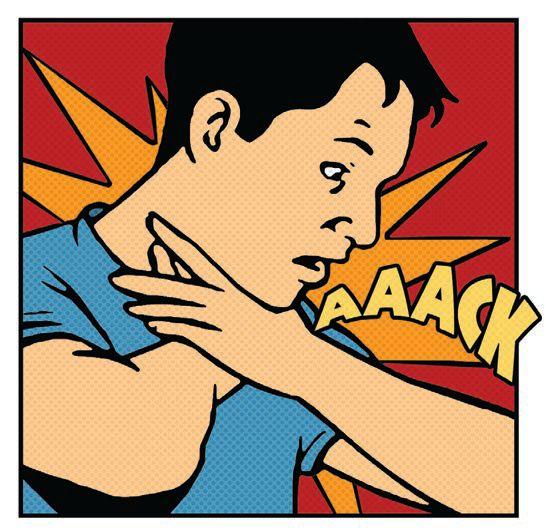
2) Make sure someone calls 911.
3) Help the victim stand upright and stand behind him. Center one of your legs behind the victim’s buttock, and put your other leg behind you to add support. In this position, you can catch the victim if he or she falls forward or backward.
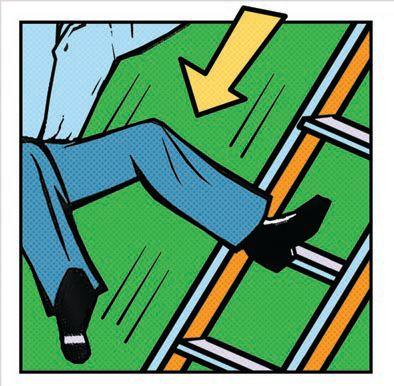
4) Wrap your hands around the victim’s belly and bring your hands together. The hand closest to the victim’s belly button should be made into a fist.

5) Pull or squeeze toward yourself in an upward motion.


6) Because the first set of abdominal thrusts is the most effective, make sure you perform the Heimlich maneuver properly. The more thrusts you perform, the more air you will knock out of the patient and the thrusts will become less effective.
IMPORTANT TIP:
Source: webmd.com/fitness-exercise/heat-exhaustion
Source: National Institutes of Health
LAKEHEALTHYLIVING.COM // 35
TIP:
Do not allow anyone to try to pick you up off the ground. This can be potentially dangerous and cause further damage.
“With extremely obese people and pregnant women, you should go above the belly button and perform a chest thrust. Also, if victims are talking or coughing, leave them alone because they still have an open airway. You can do damage if you perform the Heimlich maneuver when it is unnecessary.”
HOUSE FIRE
FIGHT FIRE WITH GOOD SENSE
It does not take long for home fires to spread quickly. Chief Jack Fillman offers four valuable tips in the event of a home fire.
1) “If the fire is contained to one area of the house, the first thing you should do is call 911. If there is lots of smoke and fire throughout the house, then leave the house immediately and have a neighbor call 911.”

2) “Do not try to determine where the fire is and put it out on your own. That is the job of trained professional firefighters. You may inhale too much smoke and possibly die from asphyxiation.”

3) “As you exit the house, stay low to the ground. You’ll breathe less smoke and poisonous air this way.”
4) “Do not attempt to re-enter the house and try to save valuables or pets. You may think you know the house inside and out, but when it is filled with fire and smoke you can easily become disoriented and lost. Nothing is more important than your life.”
According to FEMA, more than 2,500 people die and 12,600 are injured in home fires each year.
SINKHOLES
OVERCOMING THAT SINKING FEELING
In the event of a sinkhole, the International Association of Certified Home Inspectors recommends staying away from the affected area. It is also important to ensure the sinkhole is clearly marked by fencing, roping, or taping off the area. Remember, the property owner is liable if someone is hurt in the sinkhole. Never throw waste or garbage into the sinkhole because it could seep into the aquifer of your drinking water. Homeowners should also take photographs for documentation without getting too close to the sinkhole’s edges.

HURRICANES
SOFTENING THE BLOW

When a hurricane hits Central Florida, Lake County residents are not necessarily safer than those living along the coast, according to Rob Eicher, a meteorologist with FOX 35 News Orlando. He says inland counties are prone to surges, tornadoes, and flooding.
According to the National Oceanic and Atmospheric Administration (NOAA), inland fl ooding has been responsible for more than half of deaths associated with hurricanes and tropical storms since the 1970s. “Ignore the category number and pay most attention to how fast the hurricane is moving and where it’s coming from,” Eicher says. “Slow-moving hurricanes produce deadly fl oods, and hurricanes coming from the Gulf of Mexico produce massive tornado outbreaks. Those are your two biggest concerns if you’re living in an inland county.”
If floodwater enters your home, he cautions everyone to take basic precautions, such as washing hands with
From

boiled water and wearing rubber boots and waterproof gloves.
“Following one of the hurricanes that hit Florida in 2004, a man ventured into his floodwater-infested pool to clean out excess water and debris,” Eicher says.
“The floodwater was filled with bacteria, which entered a cut on the man’s thigh. Ultimately portions of his body became infected and had to be amputated.”
Source: BusinessWeek
36 // HL // MARCH 2014
NATURAL EMERGENCIES
FACT: THE ‘HOLE’ TRUTH:
2006 to 2010, the number of sinkhole claims to Florida insurance companies tripled.
RIPTIDES
THREE WAYS TO TURN THE TIDE
1) Do not struggle against the current, as this can leave you exhausted and increase your chances of drowning.
2) Swim parallel to the shore, across the current.
3) Float on your back and let the riptide take you away from shore beyond the pull of the current.
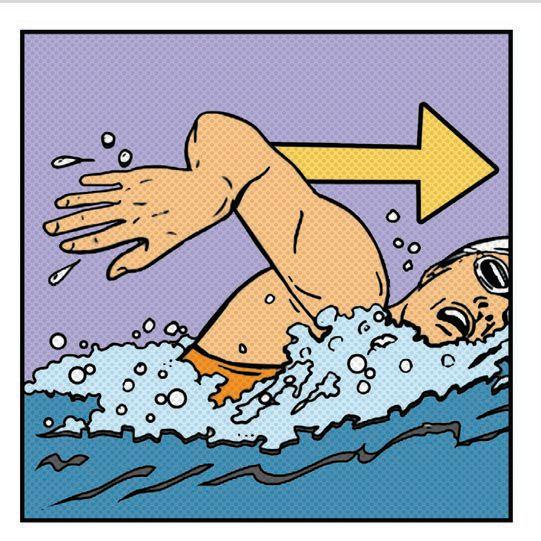

THE GRIP OF THE RIP:
Source: www.popularmechanics.com/science/1289281
STRUCK BY LIGHTNING
IF A FRIEND IS ROCKED BY A LIGHTNING BOLT…

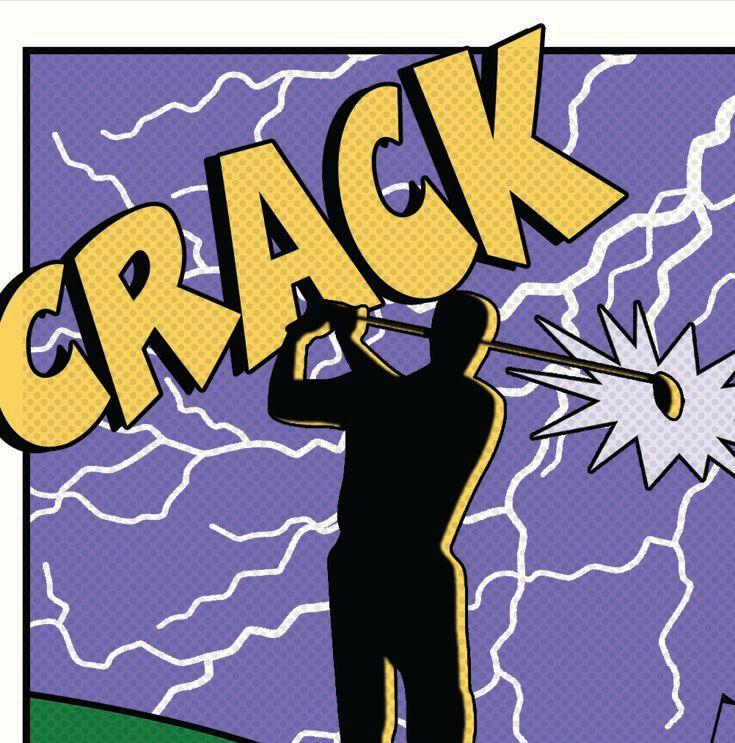
Here are three important tips:
• Move the victim to a safe location so neither of you is exposed to another strike.
• See if the victim is breathing and has a heartbeat because lightning often causes cardiac arrest. The best place to check is the carotid artery in the neck.
• If the victim is not breathing and has no heartbeat, begin administering CPR. Continue CPR until medical personnel arrives. If the victim is bleeding or burned, apply first aid to the damaged part of the body.
Source: emergencycareforyou.org/YourHealth/InjuryPrevention/Default.aspx?id=26196
TORNADOES
A TWIST TO SURVIVING
AT HOME: The safest place is the interior part of a basement. If your home has no basement, go to an area without windows, preferably a hallway, bathroom, or closet. Cover your head with a blanket, sleeping bag, mattress, or, if nothing else is available, your hands.
ON THE ROAD: Do not attempt to outrun a tornado. Stop your car. If there is no shelter nearby, lie flat in the nearest ditch, ravine, or culvert and shield your head with your hands.
Source: Centers for Disease Control and Prevention
HERE’S A SHOCKER:
Between 1959 and 2013, there have been 468 lightning-related deaths in Florida, more than any other state during that time period.
Source: lightningsafety.noaa.gov/stats/59-12_State_Ltg._Fatality_Map-rates.pdf
LAKEHEALTHYLIVING.COM // 37
Riptides are often less than 100 feet wide and usually subside 50 to 100 yards from shore.
ON LAND: “You should run away but do so in a zigzag pattern,” says Johnny Douglas of Wildwood, who spent 31 years as an alligator trapper. “Alligators run in a straight line for 30 feet and then they stop. Once you’ve gotten away, make sure to call the Florida Fish and Wildlife Conservation. If an alligator chases you on land — which is a rare occurrence — it has lost all fear of humans.”
IN WATER: “Be as still as possible at first and then slowly ease your way back to shore. If you move too quickly and start splashing, the alligator may recognize you as prey and begin chasing you. You cannot swim faster than an alligator. If the alligator attacks, the best defense is to poke its eye

SHARK ATTACK
WHEN SOMETHING SMELLS DANGEROUSLY FISHY
Remember these important steps if you are attacked by a shark.
• Attempt to hit the shark in its most vulnerable parts — eye, nose, and gills. If you are underwater, thrust your fist in a straight line to increase impact. Rearing your fist back creates more resistance underwater, thus decreasing the force of the blow.
• If possible, exit the ocean immediately if you are bitten. Blood may attract other sharks.
• When you are out of the water, apply pressure to the wound to control bleeding and apply a bandage. If the wound continues bleeding profusely, then apply a tourniquet. To make a tourniquet, loop a strap or belt over the affected limb, put a stick under the strap, and twist the stick until the strap tightens enough to restrict blood flow.
• Seek medical attention immediately because even minor wounds may become infected.
Source: traveltips.usatoday.com/survive-shark-attack-2474.html
GATOR -AID
WHAT SHOULD YOU DO IF AN ALLIGATOR APPROACHES YOU?
sockets with your fingers. Oftentimes, alligators will release their grip once you do this.”
A TIP FROM JOHNNY: “Don’t ever walk your dog next to the lake. Dogs are like prime rib to alligators. Throughout the years, I’ve trapped hundreds and hundreds of alligators that had attacked and killed dogs.”
FACT:
JELLYFISH ATTACK
TAKE
Rinse the bite area for 30 seconds with vinegar to deactivate the stinging cells. Next, soak the affected area in hot water for at least 20 minutes.
Source: webmd.com/first-aid/jellyfish-stings-treatment
We’re not trying to “pee” you off, but urinating on a jellyfish sting can increase pain and aggravate the jellyfish’s stingers into releasing more venom.
38 // HL // MARCH 2014
Some alligators use “death rolls” to tear apart their prey, making it easier to swallow.
‘URINE’ FOR A SURPRISE:
THE
STING OUT
SINK YOUR TEETH INTO THIS:
Of the 663 shark attacks in Florida between 1882 and 2012, only 11 were fatal.
File “You should run ” says socke allig SH ALLIGAT ANIMAL
Source: International Shark Attack
ATTACKS
BEAR ATTACK
BE ‘BEAR’Y AWARE

If you ever encounter a black bear, your first instinct will be to run. That’s a big mistake, according to Mike Orlando, who serves as assistant bear program coordinator for the Florida Fish and Wildlife Conservation
“If you run, you will trigger the bear’s chase reflex and predatory instincts,” he says. “Instead of running, you should make yourself look bigger by raising your arms above your head and waving. You can raise your voice at the bear, but avoid screaming because you may startle it even more. Also, continue keeping an eye on the bear without making direct eye contact because that is a sign of aggression.”
He says black bears may display certain warning signs, such as puffing its jaw, stomping the ground, or a bluff charge. “If the bear begins attacking, then you can get into the fetal position and cover your head with your arms. However, you should never play dead until a black bear actually attacks. If it continues attacking, then you have no choice but to fight back as hard as you can. Try to hit the bear in its head or eyes.”
Source: news.discovery.com/animals/zoo-animals/black-bear-attacks-north-america-110511.htm
SNAKE BITES
STRIKE BACK AT VENOMOUS WOUNDS
If you are bitten by a poisonous snake, the Florida Poison Information Center in Jacksonville recommends taking the following steps:

• Call 911 immediately.
• Lie down.
• Keep the bitten area at or below heart level.
• Remove jewelry or tight clothes covering the wound.
• Gently wash the wound.
• Do not make cuts around the bitten area.
• Do not apply a tourniquet.
SPIDER BITES
UNTANGLE A HAZARDOUS WEB
Anyone bitten by a poisonous spider needs to remain calm and still. Movement can increase the flow of venom into the blood. Cover the bite with a cloth and apply an ice bag to the bite. Seek medical care immediately, especially if severe symptoms occur throughout your body.
Source: webmd.com/a-to-z-guides/brown-reclusespider-bite

LAKEHEALTHYLIVING.COM // 39
SsssERIOUSLY:
If you attempt to suck venom out of the wound through your mouth, the poison can enter your bloodstream through cuts in the lips or gums.
Black bears have killed 63 people in North America in the last 110 years.
You never know when you’ll need a hero.
But when you do, we’ll be there.
Our masks may be medical and our capes actually scrubs, but the ER team at Florida Hospital Waterman and the brave first responders who support us — Lake EMS, our local fire and police departments, and the Lake County Sherriff’s Office — are heroes all. Ready to leap to your defense at a moments notice to save you from life’s unexpected turns. It’s good to know when you need a hero, we stand ready to answer the call.
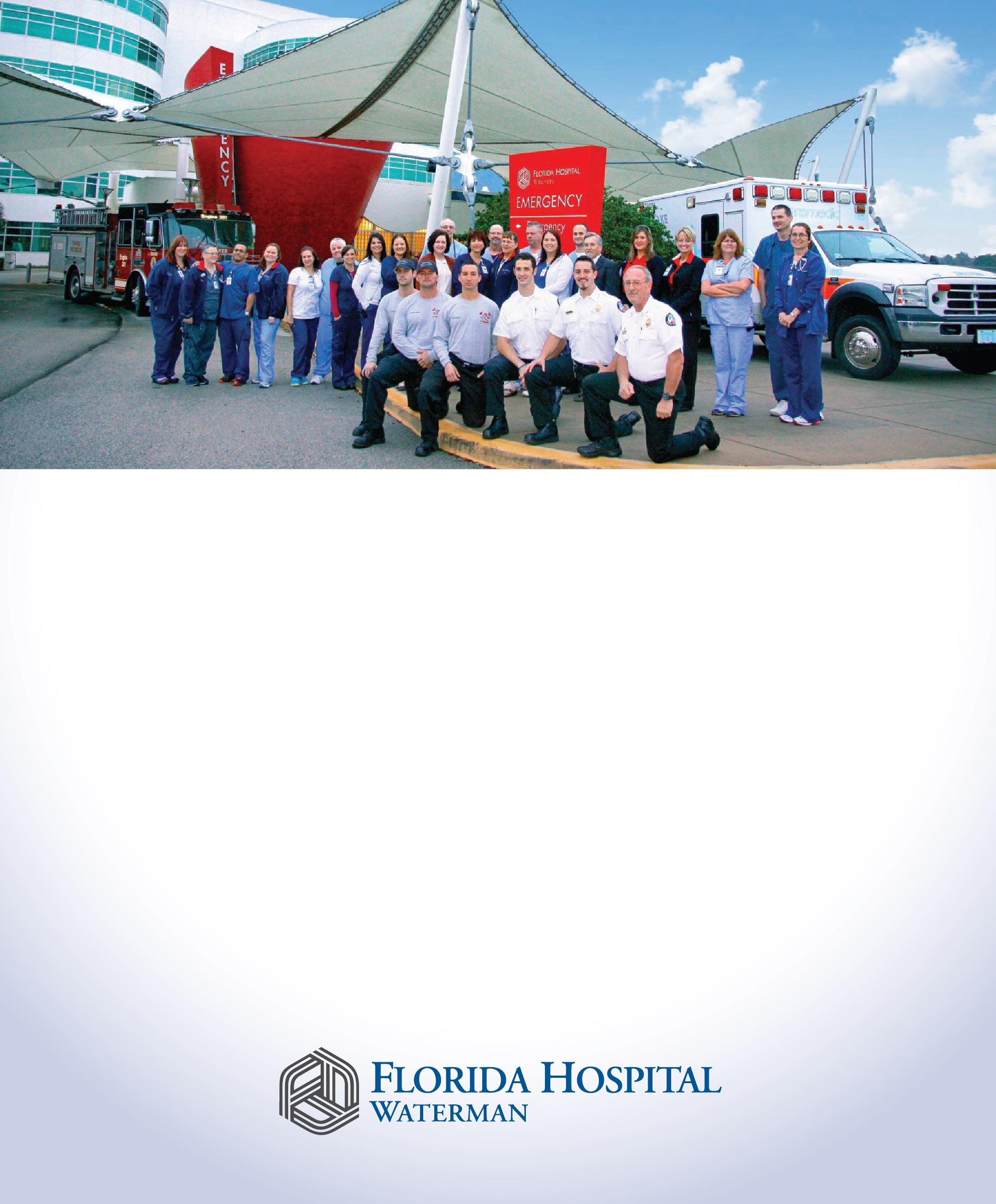
TheBIGcatch
TheBIGcatch


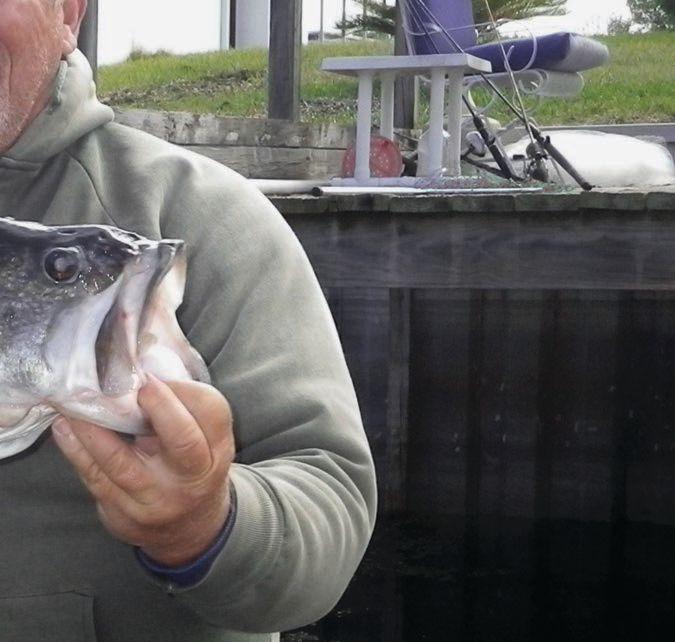



At 62 years old, David Chapman, of Grand Island, was stopped in his tracks when he began to experience chest pain severe enough to call 911. Lake Emergency Medical Services (EMS) was at his home within minutes, and confirmed that he was indeed having a heart attack.

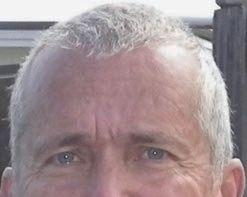
“When I arrived at the emergency room at Florida Hospital Waterman, they were ready for me,” David says. “I knew it was important to get help for a heart attack as quickly as possible, but I was blown away at how fast everyone jumped into action.”
Reducing Heart Damage

“Thanks to new advances in technology and collaboration between Florida Hospital Waterman and Lake EMS, we can now initiate diagnosis and preliminary treatment of heart attacks before a patient even arrives at the hospital,” says Siva Bhashyam, MD, interventional cardiologist at Florida Hospital Waterman. “This
saves critical time once the patient arrives at the hospital and can help reduce damage caused to the heart muscle.”
According to both the American Heart Association and the American College of Cardiology, patients who reach the cardiac catheterization lab within 90 minutes of having a heart attack experience significantly lower mortality rates.
“Once a patient arrives at the hospital, and is diagnosed, our goal is to get him or her to the catheterization (cath) lab for angioplasty or stent placement to help restore blood flow to the heart as quickly as possible,” Dr. Bhashyam says.“Every hospital tracks the time it takes to get patients to the cath lab for treatment. We refer to it as the door-toballoon time, and we continually look for ways to reduce that time.”
How the Process Works
“When we receive a chest pain call via 911, the patient is triaged and an ambulance is dispatched with priority criteria and lights and sirens,” says John Simpson, chief operating officer with Lake EMS. “An advanced life support work-up is completed with a 12-lead electrocardiogram (EKG), and if the paramedic believes that the patient is having a heart attack, we have the ability to transmit the EKG directly to the hospital from the field.” Transmitting the EKG directly from the ambulance to the emergency room not only allows the EMS and hospital teams to start working together to assess the patient, it also allows the hospital and cardiac cath lab to start preparing for the patient’s arrival.
“The key is recognizing the signs and symptoms and notifying the emergency room,” Simpson says.
“The partnership between Florida Hospital Waterman and Lake EMS to implement the field EKG program is resulting in improved doorto-balloon times and better patient outcomes,” says Pamela Jones, senior clinical data analyst for cardiology.


“Now, 98 percent of our heart attack patients receive treatment within 90 minutes, the best in Lake County.”
By recognizing the signs of a heart attack, and seeking care as quickly as possible, David is back to doing the things he loves like fishing and yard work. “My father had a heart attack at 62, and my grandfather died of a heart attack at 67,” he says. “Because of my family history, I knew I was at an increased risk, so I learned the signs and knew what to do. Thankfully the teams at Lake EMS and Florida Hospital Waterman were also prepared.”

SPECIAL PROMOTIONAL FEATURE
THE PARTNERSHIP BETWEEN FLORIDA HOSPITAL WATERMAN AND LAKE EMS HELPS IMPROVE HEART ATTACK TREATMENT TIMES.
future is promising at an LTAC hospital

42 // HL // MARCH 2014 H MA MARCRCH H 20 2014 14
SPECIAL PROMOTIONAL FEATURE
The
What is an LTAC hospital?

A long-term acute care (LTAC) hospital is like any other hospital except that LTAC patients require extensive care over longer periods of time with a variety of services. Medicare patients admitted to an LTAC hospital will have an approximate length of stay between 20-25 days determined by your physician and treatment plan. By comparison, the average length-of-stay in a short-term hospital is only 5-6 days. By design, LTAC hospitals are equipped to handle the needs of patients for longer periods of time, allowing for a patient’s gradual healing process to occur with the goal of returning to prior daily activity.
Depending upon your personalized physician-directed recovery plan and progress, discharge from an LTAC hospital is usually to a patient’s home, a nursing home, or a rehab or skilled nursing facility.
What type of patients go to Promise and where are they admitted from?
Patients at a Promise Hospital can be admitted for most illnesses or injuries that require continued hospitalization. The key areas of focus are respiratory, infectious disease and wound care. Some examples are: Acute Respiratory Failure — Vent Dependent, Congestive Heart Failure — CHF Exacerbations, Non-healing Wounds, Chronic Obstructive Pul-
monary Disease — COPD Exacerbation, Aspiration or Bacterial Pneumonia, Methicillin-Resistant Staph Aureus — MRSA Infections, Circulatory and Diabetic Ulcers, Osteomyelitis, Sepsis/Septicemia, Post Amputation Wounds, and Acute Respiratory Distress Syndrome — ARDS.
Patients most likely are transferred from intensive care units (ICUs), direct observation units (DOUs), or general medical and surgical beds in short-term acute care (STAC) hospitals because they require a longer hospital recovery period. Patients can also be admitted from home or directly from a physician’s office.
About Promise Hospital

Promise Hospital of Florida at The Villages is the area’s premier Long-Term Acute Care Hospital (LTAC). At Promise Hospital we use an interdisciplinary, team approach to treatment specifically



designed for patients who need a longer acute care recovery period. Patients benefit from our unique LTAC environment that delivers acute medical care and therapy services while maximizing our patients’ recovery options.
Promise Hospital’s interdisciplinary team approach to treatment is led by a select group of dedicated local physicians who are committed to providing quality patient care. Each patient’s treatment plan is individually designed to meet their specific goals in order to reach their maximum quality of life.
One of our goals is to make the referral process quick and easy. Promise Hospital’s team of area clinical evaluators will provide an on-site evaluation of the patient as quickly as possible to determine if they meet criteria for our unique level of care. We know that time is valuable and every minute counts when treatment is needed.
SPECIAL PROMOTIONAL FEATURE

THIS IS 911: WHAT IS YOUR EMERGENCY?


We’ve all seen emergency medical providers render care to the injured — whether it’s someone involved in a horrible traffic accident or your neighbor suffering a heart attack. Here is a closer look into the life of EMS crews.

LAKEHEALTHYLIVING.COM // 45
WRITER: JAMES COMBS PHOTOS: FRED LOPEZ
It’s 7:54p.m. My heart beats rapidly as Lake EMS paramedic Nicole Rowinsky delivers the exciting news.
“We have to go. We just received a call from dispatch about a woman experiencing abdominal pain and vomiting.”
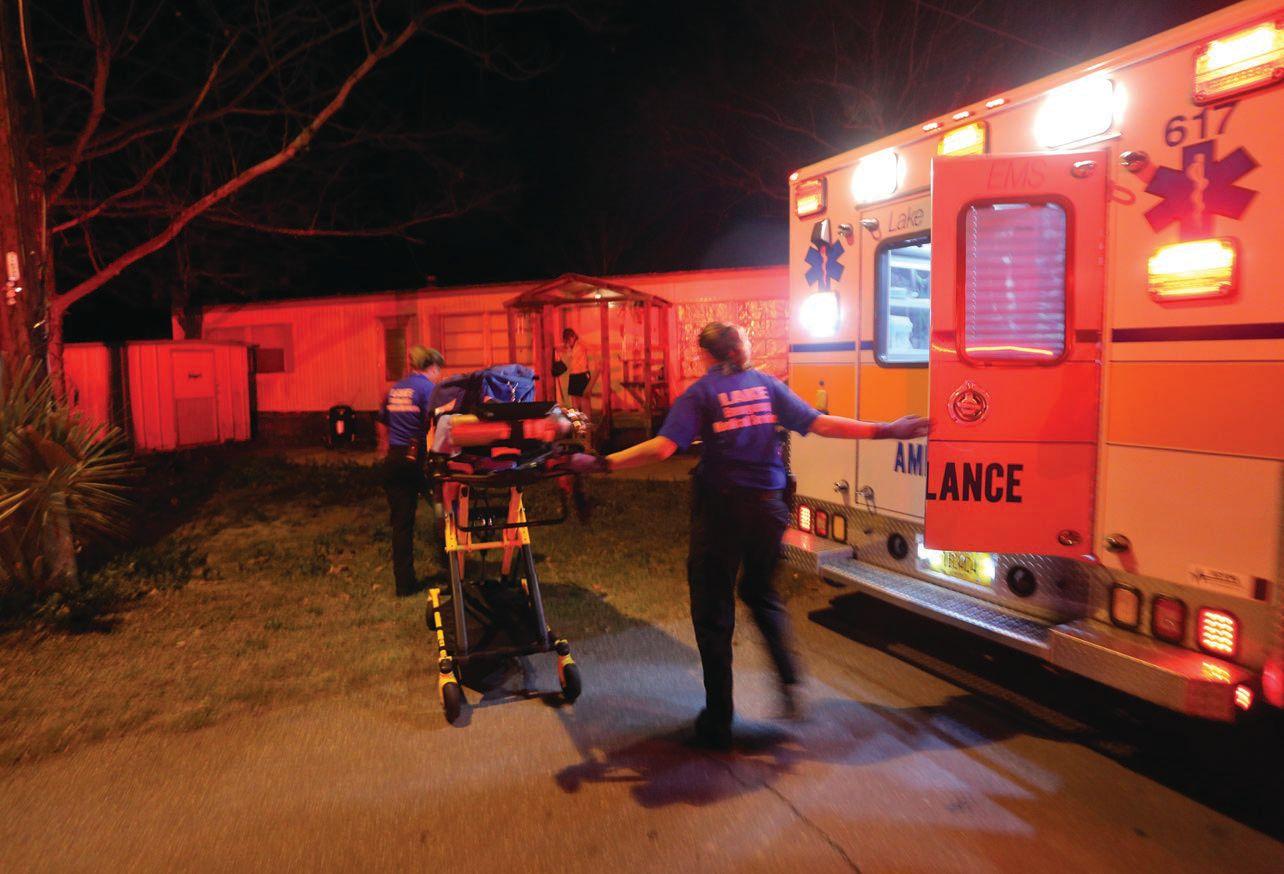
Normally, I would not consider such news to be exciting. On this evening, however, I am doing a ride along with Lake EMS to gain insight into the pressurepacked careers of paramedics and emergency medical technicians (EMTs).
I step into the ambulance and take a seat in the captain’s chair, which is situated in the rear compartment and faces backward. EMT Heather Hamlin drives on U.S. Highway 441 with lights flashing and sirens blaring. However, it is my visual senses that are captivated.
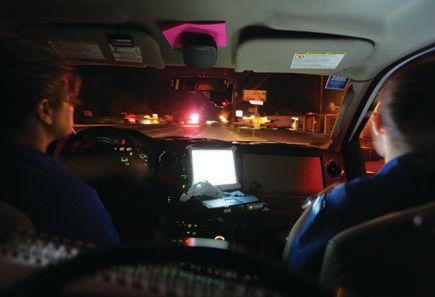
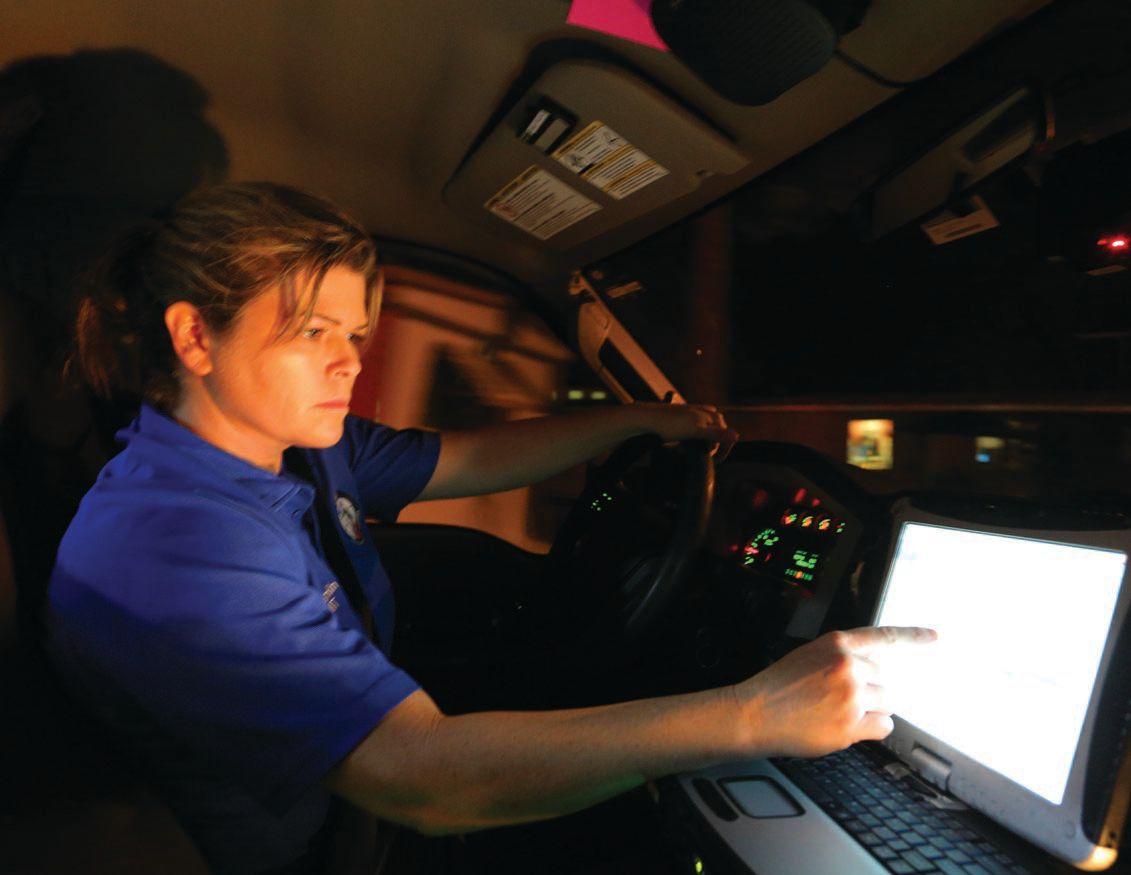
As I glance around the ambulance, it becomes obvious I am riding in a minihospital on wheels. I see an EKG machine, oxygen masks, intravenous fluid, rubber gloves, and bandages. There are also numerous narcotics that paramedics can administer intravenously or via injection — ketamine (a sedative), haldol (an anti-psychotic), and succinycholine (a paralytic).
The wail of the siren parts traffic like the Red Sea.
Heather drives at a safe speed of 55 miles per hour but wastes little time. We quickly arrive at the destination. Nicole and Heather unload the stretcher and roll it inside the patient’s home. They instruct me not to enter the home out of respect for the patient and her family. Porch
lights of nearby homes illuminate the night sky as neighbors step outside their houses and become curious onlookers.
Five minutes after arriving, Nicole and Heather load the patient onto the ambulance. I return to the captain’s chair and am sitting within in arms-reach of the patient. This is the moment when I realize paramedics and EMTs are much more than just ambulance drivers.
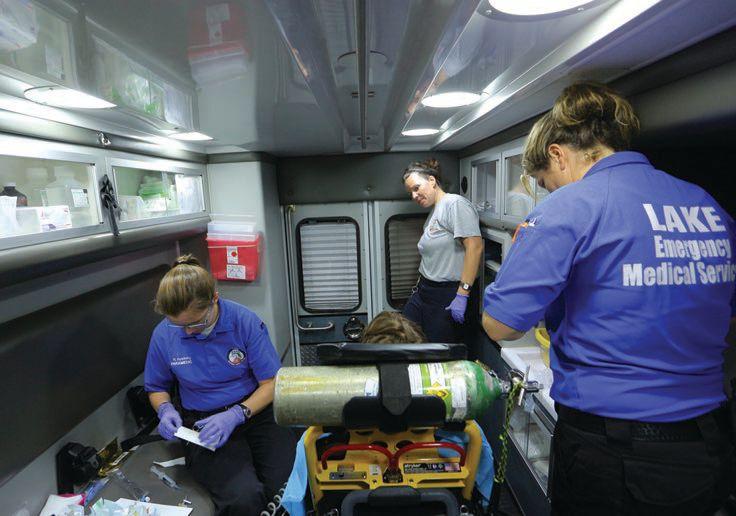
Nicole administers IV fluid and then attaches 12-lead cables to the patient, which allow her to observe blood pressure, heart rate, and other
important vital signs on a monitor. The patient begins dry heaving and breathes heavily. Nicole gives her oxygen.
The woman vomits into a bucket several times.
“Can you please give me a shot?” she asks Nicole.
Nicole injects Zofran, an anti-nausea drug, into the woman’s deltoid muscle. Within minutes, she stops vomiting. This allows Nicole to continue completing her patient care report using an electronic, touch-screen computer. “Take nice, deep breaths,” she instructs the patient in a reassuring voice.
“Breathe in through your nose and out your mouth.”
Seconds later, Nicole reaches for a radio to alert Florida Hospital Waterman’s emergency room of their impending arrival.
“Medic 241 inbound nonemergency with an ALS patient. We have a female with chief complaints of vomiting, nausea, and abdominal pain. There are no abnormalities to the EKG. All other vital signs are normal. See you in about five.”
I ask Nicole why we’re going to Florida Hospital Waterman. “If situations are not life-threatening, we take patients to the hospital
46 // HL // MARCH 2014
of their choice,” she informs me. “If a situation is life-threatening, then we take the patient to the closest hospital.”

We arrive at 8:27p.m. Nicole and Heather unload the stretcher and roll the patient into the hospital. Heather comes back out and begins thoroughly cleaning the stretcher with disinfectant. After all, the next call could come at any moment.
“I clean the stretcher to the best of my ability,” Heather says. “I treat it as though a family member or best friend will be the next one on that stretcher.”
We leave the hospital at 8:49p.m. and return to the station.
STATE OF READINESS

For me, one of my biggest concerns is wondering how I can conduct my job efficiently while staying out of the way and not upsetting patients and their families. As it turns out, that does not become an issue.
“Some days, we are so busy that we don’t even see this station,” Nicole says. “Other days, we are not very busy at all.”
Feb. 5 is one of those “not” days. There were only two other calls that evening — one was for a woman experiencing chest pains, and another call was for a suicidal female teenager that was ultimately cancelled. However, the lack of emergency calls allows

me to spend quality time with Lake EMS crews and ask about the pressure of having someone’s life in their hands. For me, one of the most fascinating aspects is learning how Lake EMS employees are always on alert.
Station 241 is located at Leesburg International Airport. The EMS crew shares space with Leesburg Fire Ladder 63. The station houses an ambulance, a fire truck, and a rescue truck. Each must be clean, fueled, and ready to leave at all times. At 11p.m., the crew can attempt to relax and sleep in the sleeping quarters, which contains a television set, a desk, and lockers. However, their radios serve as an alarm clock, waking them up whenever a call is received from the communication center. After all, seconds count when lives are on the line.
Between shift changes, the oncoming crew inspects the ambulance and conducts inventory count to ensure necessary medical supplies and equipment are onboard. Equipment must also be sanitized for patient safety. “We are always ready to leave at a moment’s notice,” Heather says. “Being ready is a critical part of our job because it can mean the difference of life and death, and we also strive to meet response time standards.”
IN THE BUSINESS OF SAVING LIVES
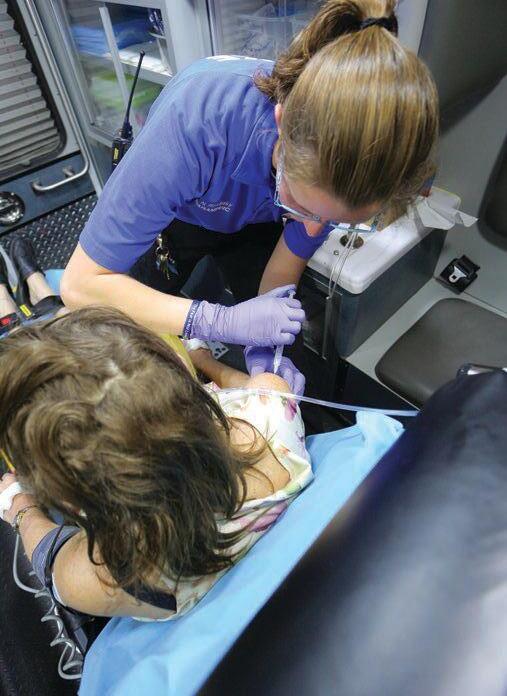
Without question, Lake EMS employees respond to a wide array of calls. To the casual observer, some may seem downright strange.

“One time, I received a call for someone with a headache, and when I arrived I found out he had a headache because he had shot himself in the head,” says Ginger Jacobs, who has been an EMT since 2001 and was on shift when I first arrived at the station. “Another time, I received a call for someone who had a paper cut and was scared it may become infected. However, even when you receive these types of phone calls, patients and their families appreciate when you are there to help them, and that makes all the difference in the world.”
Most calls, though, are true emergencies. And one of the best parts of the job is saving the life of a person on the cusp of death. “It is certainly an adrenaline rush whenever you are helping someone who has suffered a heart attack, been in a horrible automobile accident, or cannot breathe,” says Ken Wynn, a Lake EMS paramedic since 2007 and Ginger’s partner on the shift. “They may not have a pulse when
LAKEHEALTHYLIVING.COM // 47
THIS IS 911: WHAT IS YOUR EMERGENCY?
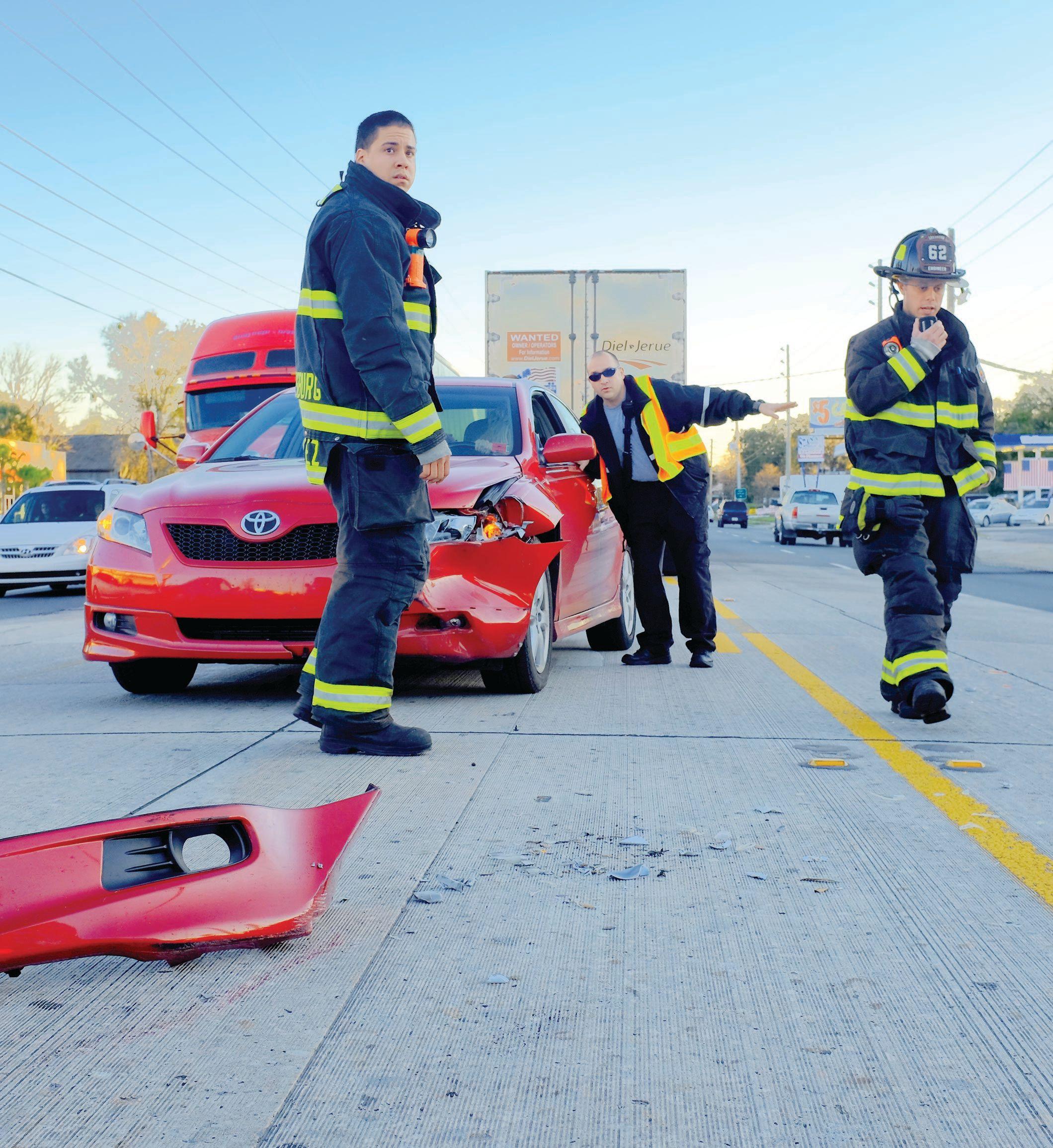
we arrive at the scene, but they do by the time we get them to the hospital. That is a wonderful feeling.”
And how do they cope when a patient dies? “It’s tough, but you cannot get down because at the end of the day we do everything possible to save their lives,” Ginger says. “We give 100 percent in everything we do. Unfortunately, the reality is we are not going to be able to save everyone. Without question, it takes a mentally tough person to do this job.”
Perhaps one of the most disappointing aspects of their job is the misconception they are simply ambulance drivers. In reality, EMTs can administer basic life support such as oxygen masks, splints, and bandages. Paramedics can administer advanced life support such as medications, intravenous fluids, breathing tubes, and manual defibrillators.

“We are the first line of defense,” Ginger says. “In essence, we are an extension of hospitals. Our ability to react quickly, remain calm, and think critically can mean the difference between life and death. That is something we all take very seriously.”
HOME SWEET HOME
The EMS crews work 24-hour shifts and are off for two days. Whether they have a high call volume on a given day is as unpredictable as Florida winters.

“Sometimes, calls are few and far between, and other times the calls are non-stop,” Nicole says. “However, we never use the words ‘slow’ or ‘quiet’ around here. We use the term ‘meditation time’ whenever
there is a low call volume.”


When they are not saving lives, the crew spends their time cleaning, maintaining, and stocking the ambulance, completing paper work, or completing chores around the station. When work is done, they are free to read a book, watch television, or relax between calls.
In addition to standard sleeping quarters, the station has a kitchen with two refrigerators and an oven, a living room with recliners and a television set, and a computer room where EMS employees can catch up on company emails.
A MEMORABLE EVENING
Nicole and Heather eat dinner at 11p.m. and decide
to lie down. Fred Lopez, our chief photographer, and I sit in comfortable recliners and watch an action-packed movie. At any moment, we are anxiously awaiting for Nicole and Heather to emerge from their sleeping quarters and tell us we are going on another call. That moment never comes. At 1a.m., we leave the station and drive home.
Although my ambulanceriding experience was limited, yet exciting, I walked away with something more important: a newfound respect for EMTs and paramedics. There are many definitions of a hero. One definition is a person who saves lives. Without question, everyone involved with Lake EMS is a hero each and every day.
COST
OF AN AMBULANCE
Emergency with advanced life support:
Non-emergency with advanced life support: Emergency with basic life support:



Non-emergency with basic life support:
RIDE: $550 $500 $450 $400 $9.50
Mileage: per mile
COST OF EQUIPMENT:
AMBULANCE: $143,000
(does not include electronic equipment such as radios and mobile data terminal rugged laptops).
























STRETCHER: $14,000
(seven-year expected life)
CARDIAC MONITOR: $30,000
(variable life span, but typically goes seven to ten years before manufacturer support is discontinued due to newer models released).

LAKEHEALTHYLIVING.COM // 49
THIS
IS 911: WHAT IS YOUR EMERGENCY?
Allergies are nothing to sneeze at.
NOW IT’S POSSIBLE TO SAY GOODBYE TO THEM FOR GOOD!
Allergies can dramatically impact your life. Medications designed to alleviate allergy symptoms provide only short-term relief and can come with a host of unpleasant side-effects, and they do nothing to alleviate your underlying allergies.

Immunotherapy is different. It works by introducing tiny amounts of allergens into your system, enabling your body to accept these allergens as normal, so your immune system will stop reacting to them. Immunotherapy used to require painful and inconvenient allergy shots 1-2 times a week, but now there’s sublingual immunotherapy, which means simply taking a few drops of an all-natural, drug-free serum under the tongue every day from the comfort of home. No shots, no drugs, and monitoring by your
doctor is required just once every 12 weeks. Allergen testing is painless and takes 15 minutes. Allergy relief typically comes within a few months.
Board-certified ophthalmologist Mark Vocci, M.D. now treats patients using sublingual immunology. “I became interested in allergy drops because so many of my patients come to me with eye distress or complications due to allergies,” says Dr. Vocci. “The drops make treatment safe, easy, convenient, painless and holistic. After four years most patients need no more treatment of any kind. This is the future of allergy treatment. I’m thrilled to provide testing and treatment to patients.”
rd-certified A RK VOCC I, M . D.
Board-certified ophthalmologist: MARK VOCCI, M.D.

Accepting new patients! TAVARES - 352-343-2020 LEESBURG - 352-365-2020 THE VILLAGES - 352-750-2020 www.LakeEye.com |







SPECIAL PROMOTIONAL FEATURE
Who is Lake EMS?
Lake Emergency Medical Services provides so much more than quality medical care and ambulance services. Truth is, EMS encompasses many areas of emergency care. The agency’s full spectrum of services include medical direction, a consolidated dispatch communication center, vehicle maintenance, ongoing training and education, quality assurance, logistical support to fire departments, and governmental compliance.
“In Lake County, EMS is an intricate system of agencies and organizations,” says Gerald “Jerry” L. Smith II, executive director of Lake EMS. “We work to manage and provide an infrastructure for this pre-hospital care system.”
EMS Core Services
CRITICAL CARE AND TRANSPORT OF THE SICK AND INJURED:
• Lake EMS operates using a system approach and works in partnership with local fire departments. In addition, Lake EMS maintains an around-theclock state of readiness and provides high-quality pre-hospital care, while continuously operating in an efficient, cost-effective manner.
• Lake EMS operates 19 ambulances a day — 13 provide 24-hour coverage and six provide 13-hour coverage. This ensures maximum coverage during peak call volume. Each ambulance is staffed with an EMT and a paramedic.
• During the fiscal year 2012–2013, Lake EMS responded to 43,332 medical incidents and transported 31,139 patients to area hospitals.
CONSOLIDATED EMERGENCY COMMUNICATION FOR EMS AND FIRE SERVICES:
• Lake EMS is one of 18 communication centers recognized as a multidiscipline Accredited Center of Excellence. In 2009, Lake EMS received accreditation in medical dispatching and in 2012 earned accreditation for fire dispatching.
• Lake EMS provides medical dispatch services, as well as fire dispatch services, for 12 of the 13 fire departments in Lake County.
• In fiscal year 2012–2013, the communications center dispatched 43,332 incidents to Lake EMS units and an additional 45,054 incidents to fire agencies.
• All calls are answered promptly by highly trained telecommunicators who remain on the line with callers until paramedics arrive. They provide immediate medical instruction, meaning a patient’s care begins immediately.
• All agency telecommunicators are state certified by the Florida Department of Health. Its training program has been approved by the Department of Health, which identifies the agency as an approved training site to teach public safety telecommunications curriculum.
• Lake County residents are encouraged to participate in the national Smart911 system by visiting www.smart911. com to create a free, confidential safety profile that provides critical household data to first responders during an emergency such as medical conditions, disabilities, floor plans, access codes, and phone numbers.
UNIFIED MEDICAL DIRECTION FOR EMS AND FIRE SERVICES:
• Lake EMS provides the medical director and progressive treatment protocols to the more than 600 emergency medical technicians (EMTs) and paramedics working at EMS and 12 Fire Services in Lake County.
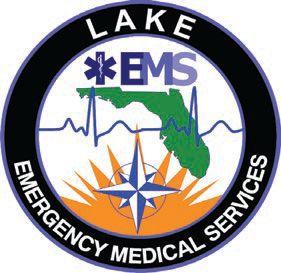
CONSOLIDATED LOGISTICAL SERVICES FOR EMS AND FIRE SERVICES:
• A support services facility provides fleet and facilities management, as well as logistical services for all of Lake EMS and its public safety partners. This ensures maintenance and readiness of the fleet, management of all medical supplies and equipment inventories, and the assurance of cost-effective practices.
• Lake EMS supports all 13 local fire departments by supplying their medical supplies, medications, and oxygen.
CLINICAL QUALITY ASSURANCE SUPPORT AND EDUCATION:
• Lake EMS emphasizes the importance of education to ensure quality of care. The Quality Development component strives to maintain high standards for all EMTs and paramedics and serves as the primary provider of pre-hospital care education in Lake County.
• Lake EMS provides free education and training to all EMTs and paramedics who live and/or work in Lake County.
www.LakeEMS.org
352.383.4554
“In
SPECIAL PROMOTIONAL FEATURE Lake Emergency Medical Services, Inc. is a not-for-profit
in 2011
quality, community-based
services. Lake
is
by a
of
at 2761 W. Old Highway 441 in Mount Dora, Florida.
Rhythm with Our Community.”
organization formed
by Lake County to provide
EMS
EMS
governed
ninemember board
directors with representation from the county, municipalities, and local hospital with administrative offices located
Thefirst step towards a beautiful, healthy smile!
We here at Lake OMS practice a full scope of oral and maxillofacial surgery that includes expertise in the areas of corrective jaw surgery, wisdom teeth removal, diagnosis and treatment of facial injuries, as well as bone-grafting procedures
Drs. Azizi and Figueroa employ the most recent advances in dental implant technology by utilizing CT-guided system for minimally-invasive implant surgery. With this technology, we can evaluate the bone ahead of time and place implants precisely in an ideal functional and esthetic position. We are committed to provide the highest quality treatment so our patients can smile and function with confidence.
Lake Oral & Maxillofacial Surgery
19051 US Highway 441, Suite 100, Mount Dora 352.735.5005
• www.LakeOralSurgery.com
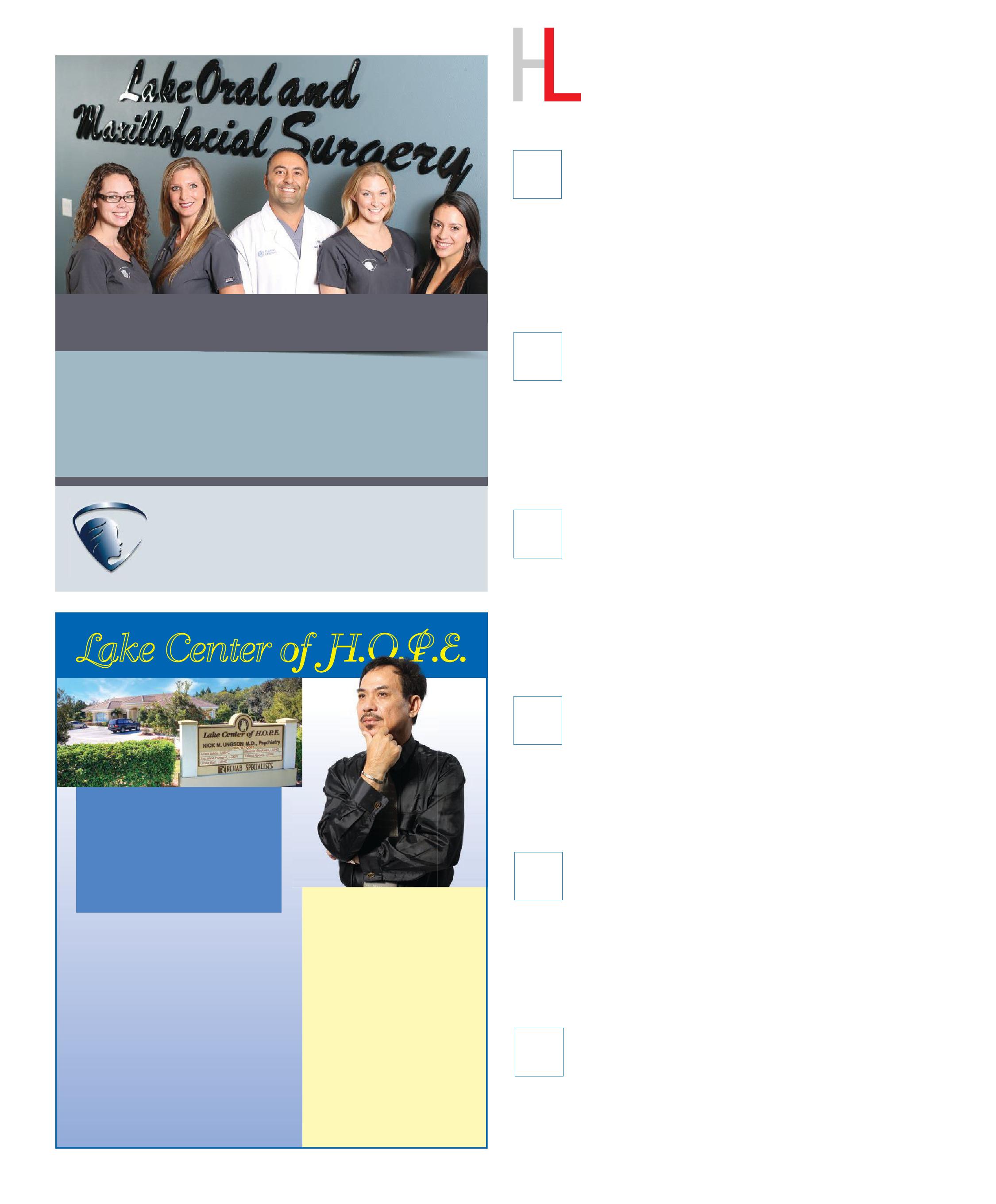
Lake Center of H.O.P.E.
Services Include: Psychiatric Evaluation
Competency/Guardianship Evaluation
Medication Management
Individual, Couples, Adolescent, Family and Marital Counseling
Substance Abuse and Alcohol Abuse Treatment
Court Ordered Psychiatric Evaluation
Anger Management
We Treat Conditions Such As:
Nick M. Ungson, M.D.
Board Certified Psychiatrist
Pig on the Pond Festival (March 7–9)
The three-day event at Waterfront Park in Clermont will include a sanctioned barbecue competition, midway carnival, crafters, kids zone, live entertainment, 5K Rib Run/Walk For Education, No Duck Left Behind rubber ducky race, Boy Scouts Pinewood Derby, and much more. Begins at 5p.m. on Friday. Admission: $3. Information: www.pigonthepond.org
Rib Run for Education 5K Run/ Walk (March 8)
Proceeds benefit the Pig on the Pond Educational Fund, which provides scholarships to deserving South Lake County students. The run starts and finishes at Clermont Waterfront Park. Strollers and dogs are welcome. The race kicks off at 8a.m. Early registration is $25 for adults and $15 for students under 18; same day registration is $30. Information: www.pigonthepond.org
Annual Charity Golf Tournament (March 9)
The American Legion Post #219 golf tournament is open to the public. Proceeds will be used to support local charities including Homeless Veterans, Association for Retarded Citizens, Boy Scouts, and the Legacy Fund for Veterans. This is a scramble format with four person teams. The event starts at 1p.m. at Water Oak Country Club in Lady Lake. Information: 352.787.2338
Paddling Adventure to Scrub Point Preserve (March 12)
Experienced and novice paddlers are invited to join wildlife experts as they paddle from John’s Lake Boat Ramp in Clermont to Scrub Point Preserve. Bring your own boat or use one from the Lake County Water Authority. Call to make a free reservation. From 9a.m. to 1p.m. Information: 352.343.3777
Annual Spring Fashion Show (March 13)
Hosted by the Lake Shrine Ladies Auxiliary, this fundraising event will be held at the Lake County Shrine Club, 424 N. Duncan Drive, in Tavares starting at noon. There will be door prizes, Chinese auction, and Share the Wealth. Funds and gifts go directly to the Shriner’s Hospital for Children in Tampa. Cost: $15. Information: sueellen0326@yahoo.com or suzisweats@aol.com
7 8 9 12 13 14
Tavares Chamber Golf Tournament (March 14)
Starting at 8:30a.m. at Arlington Ridge Golf Club in Leesburg, this tournament includes 18 holes of golf, a golf cart,
54 // HL // MARCH 2014
Most
Insurances Accepted 352-787-0081
Anxiety
GAD,
OCD, PTSD
Dementia - Alzheimer’s Substance
Alcohol Drugs Adjustment Disorder ADHD Personality Disorder Other Emotional and Behavioral Problems Board Licenses: Florida Board of Medicine Alabama Board of Medicine Professional Memebership: American Psychiatric Association Florida Psychiatric Society Hospital Affiliation: Leesburg Regional Medical Center Florida Hospital - Waterman Years in Practice: From 1997 to Present Counselors: Dr. James Moore, Jr., Lic. PsychologistTalana Kersey, MS, LMHC Hershel Tidwell, MS, LMHC Sue Bingle, LCSW Amoree Lanaha, LCSW 33057 Professional Dr. Suite 102, Leesburg Tuesday, Thursday, Friday 9am-5pm The Summit of Lady Lake 737 Hwy. 466 • Lady Lake Monday, Wednesday 9am-5pm
Mood Disorder Depression Bipolar (Manic Depression)
Disorder Phobia,
Panic Disorder,
Schizophrenia
Abuse
Calendar
range balls, a lunch buffet following golf, and team prizes. Cost: $60 per person or $225 for a four person team. Information: 352.343.2531
Third Annual We Bike for Kids (March 15)






A charity bicycle ride benefiting two local organizations, Project Legacy and the Sumter County Youth Center, leaves from the Seabreeze Recreation Center in The Villages beginning at 8:30a.m. Bicyclists may choose to ride 10, 32, or 62 miles. Hosted by The Villages Bicycle Club, the event will also include a light breakfast, t-shirt, goody bag, and free raffle ticket for more prizes. Registration is $35 until March 1 and $40 the day of the event. For information or to register online, visit webikeforkids.com
First Day of Spring Plant Cultivation Hike (March 20)

Spring is here! Join plant expert Wendy Poag for tips about planting and cultivating native plants during this free outdoor educational hike. From 9 to 11a.m. at PEAR Park Wildlife Conservation Area. Information: 352.253.4950
Eustis Jazz Revue (March 21)



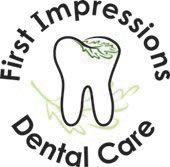








The Eustis Band Program is hosting its Fourth Annual Jazz Revue, which will feature a three-course meal in addition to an evening of live performances by the Eustis High Panther and Eustis Middle Mustang jazz ensembles, student soloists, and a special guest artist. “Art is Music for The Soul” is a new part of this event and will showcase artwork by band members in a silent auction. All proceeds go directly to the Eustis Band Program, which provides musical equipment and instruments for children in sixth through twelfth grades. From 6:30 to 9p.m. at First Baptist Church of Eustis. Cost: $30. Information: 352.357.3921
The North Lake SportsFest & Jam (March 28–30)

This three-day fundraising event at North Lake Park in Umatilla will include a century (100-mile) and 50-mile biking challenge, a youth baseball tournament, a youth girls fast pitch softball tournament, and a youth soccer tournament. The Umatilla Chamber of Commerce will top off the party with a great selection of live music. Information: 352.669.3511

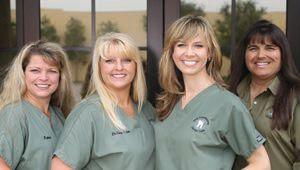
LAKEHEALTHYLIVING.COM // 55 Oaks Professional Center (North of Bealls on Hwy. 441) 8575 NE 138th Lane, Ste. 105 352.364.0064 or Toll Free 866.324.5330 www.DrPisano.com Imagine Yourself with a new smile! $1500 value Ext 673
20 15 21 28
The Knee Replacement Nature Envisioned
• Conservative, bone sparing technique


• Does not sacrifice any ligaments
• 20+ years of successful patient outcomes




• Restores your knee to a more natural state
Natural Knee
ACL and PCL critical for knee stability
TKO Knee
Unlike most knee implants, the ACL and PCL are not sacrificed with the TKO

Total knee replacement is intended for individuals with degenerative, rheumatoid and post-traumatic arthritis of the knee. Knee replacement surgery is contraindicated for patients with certain types of infections, some mental or neuromuscular disorders, compromised bone stock, skeletal immaturity, severe instability of the knee, or excessive body weight.
As with any surgery, knee replacement surgery has certain risks. Speak to your surgeon to decide if knee replacement surgery s appropriate for you. Individual results vary and not all patients will return to the same activity level.
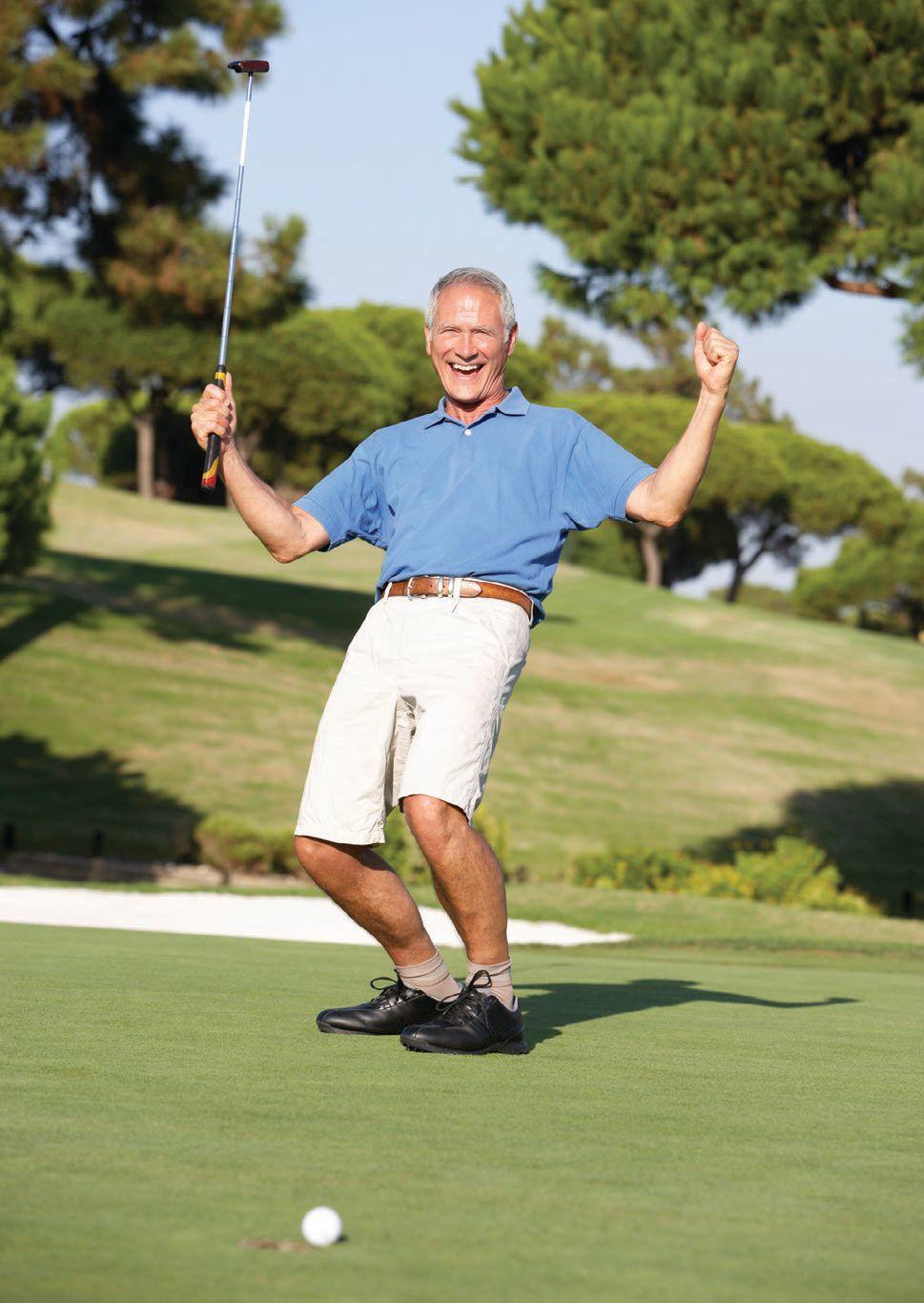
BioPro, Inc., 2929 Lapeer Road, Port Huron, Michigan 48060 USA 800.252.7707 • 810.982.7777 • www.bioproimplants.com
The future of orthopedic surgery
Dr. Vrej Manoogian is the only doctor in Florida to offer this revolutionary tendon-sparing BioPro TKO knee implant
Dr. Vrej Kristapor Manoogian is offering the most advanced treatments available for hip, knee, and shoulder problems.
Dr. Manoogian is the inventor of the “Living Hip” total hip replacement. This is the most bone-conserving total hip available and has the ability to maintain bone integrity throughout the entirety of a patient’s life.
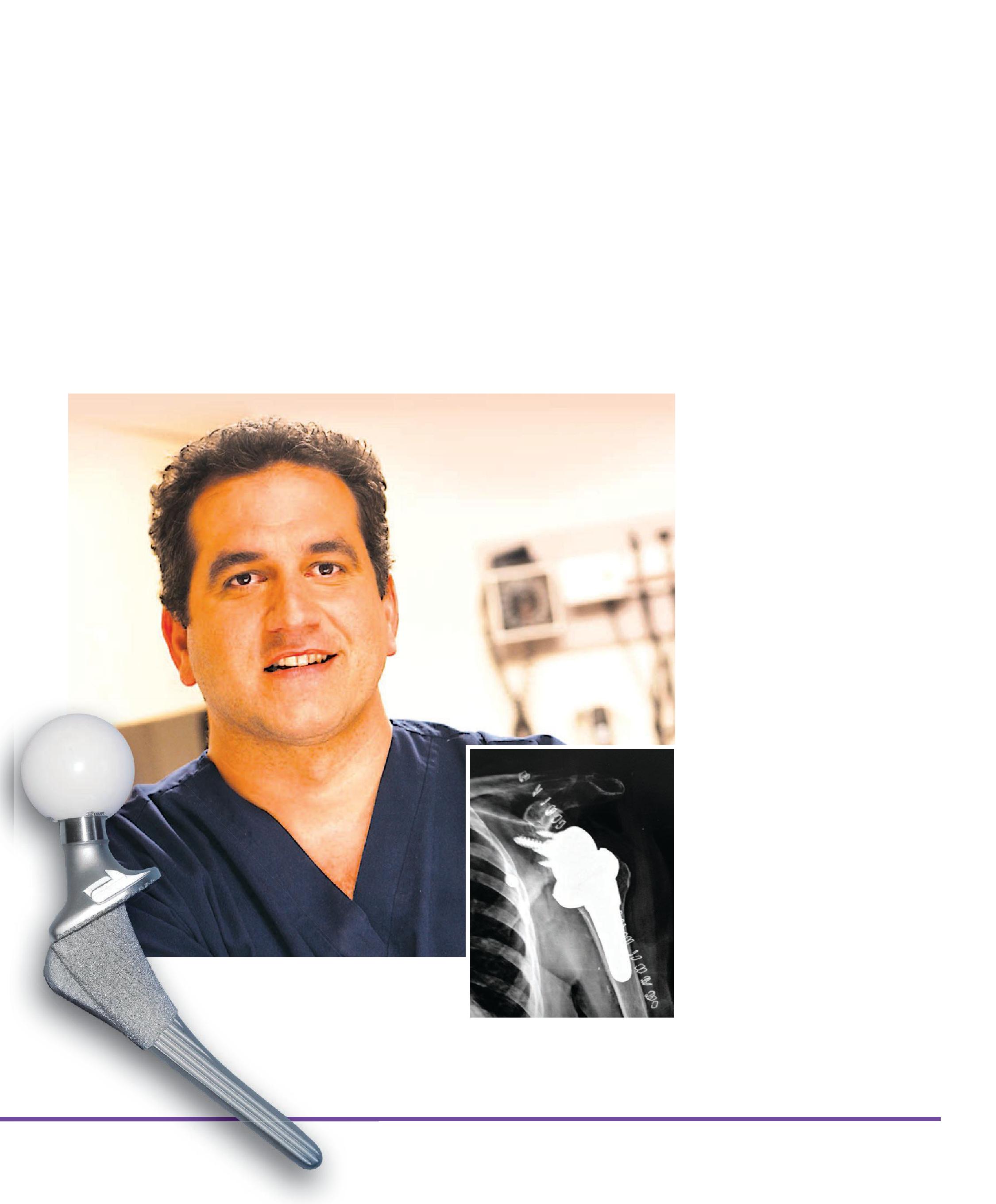
With regards to shoulders, Dr. Manoogian performs arthroscopic rotator cuff repairs through incisions only millimeters in length. He also performs a multitude of other completely arthroscopic shoulder treatments, open procedures, and, when necessary, total shoulder replacement arthroplasty.
When it comes to knees, Dr. Manoogian offers the TKO implant, a complete ligament-sparing total or partial knee replacement. He offers other surgical knee replacement procedures, as well. Rather than using a one-size-fits-all approach, he carefully examines the ligament and functional status of the patient’s knees to see which option would best suit the individual patient.
Dr. Manoogian’s treatment philosophy has been and always will be to proceed with the most conservative treatments available to restore function to normal or as normal as possible.
SPECIAL PROMOTIONAL FEATURE Manoogian & Guru Orthopedic Center, P.A. l 1945 Bay Road in Mount Dora 352.483.5633 l www.manoogianorthopedics.com
has
already arrived in Lake County!
M The BioPro® Living Hip Stem Horizontal Platform Support
Care from the heart
With a strong emphasis on patient care, Heart of The Villages doesn’t skip a beat
When Dr. Georg Couturier opened Heart of The Villages in August 2010, he visualized a practice where the human side of medicine is every bit as important as cutting-edge treatment and technology.

From the beginning, he realized that comprehensive medical care cannot be practiced by spending two minutes with a patient before moving on to another one. He vowed to be sensitive to patient’s fears while taking the necessary time to answer all their questions and thoroughly address their concerns.
“One of the most important aspects of being a good physician is having the ability to clearly and effectively communicate with patients,” he says. “When you do that, you can form an individualized treatment plan that best suits each specific patient. In addition, I am a big believer in educating patients so they can take an active role in their health care.”
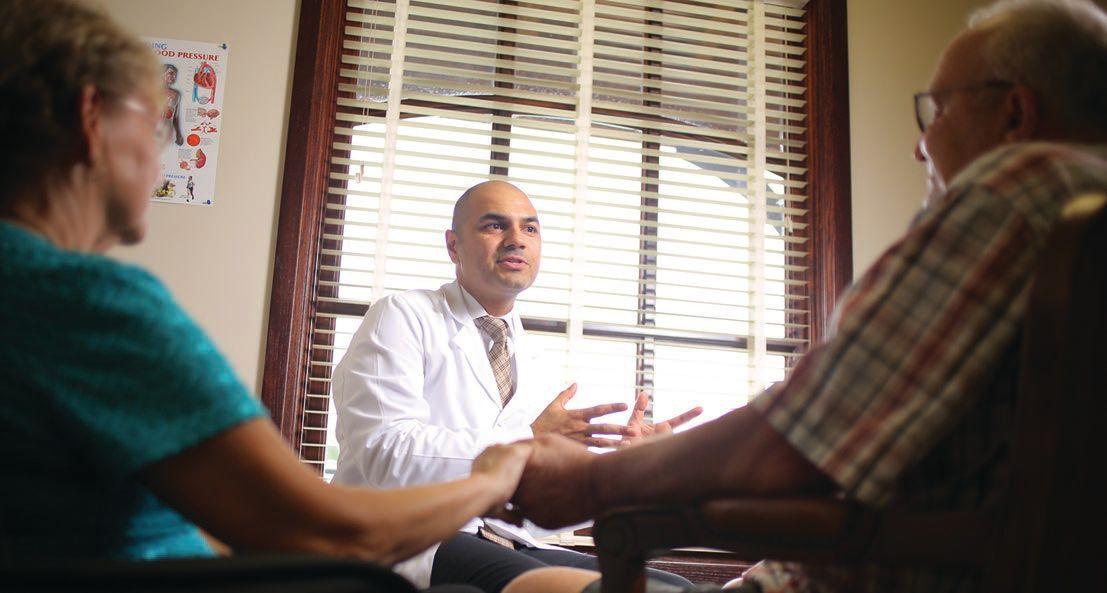
Dr. Couturier has never wavered from that approach. Because more and more patients began entrusting their cardiovascular health with Heart of the Villages, the practice has grown considerably. As a result, Dr. Couturier has
since added two cardiologists who share his philosophy in patient care: Dr. Mark Rothschild and Dr. Omar Shams.
Dr. Rothschild completed his cardiology fellowship at St. Elizabeth’s Hospital in Boston and is board-certified in internal medicine and cardiovascular disease. “All cardiologists are properly trained and competent to diagnose and treat cardiovascular problems,” he says. “However, we understand that patients want more than competence; they want doctors who genuinely care about them as people. They have real feelings, and their feelings matter to us.”
Likewise, Dr. Shams realizes what makes great doctors rise above the rest is how they treat patients. “One of the reasons I was so excited to join this practice is because of the extraordinary care that patients receive,” says Dr. Shams, who completed his cardiology fellowship at Ochsner Clinic in New Orleans and is board-certified in internal medicine and cardiovascular disease. “We treat patients like they are our own parents, and everything we do at this office is based off that platform. We don’t look at them as patients; we look at them as real people.
For us, it is important both patients and their referring physicians trust us and have good experiences with us.”
Another aspect that makes Heart of The Villages unique is the three cardiologists possess areas of expertise that complement each other, resulting in a true comprehensive cardiology practice. For instance, Dr. Shams is an electrophysiologist, which, as he puts it, is an “electrician of the heart.” When someone’s heart is beating too fast or slow, it can be treated with a defibrillator, pacemaker, or ablation.
“For me, this is a satisfying specialty because I can provide a potential cure for patients with these conditions,” he says. “Very few things in medicine are curative. I can also reduce their risk for stroke and eliminate the need for blood thinner medication for arrhythmia.”
Dr. Rothschild is a noninvasive cardiologist who helps patients prevent and manage heart problems. He also performs noninvasive diagnostic tests using advanced imaging modalities such as nuclear stress testing, echocardiograms, and ultrasound of carotid arteries and lower extremities.
SPECIAL PROMOTIONAL FEATURE
“What I love about this field is it is intellectually stimulating and emotionally satisfying,” he says. “When I can diagnose a condition, it gives patients a certain peace of mind to know what they are dealing with.”
Dr. Couturier, who completed two cardiology fellowships, performs everything from imaging to implanting pacemakers to cardiac catheterizations. He is board-certified in the following areas: internal medicine, cardiovascular disease, echocardiography, nuclear cardiology, computed tomography, pacemaker implantation, and vascular imaging.
“We’re a small, hands-on cardiovascular practice that is committed to doing what is right for patients,” he says. “All three of us are down-to-earth cardiologists who enjoy participating in the care of our patients rather than simply telling them what to do.”

www.heartofthevillages.org
1149 MAIN STREET, THE VILLAGES 352.674.2080
SPECIAL PROMOTIONAL FEATURE
Dr. Shams
Dr. Couturier
Dr. Rothschild
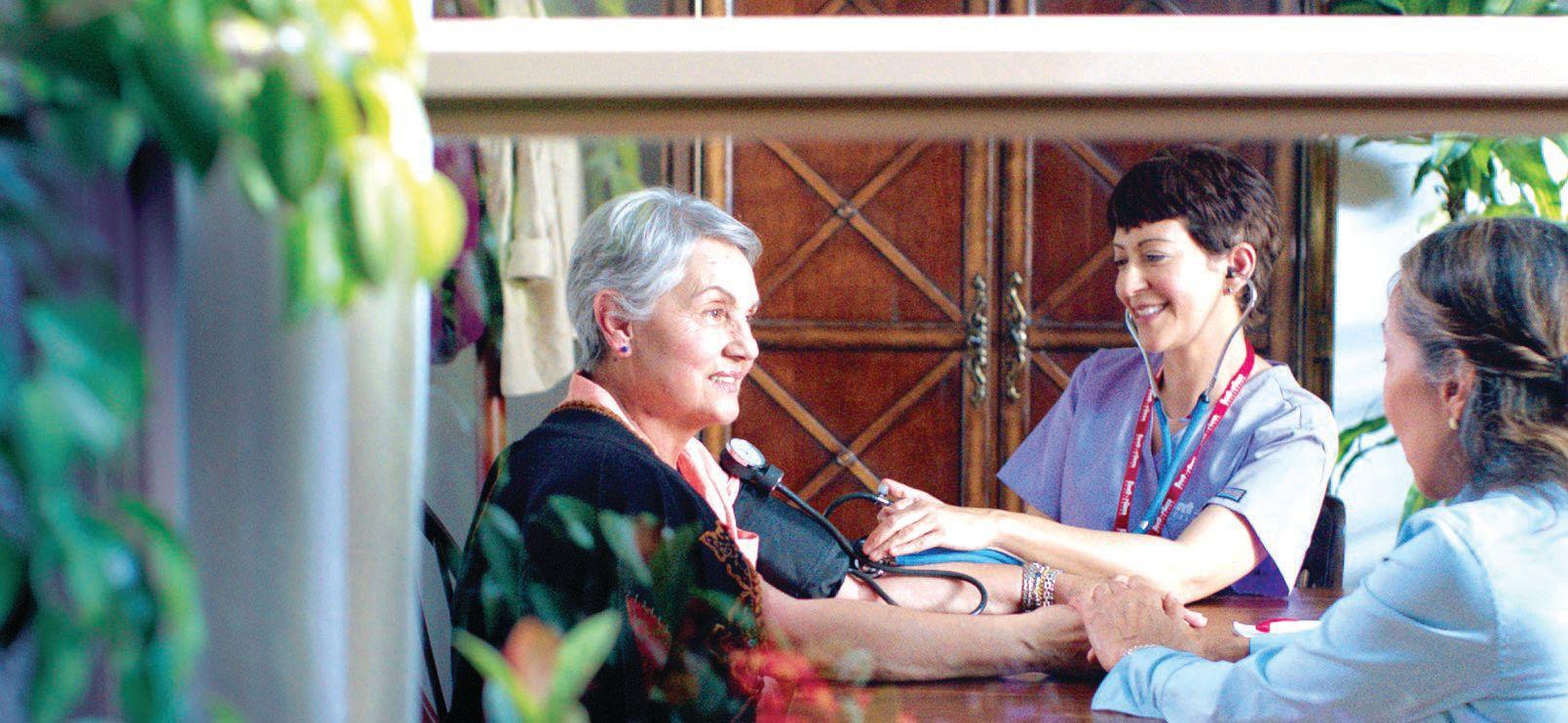



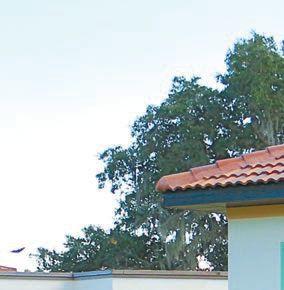
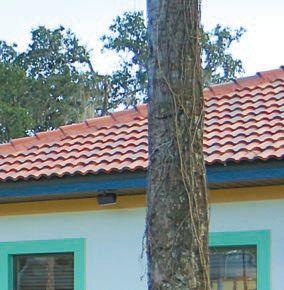



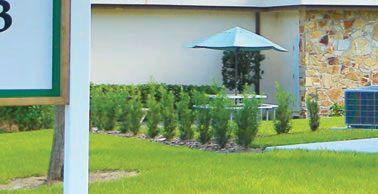

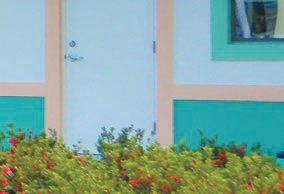

60 // HL // MARCH 2014 Lic#20578096Lic#20576096 Interim Healthcare of Leesburg, LLC. 9738 US Hwy 441, Suite 103 Leesburg, FL 34788 352.326.0400 www.interimhealthcare.com/leesburg Interim Healthcare of Ocala, LLC 2010 NE 14th Street, Bldg. 100 Ocala, FL 34470 352.351.5040 www.interimhealthcare.com/ocala • Private Duty • Nursing • Personal Care • Homemaking • Senior Care • Companion • Respite Care • Therapy Home Care You Trust Sometimes the most powerful medicine in the world is the simple comfort of home EXPRESS CARE DONE EXCEPTIONALLY! (352)431-3743 11a.m.–8p.m. Monday–Friday (Weekends Coming Soon!) 501 W. North Blvd., Leesburg FL 34748 • Joint Pain • Fractures • Workers Comp. • Vehicle Accidents • Cough/Cold/Flu • Headaches/Ear Aches • Sore Throats • Physicals for School, Sports, Employment or DOT Central Florida EXPRESSCARE NOWOPEN! We offer the following services: (ages 3 and up)













LAKEHEALTHYLIVING.COM // 61
// EAT FIT/NOT FAT // INSIDE THE FORGOTTEN CALVES 62 STIRRING THINGS UP 66 FOOD FIGHT: ORGANIC VERSUS NONORGANIC 68
//
SHAPE
BODY
SHAPE

THE FORGOTTEN CALVES
This relatively small muscle in the lower leg either can garner many looks or be easily overlooked, depending on its shapeliness. Here are some exercises that will help you achieve stronger calves and add more “flex” appeal to your lower legs.
However, it is not just about sex appeal. Strong calves also often mean strong ankles. When you step on uneven ground, a stronger ankle is less likely to end up with a sprain.

UNILATERAL TOE RAISES
1. Stand on one leg. Knee is straight, but not locked. Hold on for support, if needed.

2. Simply lift your heel up slowly to full extension; lower slowly.


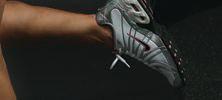




3. Return and repeat for 12–15 times per leg; three sets will do it.
MUSCLE GROUPS TARGETED: gastrocnemius, soleus


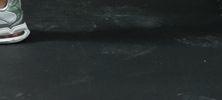





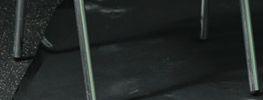







Start position



62 // HL // MARCH 2014 BODY //////
DESK JOCKEY
These free-standing exercises can be done right at your desk. To make it a bit more challenging, find a step and begin with your heels dipping slightly off the edge. You can do one foot at a time or both. For extra credit, squeeze the quads and glutes for some extra muscle contraction!
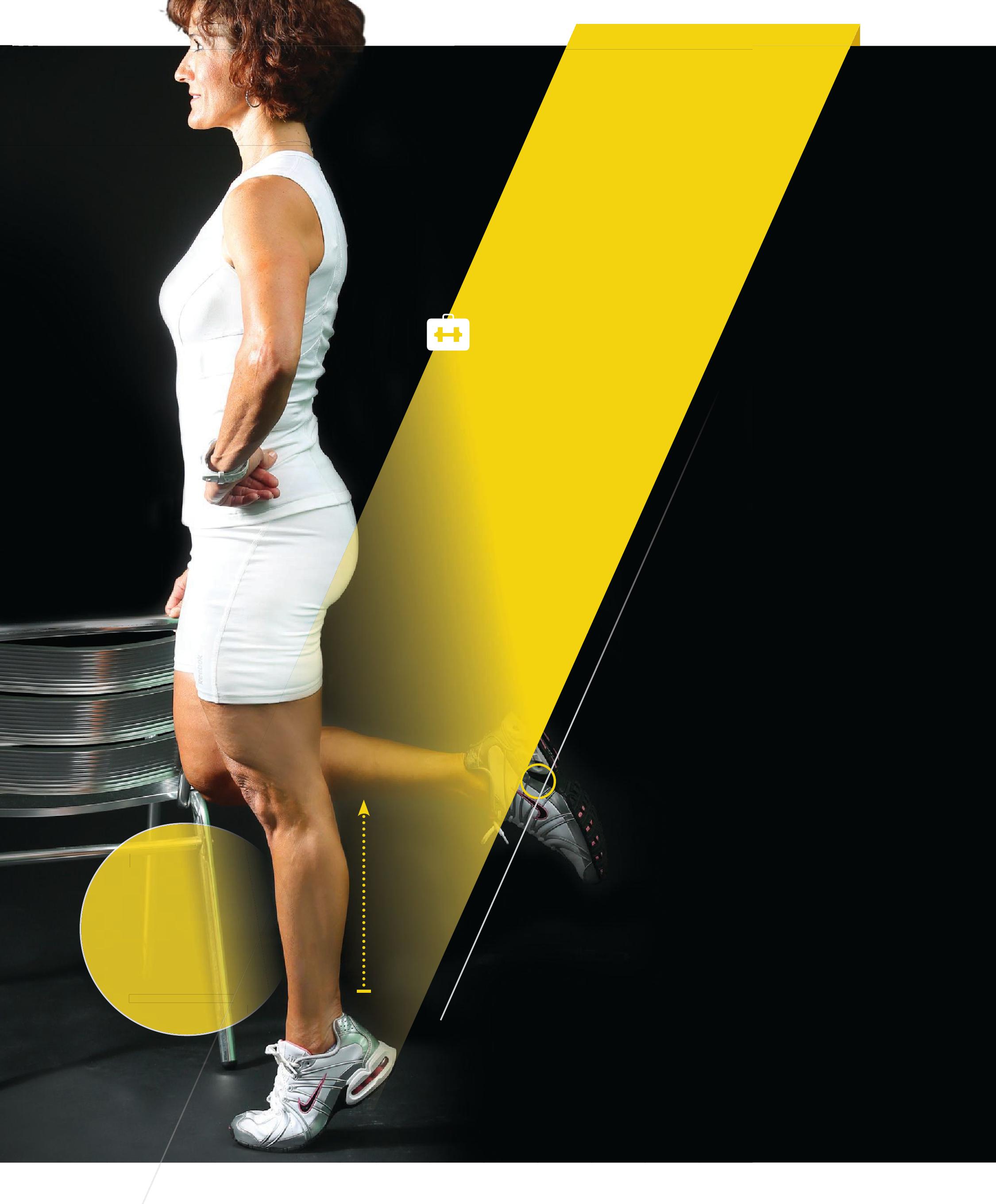
DID YOU KNOW?
?
The painful charley horse can be prevented by proper hydration, stretching, and proper amounts of calcium and magnesium.
Source: http://www.nlm.nih.gov/ medlineplus/ency/article/002066.htm / 66
Final position
LAKEHEALTHYLIVING.COM // 63
//
TIPTOE WALKS
This is one exercise that you can do anywhere at any time — at home, in the office, or even in line at the grocery store. It’s simple, effective, and just odd enough to do in public.
1. Walk around with your knees straight (but not locked) and on tiptoe.
TRAINER’S TIPS
• Stretch your calves. If you don’t, you could develop plantar fasciitis (jogger’s heel), tight hamstrings, or lower back pain.
• Take your time and go slowly.
• Take a break from high heels as they cause all sorts of problems with the legs, hips, and back.
MUSCLE GROUPS

TARGETED: gastrocnemius, soleus
2. Squeeze your glutes and take small steps. This will shape your lower legs, improve your balance, and strengthen your ankles at the same time. Final
64 // HL // MARCH 2014
//
position Second position First position Final
BILATERAL TOE RAISES
1. Select a weight you can maintain proper form with and use for three sets of 15 reps.

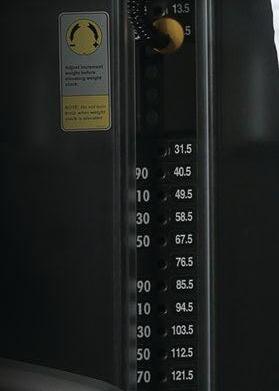
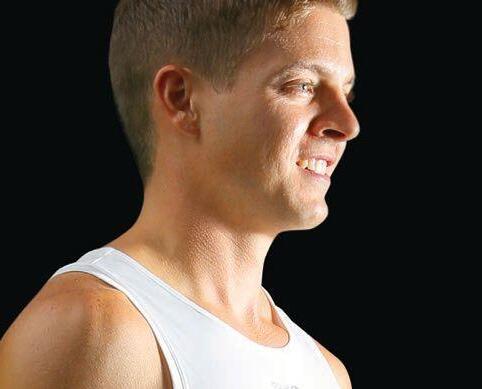
2. Soften knees and keep core strong by engaging the abdominals. Point toes straight ahead and drop heels.

TRAINER’S TIPS
3




3. Slowly exhale and raise the heels; inhale as you slowly lower them.


4. Perform 12–15 reps for three sets before increasing weight.
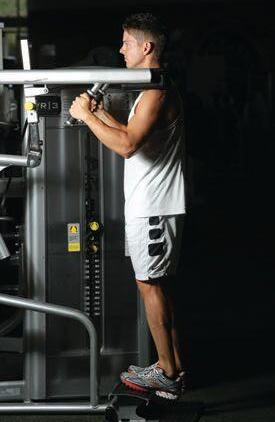
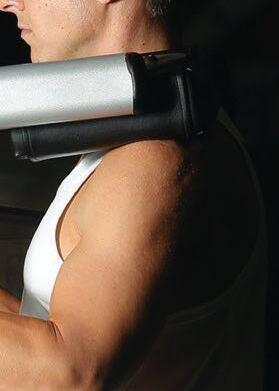

• Turn toes out to a 45-degree angle to work a different portion of your calf.
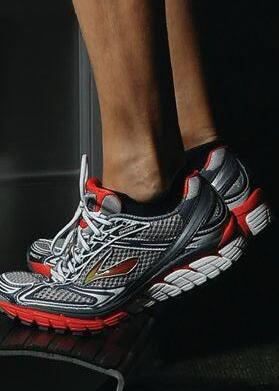
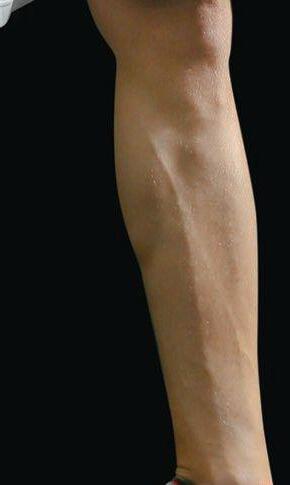
• Turn toes in (pigeon-toed) to work the outer part of the calf.
• Be careful not to lock the knees; keep core tight at all times to protect your back.

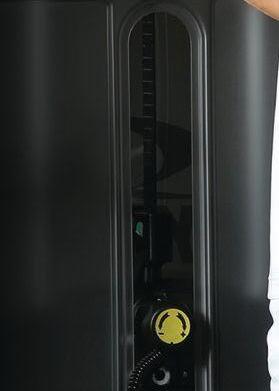


WRAP UP
FUN FOOD TIP
Spinach has been shown to help increase muscle rebuilding after a workout. The only issue is you will need to ingest about a pound of it to make the 120 percent increase in protein photosynthesis. So add a handful or two to your post-workout shake and eat spinach whenever you can get it.

FUN Spina rebui will n 120 p So ad shake









A total body workout is the best thing for everybody. You can accomplish this by going to the gym and working out head to toe — including weights and cardio — a few times a week. Another option is to do an upper body workout one day, a lower body workout another day, and a cardio workout a few days a week. The main thing is to have a plan and stick to it!
Source
Source: mensfitness.com/nutrition/20-fittest-foods experien that
MUSCLE GROUPS
TARGETED: gastrocnemius, soleus


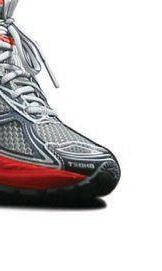









LAKEHEALTHYLIVING.COM // 65
TRACY DRAPER is an AFAA-certified personal trainer with over 12 years experience in personal fitness training. As a wife and mom, she discovered a few years ago that she could once again be an athlete, as well. In 2014, she is leading a team of cyclists on a cross-country ride. Visit www.RideAcrossUSA.com for more details.
First positionSecond position
Source: Dharma Singh Khalsa, M.D., Food as Medicine, Atria Books, NY, NY Yoke, Mary, Personal Fitness Training: Theory & Practice, Sherman Oaks, CA
L O
2
EAT FIT/NOT FAT
STIRRING THINGS UP
WRITER: ANNA GUNTER, RD, LD/N




CHICKEN STIR-FRY CAN BE A GREAT “EMERGENCY” MEAL WHEN YOU WANT TO BE QUICK AND HEALTHY.
You have had a long day. It’s dinner time and you want to make a quick and easy meal. Before you go through the fast food drive-thru or reach for the phone to order pizza, why not try a quick and simple recipe for chicken stir-fry? This particular recipe calls for peanut oil or sesame oil. Both types primarily contain the heart-healthy type of fat: unsaturated fat. Unlike saturated fat and trans fat, eating unsaturated fat does not contribute to an increased level of LDL cholesterol, also known as “bad cholesterol”, in a person’s blood.
Using instant brown rice not only saves time, it is a whole-grain food. Whole-grain
foods are made with all three parts of the entire grain kernel — the bran, the germ, and the endosperm. Often, grains are milled to produce refined grains, but the process removes the bran and the germ parts of the grain kernel that provide nutrients like B vitamins, iron, and fiber. Typically, after the milling process, the grain is enriched, which adds B vitamins and iron back to the grain. However, since fiber is not added back to the grains during the enrichment process, enriched refined grains have less fiber than whole grains. Fiber is an important nutrient for health, so it is important to eat fiber-rich whole-grain foods such as brown rice
BE AWARE:
A BURGER KING WHOPPER AND MEDIUM FRIES WILL COST YOU:

1060 calories
55g fat
14g saturated fat
60mg cholesterol
rather than refined grains such as white rice. Fiber also provides a feeling of fullness, which helps curb overeating.
In addition to whole grains, vegetables are also a rich source of fiber. The broccoli, carrots, onion, and mushrooms in this recipe contribute fiber, as well as vitamins and minerals such as vitamin C, vitamin A, and iron.

BETTER
THOUGH ORDERING A THIN CRUST PIZZA and choosing vegetable toppings instead of meat toppings cuts down on the amounts of calories, saturated fat, and cholesterol in the pizza, one slice of a 14-inch pizza still contains:

240 calories
9g fat
4g saturated fat
20mg cholesterol
66 // HL // MARCH 2014
BODY
ANNA GUNTER is a registered dietitian and American College of Sports Medicine certified health fitness specialist. She earned a Bachelor of Science degree in food science and human nutrition from the University of Florida. Anna is the outpatient dietitian at Florida Hospital Waterman in Tavares.
BEST QUICK AND EASY CHICKEN STIR-FRY
Ingredients:
1 pound boneless skinless chicken breasts or thighs
2 tablespoons soy sauce
1 large onion
Bag of shredded carrots
Bag of broccoli florets
Pre-sliced mushrooms
1 tablespoon minced fresh garlic
1 tablespoon minced ginger root
2 teaspoons cornstarch
2 tablespoons chicken broth or water
1 tablespoon peanut or sesame oil
Instant brown rice
Flavoring sauce:
¼ cup chicken broth
¼ cup soy sauce
2 teaspoons rice vinegar
2 teaspoons sesame oil
1 teaspoon hot pepper flakes
1 teaspoon sugar
Directions:
1. Set a large nonstick skillet over low heat.
2. Cut boneless skinless chicken breasts or thighs into bite-sized strips. Marinate chicken strips in two tablespoons soy sauce.
3. Cut a peeled large onion in half, and then cut each half into about eight wedges.
4. Mince garlic and ginger root.
5. Mix cornstarch with two tablespoons chicken broth or water. Set aside.
6. A few minutes before you are ready to stir-fry, turn up the heat under the skillet to high.

7. Start cooking the brown rice according to the package directions.
8. Add one tablespoon oil to pan. Then add half of the chicken to the pan. Stir-fry until wellbrowned and cooked through (about 2 to 3 minutes). Transfer to a clean bowl, and repeat with the remaining half of the chicken.
9. Add the onion and stir-fry until
10. browned. Add the minced garlic, ginger, carrots, and broccoli. After stir-frying the carrots and broccoli for a few minutes, add the mushrooms and continue cooking until all the vegetables are tender-crisp.
11. To make the flavoring sauce, combine chicken broth, soy sauce, rice vinegar, sesame oil, hot pepper flakes, and sugar in a small dish.
12. Return chicken to the pan with the vegetables and stir in the flavoring sauce. Then stir in the cornstarch mixture until juices become saucy and glossy.
13. Serve the stir-fry over brown rice.
LAKEHEALTHYLIVING.COM // 67
INSIDE
FOOD FIGHT: ORGANIC VERSUS NONORGANIC
WRITER: RICHARD T. BOSSHARDT, M.D.,
FACS
Television, radio, websites, and print media extoll the virtues of eating organic versus non-organic foods everywhere you turn. What you don’t hear as much about is exactly what it means to be organic and whether this is really better for you.
To make intelligent choices, you must know what the term “organic” means. The U.S. Department of Agriculture’s (USDA) Organic Program says the following: “Organic is a labeling term that indicates the food or other agricultural product has been produced through approved methods. These methods integrate cultural, biological, and mechanical practices that foster cycling of resources, promote ecological balance, and conserve biodiversity. Synthetic fertilizers, sewage sludge, irradiation, and genetic engineering may not be used.”
To the above, one could add no use of any pesticides, hormones, or antibiotics for crops or livestock. Organic livestock must have access to the outdoors and cannot be given growth hormones or antibiotics. Products must be free of preservatives and flavor enhancing chemicals. Pesticide levels must be no more than 5 percent of the maximal allowed by the Food and Drug Administration. Levels of heavy metals and contaminants must be below the allowable level set by the U.S. Environmental Protection Agency.
It may come as a shock, but not all major providers of food products are truthful when it comes to labeling organic items. According to the Organic Consumers Association, a nonprofit, grassroots, watchdog organization, Wal-Mart is now the largest organic retailer in the U.S. Their marketing and advertising tout their promotion of organic products and use of local suppliers. Despite this, they sell “organic” milk that comes from intensive confinement factory farm dairies; import cheap “organic” foods and ingredients from countries such as China and Brazil where regulations are notoriously lax; and post signs in stores that mislead customers into believing nonorganic items are actually organic.
So, how can you tell if what you are buying is organic? The best way to determine whether a product is organic is to look at the label. The only label that counts is the USDA Organic Seal.
If you don’t see it, the product has not been certified organic in the U.S. This seal is your proof the product is organic, or if it has multiple ingredients, that it is at least 95 percent organic. If the label says 100 percent, then it must be exactly that. Some products say “made with organic ingredients.” In this case, it may contain anywhere from 75 percent to 95 percent organic ingredients.
What about other labels? There is a confusing array of terms out there that are poorly understood.
1. FREE RANGE: For fowl, this means they are provided shelter but have unlimited access to food, fresh water, and the outdoors during their growth cycle. The “outdoors” may be fenced and/ or covered with netting.
2. CAGE FREE: The flock is able to roam freely in a building, room, or enclosed area during the growth cycle. (Yes, these sound suspiciously like simply larger cages!)
3. NATURAL: This is limited to meat and egg products that must contain no artificial ingredients.
4. GRASS FED: Animals must receive the majority of their nutrients from grass throughout their lives. In contrast, organic animals may be fed grain, as well. This label alone does not preclude the use of pesticides, hormones, or antibiotics.
5. PASTURE RAISED: There is no USDA definition as to what this means.
6. HUMANE OR HUMANELY RAISED: As above, there is no USDA definition of this.
7. NO ADDED HORMONES OR RAISED WITHOUT HORMONES: It’s self-explanatory but federal regulations have never permitted hormones in poultry, pork, or goats.
Because dealing with the federal government can be expensive and time consuming, many smaller businesses do not want to go through the process to obtain a USDA Organic certification. There are
68 // HL // MARCH 2014
BODY
Oreos are not a health food When Coca-Cola begins selling organic as it surely will, the will have struck a blow for the environment but not is with health, but it makes no difference to insulinmetabolism if
“Organic Oreos are not a health food. When Coca-Cola begins selling organic Coke, as it surely will, the company will have struck a blow for the environment perhaps but not for our health. Most consumers automatically assume that the word ‘organic’ is synonymous with health, but it makes no difference to your insulinmetabolism if the high-fructose corn syrup in your soda is organic.”
— Michael Pollan,
author of
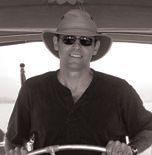
In Defense of Food: An Eater’s Manifesto
a few non-USDA labels out there. One of these is Certified Naturally Grown. This is a non-governmental, nonprofit organization that provides a certificate for foods that are supposedly produced to the same standards as the USDA Organic, but have not been officially certified by that body.
Fair Trade certification is awarded by Fair Trade U.S.A., a nonprofit that attests each product has met their standards of fair price and humane working conditions for growers and workers and that crops are grown in a way that supports local social, economic, and environmental development. Some things that can be Fair Trade certified include coffee, tea, cocoa, honey, bananas, rice, and spices.

Many consumers wonder if buying organic foods make a difference. Organic foods consistently show much lower levels of pesticides and other toxins than conventionally grown foods. Studies have shown many organic products are more nutritionally dense and/or diverse than comparable non-organic foods. It is very important to understand the term “organic” alone does not imply a food product is

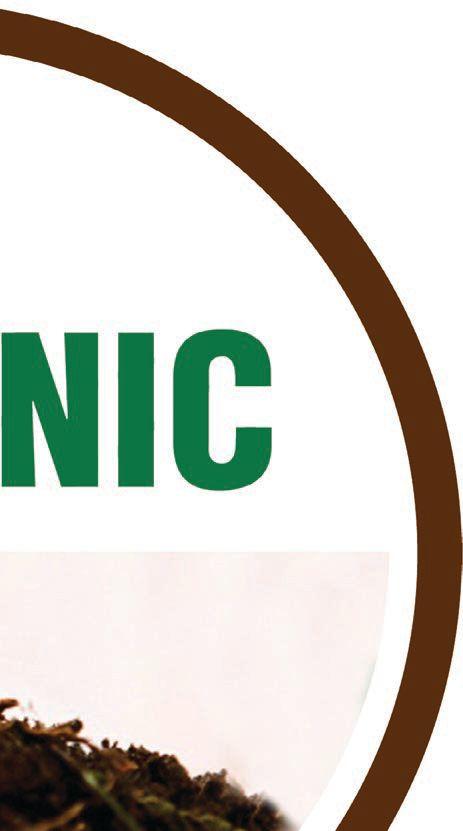

healthy. Potato chips are still calorie and fat dense and too high in sodium to be healthy, organic or not. Organic ice cream contains just as much sugar and saturated fats as non-organic ice cream. You can become overweight and unhealthy eating nothing but an organic diet if you eat too much.
Organic products are typically more expensive than conventionally grown products. Factory farms take advantage of economies of scale to save money and produce more on a given piece of real estate. Smaller growers simply cannot match this. If you have to pick and choose, some guidelines might help.
The Environmental Working Group, a credible nonprofit organization, produces the Shopper’s Guide to Pesticides in Produce, which is compiled from nearly 43,000 pesticide tests. According to this guide, the safest conventionally grown produce items are asparagus, avocado, bananas, broccoli, cabbage, eggplant, kiwi, mango, onion, pineapple, sweet corn, and sweet peas.
The produce highest in pesticides,
and import ill
and therefore most important to buy organic, are apples, celery, cherries, grapes (imported), lettuce, nectarines, peaches, pears, potatoes, spinach, strawberries, and sweet bell peppers.
The data on what safety issues, if any, are posed by the presence of hormones and antibiotics in beef and dairy products does not support any conclusion one way or another. Common sense would dictate eating beef and dairy that is not laced with hormones and antibiotics is better for you. That said, organic beef and dairy are more expensive. However, one way to get around this is to eat less of it.
With a bit of planning and mindfulness, it should be possible to eat a largely organic diet when it matters. It is better for you, your family, our country, and our planet.
LAKEHEALTHYLIVING.COM // 69
RICK BOSSHARDT, M.D., graduated from the University of Miami School of Medicine in 1978. He founded Bosshardt & Marzek Plastic Surgery Associates, Lake County’s first practice to provide full-time cosmetic and reconstructive plastic surgery services, in 1989.
A there. dNtllGThii

Scan the code to view Peg’s ww success story video. THE VILLAGES 352.753.8448 LEESBURG 352.728.2404 TAVARES 352.343.7279 LakeENT.net Lake Ear Nose Throat & Facial Plastic Surgery
LAKE EAR NOSE THROAT & FACIAL PLASTIC SURGERY

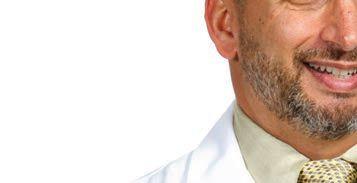





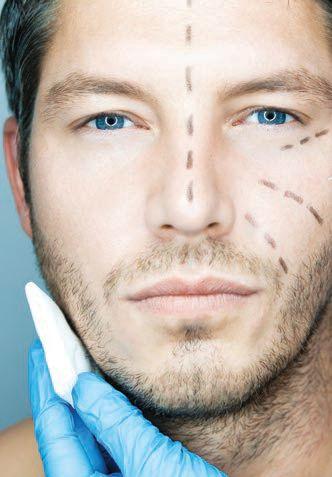
Q&A
By providing quality, comprehensive care that is tailored to the unique needs and desires of each patient, our accomplished board-certified physicians, physician assistants, and doctors of audiology can effectively diagnose and treat individuals who come to our offices looking for answers and solutions.
A:
Q:
A:



Dr. Judith C. Milstead ary


Face 2 Face is Lake ENT & Facial Plastic Surgery’s Wellness Division. It’s primary goal is to focus on a “healthier you.” It offers a wide array of services, including nutrition, weight management, skin care, massage, spa services, etc. Various seminars and screening programs will be offered to promote wellness. Visit Face2FaceFL.com for further details and a calendar of events.Dr. Dino Madonna

Learn more about sinus conditions and the Balloon Sinuplasty procedure at our dedicated website www.LakeSinusRelief.com

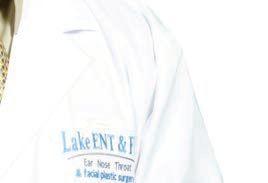
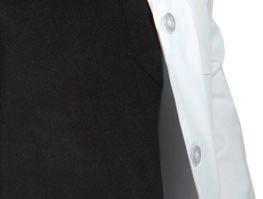

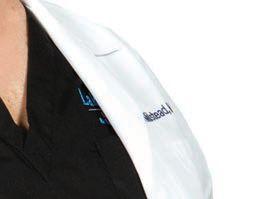

I have a neck mass. Do I need to have it checked out?Scan
There are several causes for neck masses. Let’s start with the ones that appear on the sides. There are two salivary glands, which can swell quickly and cause a neck mass. One is the parotid gland, which appears first behind the ear lobe. This can be painful if the area swells quickly enough. You can become quite ill if you quit drinking fluids due to the painful swelling. The same is true of the submandibular gland, which first presents as a mass just underneath the jaw. It can also be the cause of systemic toxicity should the gland become infected. Antibiotics can treat this situation. Should a fever result, IV fluids and antibiotics may be required for treatment. Any neck mass that causes redness of the skin along with painful swelling and fever will need to be closely looked at due to the fact an abscess can form.code

the
To learn more about FREE upcoming seminars, screenings and special offers from our wellness division, please visit Face2FaceFL.com or subscribe to our exclusive e-newsletter by sending an email to Face2FaceFL@Gmail.com for
a video tour of Face2Face
Q:
I have seen recent ads and commercials. What is Face 2 Face Aesthetic & Wellness Center all about?ng

&
Digestive Tract, Liver and Pancreatic Diseases DR. LAL S. NAGABHAIRU WWW.GASTROBAY.COM THE VILLAGES // 1580 SANTA BARBARA BLVD LAKE SUMTER LANDING // 910 OLD CAMP RD, BLDG 200, SUITE 202 LADY LAKE // 13940 US HWY 441, BLDG 100, SUITE 102 TAVARES // 2134 VINDALE RD AAAHC Certified // Medicare & Most Insurance Accepted // Payment Plans Available 352.383.7703
County’s only practice to offer comprehensive digestive health services
site with the following services:
colonoscopy
treatments for Barrette’s esophagus • reflux
bowel incontinence
feeding difficulties
all types of gastric and intestinal ailments
liver and pancreatic diseases
motility problems of the intestinal tract
non-cardiac chest pain
DR. LAL
GASTROINTESTINAL CONSULTANTS
Lake
on
•
•
•
•
•
•
•
•
MIND







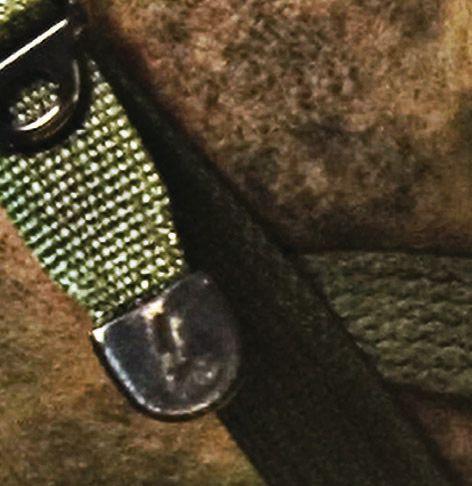







LAKEHEALTHYLIVING.COM // 73 SUFFERING IN SILENCE 74 THE FEAR FACTOR 76 TRAUMA // CONFRONT
TRAUMA SUFFERING IN SILENCE

Post-traumatic stress disorder (PTSD) is the body’s natural response to terror. This disorder is an emotional condition that presents itself following traumatic events in which the person experiences helplessness, terror, actual or threatened death, horror, or serious injury to himself, herself, or others. These events can occur whether a situation is witnessed or experienced firsthand, and any event considered life changing can trigger PTSD.
PTSD was recognized formally in 1980. In the hundreds of years prior to 1980, it had been acknowledged although it had no conventional diagnosis. Civil War veterans were referred to as suffering from “soldier’s heart,” and during World War I, these bodily responses were called “combat fatigue.” Vietnam veterans who displayed symptoms were said to have “post-Vietnam syndrome,” “battle fatigue,” or “shell shock.”
During the life-changing event, a reaction happens called an acute stress reaction, which releases adrenaline unconsciously, automatically, and immediately. This adrenaline is the primer that is hard wired within us in accordance to the fight or flight response. When the body interprets an environment where immediate danger is gone, it initiates a chain of chemical reactions that are supposed to diffuse the body’s reaction that the fear initiated. Sometimes the original feelings of fear, horror, and helplessness linger on afterward; these feelings are the definition of post-traumatic.

Risk components for post-traumatic stress disorder exist. For example, women tend to be twice as likely to suffer from this illness as men are. In addition, people who have experienced previous traumatic events, whether or not PTSD developed, are at higher risk. A person who had an emotional disorder before the event, such as depression or anxiety, and a person who has little social support, such as

family or friends, is also at higher risk of developing PTSD. In order to diagnose this illness, the person must have each of the following symptoms:
• Experience or witness an event displaying serious physical or emotional injury, or death.

• Receive a response involving horror or helplessness.
In addition, symptoms must be present for at least one month and cause significant distress. Constant thoughts about the event or feeling numb about it without any lessening of intensity are common for PTSD sufferers.
Specific examples of distress symptoms of PTSD include anger, irritability, guilt/ shame/self-blame, anxiety, social phobias, depression, self-destructive behaviors, low personal hygiene, suicidal thoughts, feelings of isolation/loneliness, and feelings of mistrust/betrayal.
Examples of physical ailments of PTSD may include headaches, stomachaches, chest pain, forgetfulness, hysterical crying, a pounding heart, sweating, muscle tension, and recurring nightmares.
And when it comes to avoidance and numbing symptoms of PTSD, sufferers may avoid people, places, and activities related to the trauma and try to evade thoughts and feelings related to the trauma.
Listening and communicating with those who have experienced life-changing events, whether or not they have been diagnosed with PTSD, helps them feel safe, connected, and heard. This approach is called post-crisis debriefing, which helps to offset the common tendencies of bottling up feelings and isolation. Providing something to drink, eat, and a warm blanket can help the person feel safe and connected.
RAISING AWARENESS ABOUT POST-TRAUMATIC STRESS DISORDER IS SLOWLY HELPING IT GAIN A VOICE. Sources:
74 // HL // MARCH 2014
“’Soldier’s Heart’ and ‘Shell Shock’:
PTSD.” PBS.org. www.pbs.org/wgbh/pages/frontline/shows/heart/them es/shellshock.html; “Acute Stress Disorder.” Psychology Today. www.psychologytoday.com/conditions/acutestress-disorder; “Post-Traumatic Stress Disorder.” The National Institute of Mental Health. www.nimh.nih.gov/health/publication s/post-traumatic-stress-disorder-ptsd/index.shtml; “Post-Traumatic Stress Disorder (Easy-to-Read).” The National Institute of Mental Health. www.nimh.nih.gov/health/publications/post-traumatic-stress-disorder-easy-to-read/index.shtml (Acces sed Feb. 6, 2014) Photo illustration by Anthony Casto Inst itute MIND M
Past Names for

LAKEHEALTHYLIVING.COM // 75
CONFRONT
THE FEAR FACTOR
Fear comes in many forms. From spiders and snakes to public speaking and even death itself, everyone has experienced fear at some point. Many of these fears are justified, but many are not. Fear can have adverse effects on a person’s life. An individual will go out of the way to avoid whatever it is that causes the fear. Most will say it is a very uncomfortable feeling. Then there are those who live for the thrill of the next adventure. They will face injury or death head on, and laugh about it when they survive another day.
The mind is the part of the body that is affected most by fear, but the mind also controls the rest of the body and creates a number of physical symptoms. These can include a rapid heartbeat, sweating, and a feeling of weakness. When a person is feeling panicked, he or she can also feel the need to empty his or her bladder. Diarrhea can also occur. The lungs may seem to have a hard time pushing air in and out, or a person can actually forget to take a breath. While this is
happening, the eyes may start seeing in black and white. Dizziness or faintness may occur. These symptoms can happen in a moment’s notice when fear takes hold.
Despite the uncomfortable feeling, fear can be a good thing. It alerts a person to danger so action can be taken if necessary. The objective is not to let fear cloud judgment. A rash decision could affect a person’s whole life in a negative way. Keeping a clear head will go a long way in helping overcome the fears in everyday life.
The media has played a major part in creating anxiety in people. Newspapers, radio, and television have played on people’s emotions by sensationalizing events as they happen. No one can forget the coverage from 9/11 that was thrust in the public’s eyes for what seemed like days on end. If you live in a big city, it may seem like not a day goes by without someone being murdered senselessly. Kidnappings, rapes, child abuse, and other heinous crimes happen regularly. With the media bombarding the
public with these images, it is no wonder people fear leaving their homes.
Although agoraphobia is defined as fear of open spaces, sufferers of this phobia can turn into recluses, afraid to leave their homes. Many others will go out, but only to what they consider are safe, familiar places. Numerous other phobias will have people changing their lifestyles just to avoid what they fear. People who live their lives in fear of something feel powerless to stop this behavior. If the fears take over too much, depression can happen.
The pharmaceutical companies cater to people’s insecurities. They advertise depression and anxiety medications in every form of media and this type of advertising has taken off in the last 10 to 15 years as both depression and anxiety have become big money. So, why are more people suffering from depression and panic disorders? Some of it has to do with fear. The public has been conditioned to think bad things happen to good people on a daily basis, and these bad things
are lurking just around the corner. Fear is keeping them from living a life of happiness they deserve.

The fear of failure is one that can really hold a person back in his or her life. These people will never take risks and never discover what they could truly do with their lives. A life without risk can become stagnant, as well as boring. This can lead to a life unfulfilled. The world could miss the potential of these individuals who are afraid to try. Fear can also create anger. A person can either go into fight or flight mode. In fight mode, anger takes over. In these situations, a person

76 // HL // MARCH 2014
SOMETIMES IT IS BEST TO FACE YOUR PHOBIAS AND JUMP BEFORE YOU LOOK.
MIND
The fear of failure is one that can really hold a person back in his or her life.
might not think too clearly or act rationally. This can lead to dire consequences if a person cannot control his or her temper. Many times anger can turn into violence. Riots have been caused due to groups of people fearing that authority was taking over their lives in some aspect. The fear caused anger, and those angry masses joined forces to make their voices heard.
On the other hand, there are those people who thrive on fear, such as adrenaline junkies who love fear-inducing situations and take many risks. These people can be found base-jumping off buildings, cliffs, or high bridges. Extreme sports enthusiasts typically live for the moment.
While fear is something that we all experience, don’t let it limit your lifestyle. By doing so, you will never know just how good your life could have been if you had just let go and took a risk. Fear can be a good thing because some risks are worth taking. After all, your happiness is at stake.


Touched by an angel
It is a wonderful tale of hope, courage, and tenacity.
Eduardo Sainz’s inspiring story should be shared with people all over the world to remind them of the value of perseverance. People who have physical limitations and believe their fate is sealed would be emboldened by his story. For those who think they cannot rise above life’s toughest challenges, his story would persuade them otherwise.
On November 15, 2012, Eduardo, a Lake County resident, was stopped at a red light on U.S. Highway 27 in Leesburg. As he waited patiently, he had no idea that behind him was an oncoming vehicle traveling 55 miles per hour. The driver was reaching on the floorboard for his cell phone instead of paying attention to the road.
His vehicle was struck from the rear. The force of the impact knocked Eduardo’s vehicle into the automobile ahead of his. At that moment, his life was suddenly and forever changed.
He spent the next two weeks in the hospital and an additional three weeks in rehabilitation. Eduardo suffered a severe injury of his ninth thoracic vertebrae, leaving him paralyzed below his belly. Today, he is confined to a wheelchair, endures chronic neuropathic pain, and must catheterize himself every three hours to use the bathroom. His nervous system no longer regulates temperature.
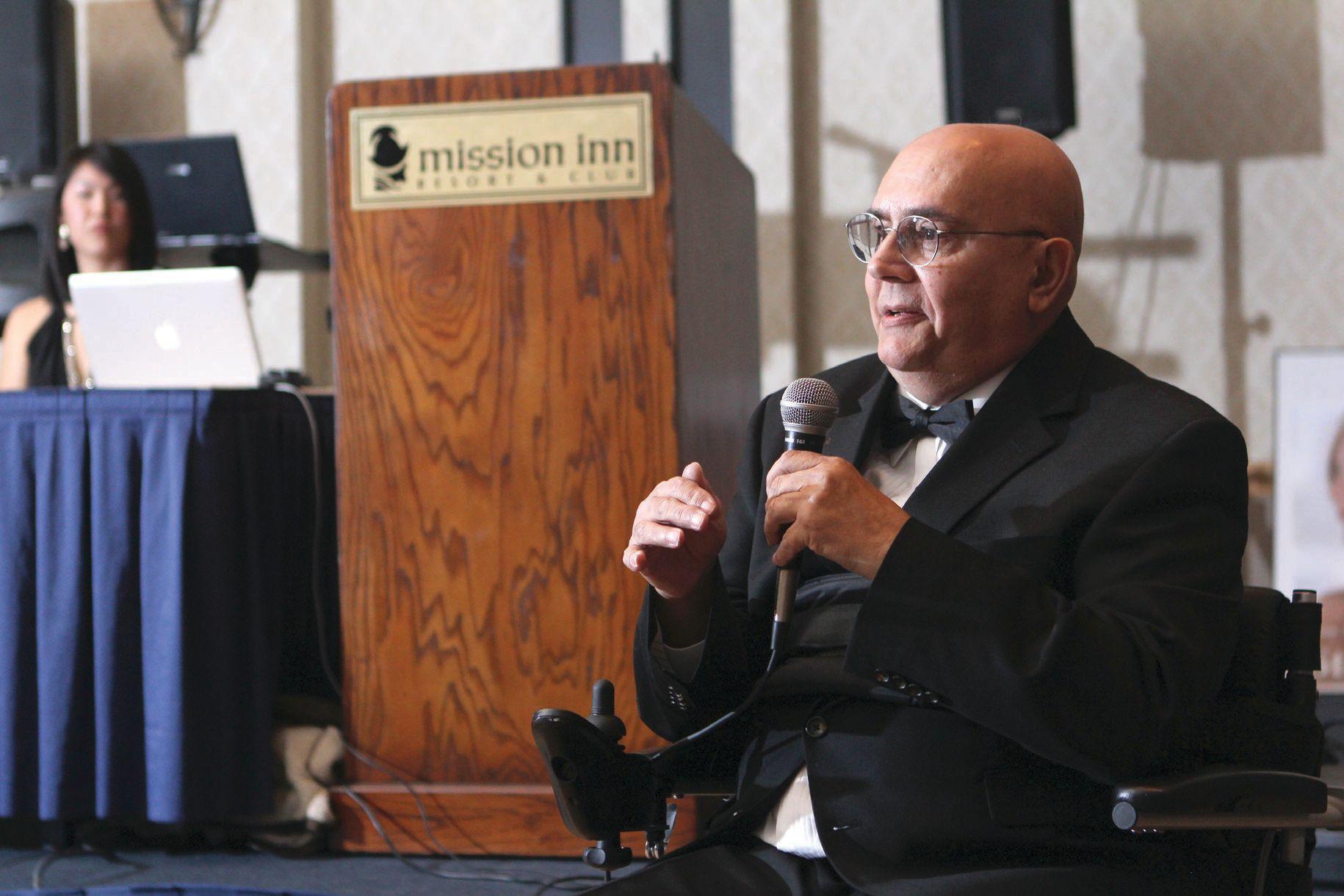
Despite those dire circumstances, he has not given up in the face of adversity. Today, he is working as an office manager with his wife, Dr. Maria Bello, at Florida Heart and Vascular Multispecialty Group in Leesburg. He hopes to soon drive again using a hand-operated car. And he even dreams that medical advancements will allow him to become independent and possibly walk again.
“I live in pain 24 hours a day and suffer all the time,” Eduardo
SPECIAL PROMOTIONAL FEATURE
Eduardo Sainz
says. “My new life is hard and horrible. However, I firmly believe that God allowed me to stay here for a reason. I have a wonderful wife, two beautiful daughters, and a great group of friends. My brain still works, and I need to be a good example for them. That is why I vowed to fight from the beginning.”
A heart to help
While Eduardo remains optimistic, he realizes he may need a medical miracle to relieve him of his daily pain and physical limitations.
“My only hope for the future is continued research and advances in medicine.”
That is where University of Florida senior Alicia Lew comes in. Thanks to the efforts of this 22-year-old kind-hearted woman, a medical breakthrough may occur sooner rather than later. In January, she organized a special event, Art for Hope, in honor of Eduardo. The event raised more than $31,000, which will be used to fund the continued research of UF neuroscience professor Dr. Paul Reier, one of the nation’s leading experts in brain and spinal cord injuries.
Alicia’s parents, Dr. David Lew and June Lew, are close friends with Eduardo. “I remember visiting him in the hospital and being so inspired by his strength and courage,” says Alicia, who grew up in Leesburg and graduated from Lake Highland Prep in 2010. “When I see what he went through, how far he has come, and what he wants to do in the future, it makes me appreciate my own life more and motivates me to fi nd medical answers to complex conditions like his.”
Two years ago, Alicia held a similar event called Art for the Heart, which raised $11,000 for cardiovascular research. This year, she decided to fund the research of Dr. Reier, who is world renowned for his ongoing investigation in using human stem cells as regenerative medicine.


“Stem cell research is transforming the future of medicine,” says Alicia, a premed student at UF. “If we become complacent, then we hinder how effective medicine can be in the future. I think it is
important to be part of the journey and become part of a common goal to fi nd solutions.”
Art for Hope was certainly a good start. The event, which was held at Mission Inn Resort and Club on Jan. 25, included a live and silent auction of artwork donated by professional and amateur artists throughout Central Florida. In addition, guests enjoyed live music and numerous food and wine pairing stations consisting of meat, sushi, pasta, and dessert.
The most memorable moments of the event occurred when both Eduardo and Dr. Reier addressed the audience, reinforcing how medical advancements can someday change lives forever. “I dream about the possibility of one day walking again,” Eduardo says. “I am so grateful for what Alicia did. This is the most precious gift that anyone has ever given to me.”
By helping fund medical research, Alicia is also providing countless others with the greatest gift of all — the gift of hope.

SPECIAL PROMOTIONAL FEATURE
Alicia Lew presents a check to Dr. Paul Reier.
“I truly like Dr. Wu and felt comfortable with him every step of the way. I wouldn’t change doctors for the world. The best thing about Tri-County Podiatry is you don’t have to wait very long for your appointment time. Within 10 minutes, I was in Dr. Wu’s office, and he was chairside with me. He genuinely cares about you as a patient.”
 -Frederic Wix Wix
-Frederic Wix Wix
1585 Santa Barbara Blvd., Suite B, The Villages tricountypodiatry.net // 352.259.1919 MEDICAL & SURGICAL TREATMENT OF: • Bunions and Hammertoes • Corns • Morton’s Neuromas • Ingrown Nails and Warts • Heel and Arch Pain • Thick, Painful Toenails • Foot Injuries • Diabetic & Geriatric Foot Care • Sports Medicine • Orthotics • Diabetic Shoes • Numbness/Tingling of Feet FOOTCARE FOR PEOPLE OF ALL AGES WITH ACTIVE LIFESTYLES. MEDICARE AND MOST INSURANCES ACCEPTED SCAN HERE with your smart phone To learn more about Tri-County Podiatry

LAKEHEALTHYLIVING.COM // 81 LAAKEKEHEHEAL A T THHYYLIVVINNGG.COOM M / 8 INNERVENTION // CHALLENGES // MENCOURAGEMENT
BEATING ADDICTION 82 COPING WITH TOUGH TIMES 84 WISE COUNSEL 86
SPIRIT
SPIRIT
INNERVENTION R
BEATING ADDICTION
WRITER: DR. ISAAC DEAS // PHOTOGRAPHER: FRED LOPEZ

SOME PEOPLE HAVE TO HIT ROCK BOTTOM BEFORE THEY CAN TURN THEIR LIFE AROUND.
It was the best of times; it was the worst of times in 1987.
I was working on my doctoral degree at Teachers College of Columbia University in New York. I was also married to a beautiful young woman and had a daughter. We lived in a nine-room home in West Haven, Conn., where I was the fi rst African-American supervisor for the Connecticut Superior Court in juvenile matters. I held that position for 15 years and had a very successful and productive career.
Growing up, my childhood was pretty normal. I had both of my parents, and we had a home in a middle class neighborhood. My siblings and I received spankings if we misbehaved, and our neighbors and even schoolteachers could discipline us without repercussions. From this, I learned to respect my teachers, neighbors, parents, and myself. There was no back-talking, eye rolling, or pitting one parent against the other.
All my life I was reared in the church because my mother was a classroom teacher there. We learned that homework was important, good manners were expected, and your actions in the community reflected upon your family.
However, for some reason in 1987 while I had everything going for me, I decided to experiment with cocaine. I knew what the drug could do but I also thought I could be the exception to the rule. My fi rst few experiences with cocaine weren’t good. My body rejected the drug. However, all potential addicts push the envelope, which was my downfall. I persisted until my body got used to the drug. Then, because of my good salary, I was able to buy it as needed.
After a while the drug won the battle, and I was addicted but in denial. Not long after I left my job, my wife took our daughter and left me, and our house went into foreclosure. My parents believed in “tough love” so I had to live on the streets or wherever I could lay my head.
I began to frequent New York City because there were numerous opportunities to make money to feed my drug habit. I would travel back and forth between Connecticut and New York City, picking up odd jobs from time to time.
Finally, I sunk so low that I had to reach out to God and really confess that I needed help. Thank God for my praying mother who literally prayed the hell right out of me.
I was then sent to Florida to a substance abuse recovery program at Youth Challenge of Florida in Wildwood for 22 months. I spent 18 months in the program and four months as a staff member.
After successfully completing the program, I was employed by LifeStream Behavioral Center, and while I was there, I started a youth substance abuse program that still exists today. I worked for LifeStream for seven years before moving on to Cornerstone Hospice where I became the interfaith chaplain. In addition to my work with hospice, I started my own mental health practice, became an adjunct professor at Lake-Sumter State College, and joined Tri-County Worship Center in Summerfield as the assistant pastor.
Overall, it was quite a rollercoaster ride, but to God be the glory for the things that He has done in my life.
82 // HL // MARCH 2014
DR. ISAAC DEAS has lived in the Central Florida area since 1990. He has received multiple degrees, including a doctoral degree in education from Columbia University in New York City and a master’s degree in counseling and human resources from the University of Bridgeport in Connecticut. He has more than 21 years of experience in adult and adolescent counseling and specializes in substance abuse therapy, family intervention, and adolescent behavioral treatment.

SPIRIT


CHALLENGES
COPING WITH TOUGH TIMES
If you are in the midst of a challenging situation, daily life can seem like an uphill struggle. Whether you are unemployed or faced with a personal problem, it can be difficult to survive everyday life with such troubles on your mind. Here are some tips for coping with day-to-day life and, if possible, taking positive action to improve your circumstances.



• Take each day at a time. If your future is uncertain, try not to look too far into the future. Try to enjoy today and live life in the present moment. Do as much as you can today to improve your situation.
Worrying about the future will not change your circumstances, and it can lead to a kind of mental paralysis, resulting in inaction and depression. However, at the same time, it is important not to feel guilty if you do worry about the future several times a day. If your situation has an uncertain outlook, it can be difficult to avoid worrying. Talking to a close friend or writing about your worries and fears in a personal journal can bring your worries into the open and loosen the grip they have on you.
• Go outside and get some exercise. If you stay indoors all the time and stare at the same four walls, it is inevitable you will soon start to feel depressed. Therefore, commit yourself to going outside at least once every day and doing some exercise. A brisk walk can be a great mood-lifter. If you prefer
to jog or run, vary your route often. You will benefit from the change of scenery, as well as the exercise.
• Be thankful. Even if your circumstances are extremely challenging, there should still be some things in your life for which you can be thankful. Even if they are as simple as a comforting cup of hot chocolate or a beautiful sunset, each day provides moments that make us grateful we are alive. When you find negative thoughts creeping into your head, grab a piece of paper and write up to 10 things for which you are thankful. Before you reach the end of the list, you will be feeling much better.
• Set goals. No matter how desperate your situation may appear, there are still some tasks you could accomplish to improve your circumstances. For example, if you are out of work, you could set yourself a target of finding and applying for a certain number of jobs each day. If your goals are not realistic and are too difficult to achieve, you will set yourself up for failure and feel even worse about your situation, which in itself could lead to depression.
• Try to remain positive. If you are going through a problematic period in your life, it is difficult, if not impossible, to remain positive all of the time. However, remaining as positive as possible in difficult circumstances does have several benefits. If you have a
positive attitude, you will be more likely to try different courses of action that may improve your situation. If, on the other hand, you have a negative attitude, you will be more inclined to feel there is no point in trying to change your circumstances.
Although you may have little or no control over your circumstances now, you do have full control over your feelings. It can be very liberating to realize this! A positive attitude leads to positive action, and your situation will be much more likely to improve more quickly through positive action.
• Expect some bad days. It is very likely there will be some days when everything seems to go wrong and the future seems bleak. All you can do on such days is to hang in there and tell yourself tomorrow will be better because even the most difficult circumstances can change quickly. If you keep doing your best and moving forward, it is likely your situation will change for the better at some point in the future.
So, live in the present moment, do some physical activity each day, be grateful for the good things in life, set goals and work steadily toward them, adopt a positive attitude, and survive the worst days in the best way you can. Your reserves of patience, perseverance, and determination will increase. At the end of this difficult period, you will be a stronger person and more capable of dealing with any challenges that may arise in the future.
84 // HL // MARCH 2014
SOURCES:
Photo illustration by Anthony Casto
FOR EVERY NEGATIVE, MAKE SURE TO HAVE A POSITIVE REACTION.
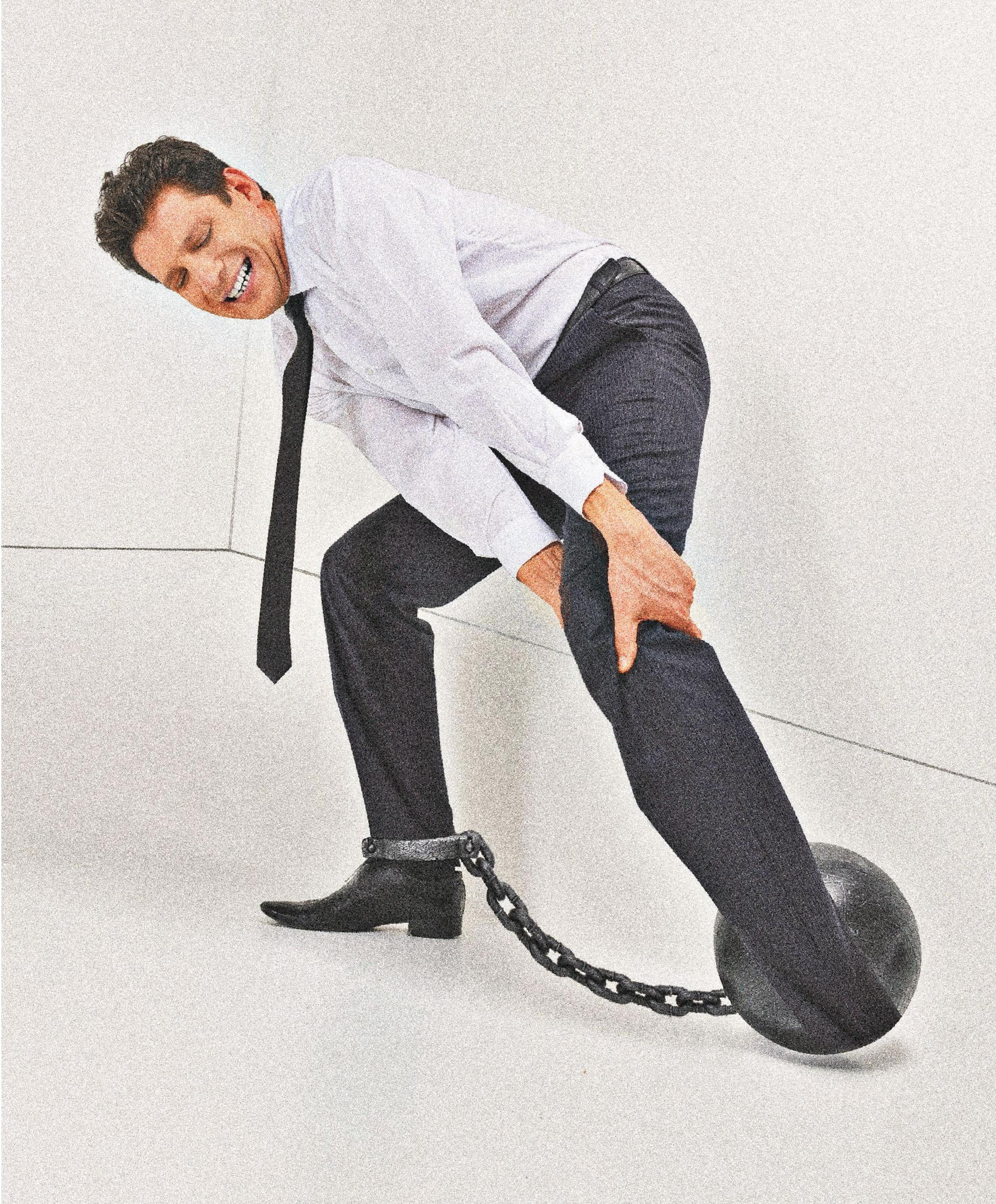
LAKEHEALTHYLIVING.COM // 85 LA LAKEKEHEHEALALTH T YL Y IV IVINING. G CO COM M /
WISE COUNSEL



There are some things you ought to know before you read my contribution to Healthy Living this month. First, you need to know I am a pastor. I view life and write from that perspective. That is important to know because when I encounter friends and acquaintances who are wrestling with hard things that come into all of our lives, I respond from that point of view. As I have experienced life, I have become more and more persuaded that there is only one reliable and true answer. That answer is found in a genuine and living relationship with Jesus Christ.
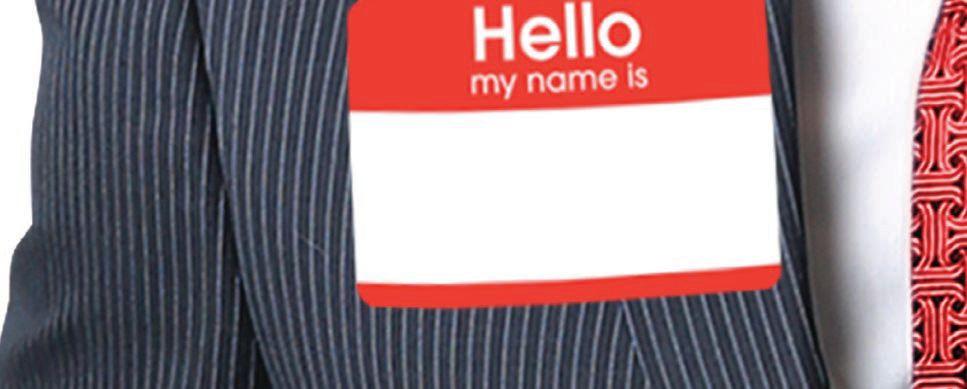
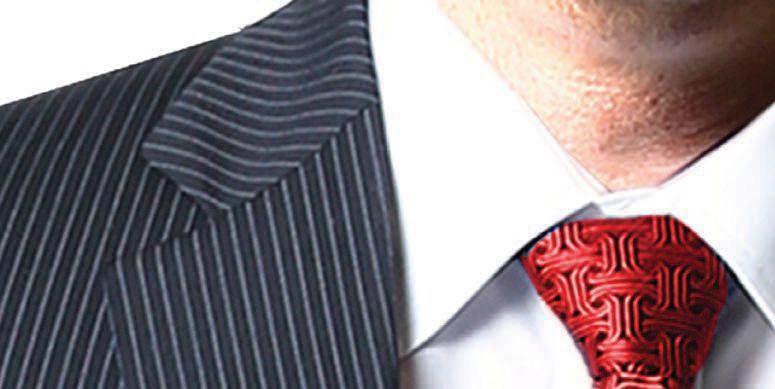

With that presupposition behind my words, I can offer true hope, empathy, and sympathy in the midst of life’s biggest traumas, as well as on the occasions when the little things tear at us. The most important thing everyone needs to realize is if God is truly God (and He is!), then He is not out of control. He is not sitting in heaven wringing His hands over what is going on in your life or mine. It is not because He is distant and uncaring, but rather it is the exact opposite. God cares about you and knows you as an individual. He knows you by name and knows your heart. Therefore, to comfort those in crisis, one of the most important things you and I can do is to remind them that God is sovereign and has a purpose behind the struggle.

God knows about our pain and suffering because the Bible teaches that pain, death, and frustration are all a result of the rebellion of humanity and our desire to actually be God ourselves. Disease and death were not the way God initially created the earth. They came as a judgment on the whole of creation. One of the reasons Jesus healed the sick was to authenticate the fact he was actually the Son of God and to give humanity a sort of “preview” of what will come at the end of all world history. The Bible expresses it like this: “He will wipe away every tear from their eyes, and death shall be no more, neither shall there be mourning nor crying nor pain any more” (Revelation 21:4). Jesus took the curse of creation upon him and carried it to the grave. When Jesus died on the cross, he was “paying the price” for our rebellion and sin. Those who are hurting need us to help them understand those truths in a gentle, gracious way.
Almost everyone knows something about the book of Job. It is the story of the pain and calamity Job suffered in this world. One of the striking things about the book is the way Job’s “friends” assailed him with their orthodox theology. Even his wife suggested Job should just curse God and die. They accused him of sin and suggested he somehow brought his suffering upon himself. Job’s “comforters” failed to point
him back to the truths that the suffering of the righteous has meaning in God’s plan for our lives. They failed to “speak the truth in love” (Ephesians 4:15).


When we draw close to those who are hurting, I suggest we take with us a few of the thoughts I have shared here. Remember, what we need when we are in pain may not be words, especially the pious words of others. Often what we need is the presence of others who will lovingly sympathize with us. Recognize it is okay for those who hurt to ask hard questions and cry; you don’t have to answer the questions in the moment of pain.
We usually need to be reminded that God has a purpose in everything that comes into our lives. That is part of what the sovereignty of God means. We ought to help our friends take their eyes off themselves and their pain and remember life is not “all about us.”
Whatever you do, remember the only way to comfort someone is to speak the truth in love with gentleness and point them toward Jesus as the one who will ultimately make things right.
SPIRIT
WRITER: RICHARD BURGUET
86 // HL // MARCH 2014
RICHARD BURGUET, B.A., M-Div., has been ordained in the Presbyterian Church in America for more than 30 years. He has served churches in South Carolina, Mississippi, Maryland, and Georgia. Richard is pastor of New Hope Presbyterian in Eustis and is co-author of Covenants Disciples Workbook New Hope is at 19535 Eustis Airport Road and on the web at www.newhopepca.com.







L LAAKEKEHHEEAALLTTHHYYLLIVIVININGG.COCOM M // / 8 87 7 WHERE DID ALL MY MONEY GO? UNDERSTANDING YOUR PAYCHECK 88 CRISIS FUND 90 SUBTRACT // RESERVE
FINANCE
SUBTRACT FINANCE
WHERE DID ALL MY MONEY GO? UNDERSTANDING YOUR PAYCHECK


You negotiate a salary when you take a job, and your paycheck starts out looking good. Then you find your take-home pay shrinking as deductions are taken. Do you pay attention to everything that is coming out of your check? Do you understand why these deductions are taken?
Whether standard deductions, benefits, or other deductions, you work “hard for the money” and you have the right to know what is being withheld and where that money is going. Here are some explanations that can help you understand what is coming out of your paycheck better.
Gross earnings. This is the amount you earned based on your pay or salary, including any overtime. It is usually a good bit higher than net pay, which is the amount printed on your paycheck that you take home after deductions. If you are on salary, this should be the amount you were quoted or that you negotiated. If you are paid hourly, it should be equal to the number of hours you worked times your hourly wage.
Other types of pay. In addition, you may see boxes on your paycheck for overtime, holiday, and sick pay. Your paycheck may show the hours you have accrued, or you may receive that on a separate statement. Your paycheck stub will indicate hours you used during that particular pay period. Overtime wages are usually calculated at time and a half.

Federal taxable wages and withholding tax. Your Federal Taxable Wages is the amount of your paycheck that you are taxed on by the federal government. Your pretax deductions (medical and dental insurance, retirement, and flexible spending accounts) should be subtracted from your gross pay to equal this amount. Withholding Tax is essentially income tax withheld from your wages and sent directly to the IRS by your employer. Think of it as a credit against the income tax you must pay for the year. Standard deductions include pretax deductions and FICA (the Federal Insurance Contributions Act) or OASDI (Old Age, Survivors and Disability Insurance program), which are the same program. Money taken out is matched by your employer and paid into the Social Security system. Keep in mind if you are self-employed, you may have to account for your own taxes, usually by setting aside a portion of your paycheck.
State taxable wages and withholding. The state taxable wages column shows the amount your state taxes your wages if you have a state income tax. In Florida, we do not have a state income tax.

Miscellaneous withholdings. You will see several smaller boxes labeled with various other deductions, which may include your health insurance, retirement plans, and any cafeteria plan benefits for which you have signed up.
Managing your withholding tax. In general, the more money withheld from your wages for your taxes throughout the year, the greater your tax refund may be (because you have essentially overpaid the IRS.) While many people like to get a tax refund, you should keep in mind you are only getting back the money you earned that year. A tax refund is basically an interest-free loan you gave the IRS. On the other hand, if too little is withheld from your wages, you will likely owe more tax at the end of the year because you have underpaid the IRS. Additionally, you may be subject to penalties and interest charges for not withholding enough. For most taxpayers, it is recommended you try to match your withholding tax as close to your actual tax liability as possible. While you cannot avoid withholding tax altogether, you can control the amount that is withheld from each paycheck when you fill out your Tax Form W-4, which is used by your employer to withhold the proper amount of federal income tax from your paycheck.
Year-to-date. Many pay stubs will list your total amounts earned or withheld to date. These amounts can be useful if you want to see how much you have saved for retirement for the year, or how much income you have earned.
88 // HL // MARCH 2014
WRITER: THOMAS RUGGIE, CHFC, CFP
THOMAS H. RUGGIE, CHFC, CFP is the founder of Ruggie Wealth Management. With more than $425 million in assets under management, he has been ranked among the nation’s 50 Fastest Growing RIA Firms , the Top 100 Wealth Managers, Top 100 Independent Advisors, Top 40 Most Influential Advisors, and again, as one of Barron’s Top 1,000 Advisors. truggie@ruggiewealth.com



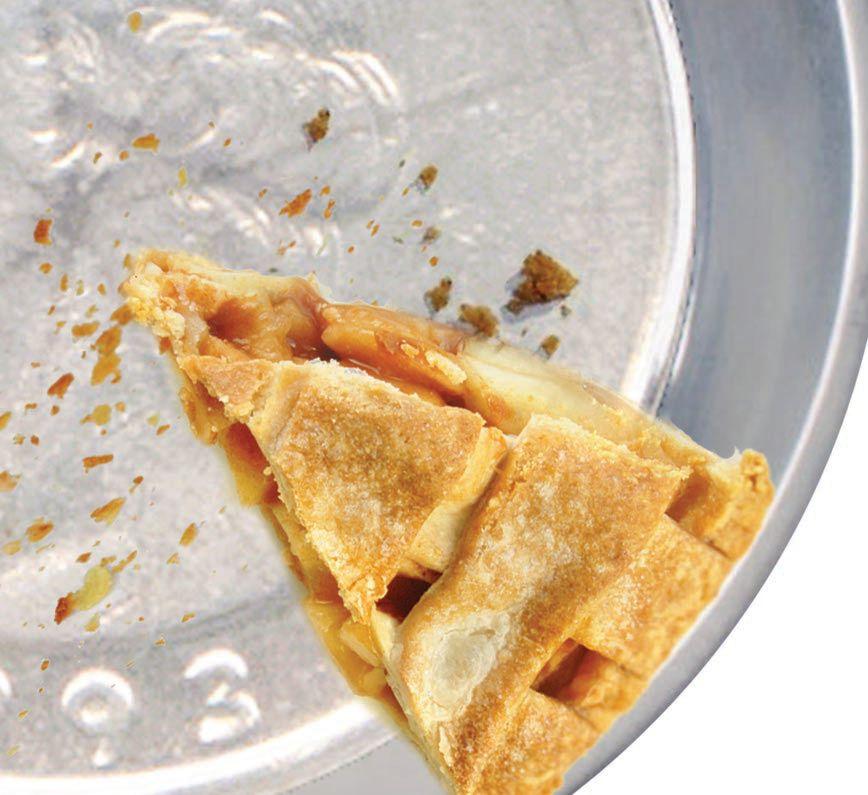

LAKEHEALTHYLIVING.COM // 89
FINANCE
CRISIS FUND
An emergency fund is the foundation of a solid financial plan. While it’s important to fund your retirement and build long-term savings, it’s critical to have a ready source of cash to cover the unexpected expenses and financial emergencies that occur in life.
It’s probably not news to you that an emergency fund is important; however, have you actually taken steps to set aside enough cash? One-third of Americans do not have an emergency fund and may not have enough savings to cover a financial emergency, according to a survey by the Consumer Federation of America and American Savings Education Council.
Why should I have an emergency fund?
In life, it’s important to be prepared for the unexpected. Financial emergencies can come in many forms: the loss of a job, sudden medical expenses, expensive home repairs, or a surprisingly
large tax bill. The best way to pay for these emergencies is to have access to a liquid source of cash. Without an emergency fund in place, if calamity strikes, you may be forced to rely on credit cards, take out a loan, or liquidate your long-term investments. These tactics could leave you paying off expensive debt or drawing down your retirement savings to pay for a financial emergency.
How big should my emergency savings be?
We typically advise our clients to have three to eight months’ worth of living expenses saved for emergencies. While this may seem like a lot of money, one of the most common causes of a financial emergency is job loss or a sudden shortfall in income. If you or your spouse lose a job, or are unable to work due to illness or disability, bills could pile up quickly and it may take time to regain your financial footing. We find that it’s best to plan for a worst-
case scenario so smaller emergencies like a sudden car repair can be easily covered.
Keep in mind this is a general recommendation. Factors like your personal situation, whether or not you have dependents or carry large amounts of debt, and the types of insurance coverage you have will determine the right balance in your emergency fund. For example, a single person with several dependents may need more savings to protect against the risk of losing a sole source of income or large expenses. A couple with multiple sources of income may need fewer savings since the loss of one income might not affect their finances as much. Another dynamic to consider is your personality; some people worry more about the unexpected and your emergency fund should be large enough to help you sleep at night. A financial adviser can help you evaluate your financial circumstances and decide how large your emergency fund should be.
Building your emergency fund
If you don’t already have an emergency fund or have difficulty building your savings, the key is to start small and focus on building a savings strategy. It’s important to make your emergency fund a priority by adding it to your budget, instead of scraping money together from what’s left over at the end of the month. When possible, use windfalls like tax refunds, bonuses, or the occasional yard sale to boost your savings.
Try not to be overwhelmed by the difficulty of saving several months’ worth of income; instead, create a smaller initial goal. If you set your early goals to be small and manageable, you greatly increase your chances of achieving them. We recommend you get into the habit of making small deposits into your emergency savings by creating a schedule of weekly, biweekly, or monthly contributions. Once your saving is automatic, you won’t even have to think about it.
While we nearly always
SOURCE: “Annual Savings Survey Reveals That Only Half of Americans Have Good Savings Habits and Think They are Adequately Prepa red for Their Financial Future.” Consumer Federation of America. www.consumerfed.org/news/644 (Accessed Jan. 20, 2014) [Securities and advisory services offered through SII Investments, Inc., member FINRA, SIPC and a Registered Investment Advisor. Fross and Fross Wealth Management and SII Investments, Inc. are separate companies. SII does n ot provide tax or legal advice.]
90 // HL // MARCH 2014
HAVING AN EMERGENCY FUND HELPS YOU BE PREPARED FOR THE UNEXPECTED.
WRITERS: THOMAS FROSS AND ROBERT FROSS
SOURCE: www.statisticbrain.com/american-family-fi nancial-statistics
tell our clients to prioritize paying down debt, saving for emergencies is one important exception. If you don’t have at least some emergency cash set aside, one unexpected major expense could plunge you back into debt. Ideally, you would want to aggressively pay off your high interest debt while slowly adding to your emergency savings.


Your emergency fund needs to be easy to access, and we recommend keeping it in a cash or cash equivalent account that is accessible with a debit card, ATM card, or by check. We have also found it is best to keep your emergency funds in a separate, targeted account to help avoid the temptation of raiding it for everyday expenses.
ROBERT AND THOMAS
FROSS founded Fross & Fross
Wealth Management with the shared vision of creating a truly world-class experience for their clients. Specializing in offering comprehensive financial planning to high net-worth retirees, Fross & Fross manages over $300 million in assets and maintains a stellar reputation of professionalism and experience throughout The Villages.

Average American family savings account balance: $3,800.
LAKEHEALTHYLIVING.COM // 91
OPENING EYES
Mid Florida Eye Center held an open house to welcome Dr. Shawn Wilker, who will head the practice’s Retina Institute along with Dr. Ray Maizel. Dr. Wilker completed fellowship training at Johns Hopkins University. Optometrists and family physicians were invited to the open house and received a demonstration of the LensX cataract laser system. They also toured the laser retina surgical suite.
1. Shaunie Shaw, Lanny Husebo, and Mandy Richardson
2. David Wargo and Jamie Novell
3. Shawn Wilker, M.D., and Ray Maizel, M.D.



4. Maria M. Mena, M.D., and Carlos M. De La Cruz

5. Jeffrey Baumann, M.D., and Ken Grier
6. Jeanie Weece, Glenn Piesche, and Mandy Richardson

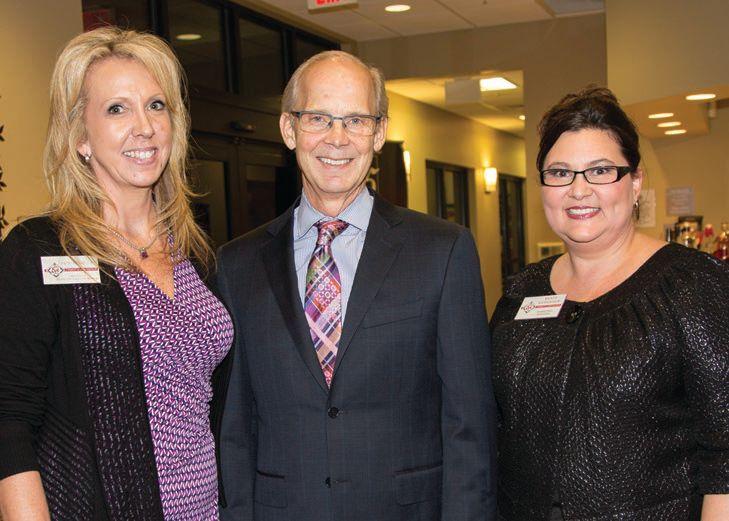
92 // HL // MARCH 2014
PHOTOGRAPHER: RON VANDEVANDER
Community 1 2 4 5 6 3

WHAT A HE‘ART’
University of Florida student Alicia Lew organized Art for Hope, an event that raised research money for brain and spinal cord injuries. Alicia’s friend, Eduardo Sainz, was paralyzed from the waist down following an automobile accident in 2012. The event, which was held at Mission Inn Resort and Club, included a live and silent auction of donated artwork, as well as live music and numerous food and wine pairing stations.
1. Alicia Lew, Jessica Lew, Rocia Gil, Jeanny Lew, and June Lew

2. Nancy Schmeltzer, Wim Vergauwen, Mike Smith, Eduardo Sainz, Mary Jo Murphy, and Scottie Bull


3. Rachael Ross with Larry and Carrie Blevins
4. Gary and Diane Blakely with Lee Machuta
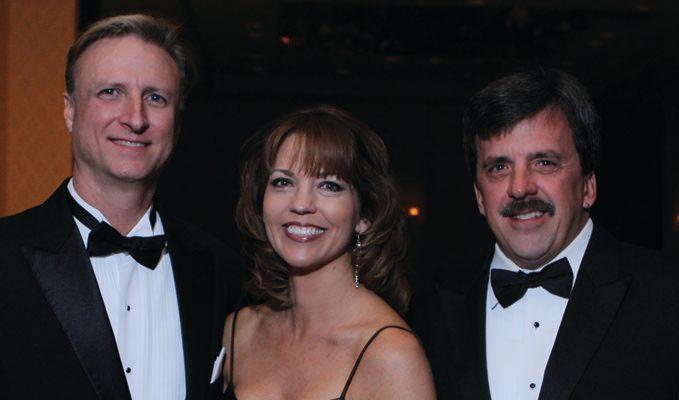
5. Cathy and Kent Hamil, Ginger and Ted Williams, and Denise and Eddie Demshar
6. Samantha Favis, Rick Serra, and Dr. Weena Favis


94 // HL // MARCH 2014
PHOTOGRAPHER: PROVIDED BY JAMES GIBSON
Community 1 2 3 4 6 5
Is Your SPECIALIST… REALLY A SPECIALIST?
Dr. Tankson is the ONLY board-certified, orthopaedic surgeon fellowship trained in foot and ankle surgery, serving the tri-county area.
As the first surgeon to perform ankle replacement surgery in Lake County, he is also the only surgeon in a three-county area with the experience, skill and training to perform highly-advanced ankle replacement surgery. Dr. Tankson receives referrals from physicians across the state who want to ensure the best options are available to their patients.

From conservative care for ankle injuries to complex care for foot and ankle trauma; arthroscopic surgery of the foot and ankle to ankle and foot fusion surgery to alleviate pain and instability; from joint replacements of the foot to total ankle replacement, trust the foot and ankle specialist other physicians trust. WHEN EXPERTISE MATTERS.
Diagnosis and Treatment (Medical and Surgical) for:
• Routine and Complex Fractures of the Foot and Ankle
• Advanced Treatment for Arthritis of the Foot and Ankle
• Symptomatic Adult Flat Foot
• Achilles Tendon Disorders
• Bunions, Claw Toes, Hammer Toes
• Revision Surgery
Call today for an appointment. Compassionate Specialized Care by Board Certified Fellowship-Trained Surgeons
ORTHOPAEDICS
Center for Advanced Foot & Ankle Surgery
701 Medical Plaza Dr., Leesburg • 326-8115
Summit Medical Park, 765 Highway 466, Lady Lake
• 753-9105
J. Mandume Kerina, MD
J. M Ke
Board Certified, Fellowship Trained, Advanced Joint Replacement Surgery of the Knee and Hip
Isaac L. Mitchell, MD
Board Certified, Fellowship Trained, Shoulder/Upper Extremity & Sports Medicine
Claudia L. Thomas, MD
Board Certified, Fellowship Trained, Orthopaedic Trauma, General Orthopaedics
Alfred J. Cook, Jr., MD
Board Certified, Fellowship Trained, Sports Medicine and Cartilage Rejuvenation
John T. Williams, Jr., MD
Board Certified, Fellowship Trained, Advanced Joint Replacement Surgery of the Hip
F Re R o
Cedric J. Tankson, MD
Foot and Ankle Specialist Joint Replacement of the Ankle
Cedric J. Ta k nksonn, MD
F d A kl Si li
5 th Annual Celebration of Lif of Lif e Gala
Reservations are required, please contact the Florida Hospital Waterman Foundation for sponsorship opportunities.
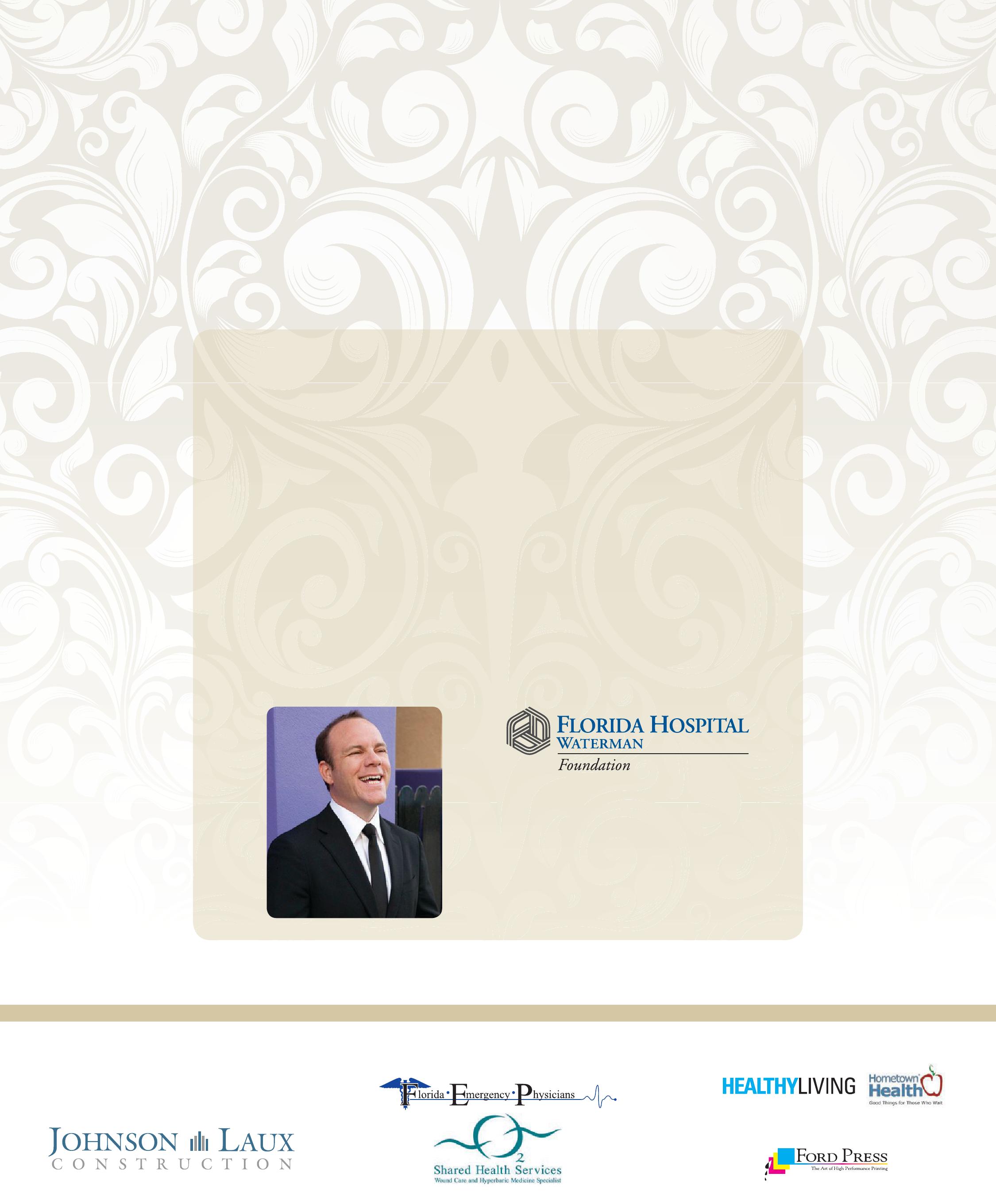
Media
Printing Sponsors Sapphire
Wheaton
Trust Sunday, April 6, 2014 Westin Lake Mary 2974 International Parkway, Lake Mary, Florida VIP Reception 4:00 p.m. Doors Open 4:30 p.m. Dinner Program 5:30 p.m. Entertainment Immediately Following Dinner BlackTieOptional
Ruby Sponsors
Sponsors
Sponsors Mildred S.
Family
1500 Waterman Way Tavares, FL 32778 Phone:352.253.3270 Fax:352.253.3266
fhwat.org/donate
Comedian
Tom Papa
fhw.foundation@ahss.org
MAGAZINE
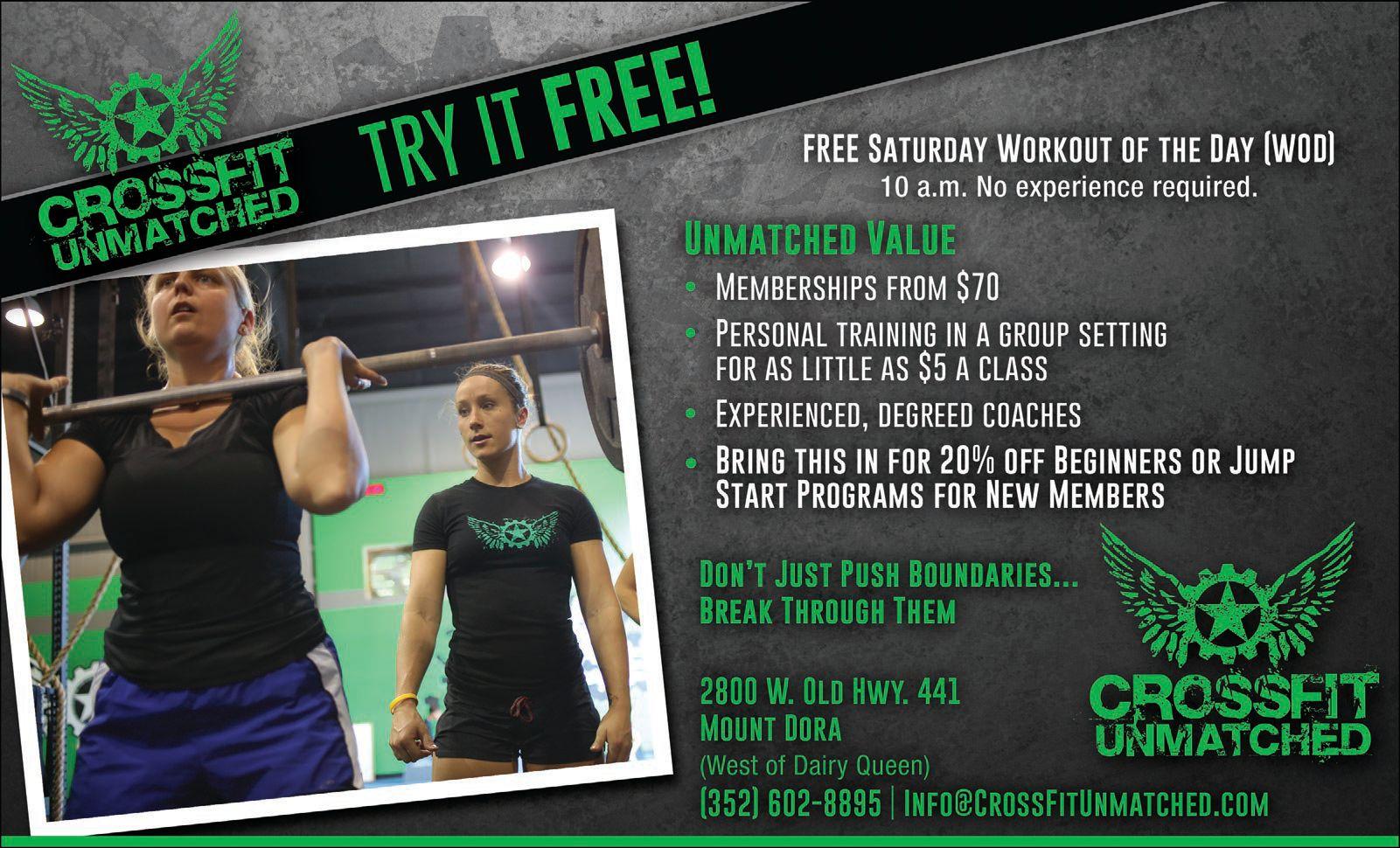














LAKEHEALTHYLIVING.COM // 97 DR. JOSÉ DIAZ Board-Certified in Internal and Pulmonary Medicine. Privileges at LRMC, The Villages Regional Hospital, Florida Hospital Waterman and Promise Hospital. DR. MARJERY LOPEZ Board-Certified in Internal and Pulmonary Medicine. Privileges at LRMC, The Villages Regional Hospital, Florida Hospital Waterman and Promise Hospital. LEESBURG: 1038 W North Blvd, Ste 102 VILLAGES: 1400 US Hwy 441, Bldg 900 Ste 906 352.315.1627 • www.pg-cf.com
INTENSIVE AND ICU MANAGEMENT
COPD • ASTHMA
DISEASES OF THE LUNGS
SLEEP DISORDERS
NOW ACCEPTING NEW PATIENTS
MOST INSURANCES ACCEPTED Excellence with a personal touch.
offering pulmonary rehab with an experienced respiratory therapist. Specializing in pulmonary and critical care.
•
•
•
•
•
•
Exclusively


FRED LOPEZ CHIEF PHOTOGRAPHER
HEALTHY VIEWS
Not all heroes wear capes or have super powers.
Board-Certified Orthopaedic Surgeon
Fellow: American Academy of Orthopaedic Surgeons
Fellowship: Sports Medicine
IT’S NEVER TOO LATE TO FEEL GREAT.
“FMI has performed thousands of surgeries, but I felt like their #1 priority. ”
With knee replacements, one size does not fit all. That’s why among my many specialties, I perform the “gender knee” procedure, which accommodates different knee shapes and sizes. After all, each patient is different, so not every approach should be the same. I get to know each patient thoroughly to customize my care, beginning with effective conservative treatments and, when necessary, advanced surgical techniques.
Total Joint Replacement (including gender-specific knee)
Sports Medicine
Shoulder Surgery
Arthroscopic Surgery
Trauma & Fracture Care
Osteoporosis Evaluation
Occupational Medicine
 H. ANDREW HUNTT, MD
JOHN A. COWIN, MD
CARL O. OLLIVIERRE, MD, FACS CHAD WATKINS, DPM, FACFAS
H. ANDREW HUNTT, MD
JOHN A. COWIN, MD
CARL O. OLLIVIERRE, MD, FACS CHAD WATKINS, DPM, FACFAS
THE VILLA (352) 753-4366 (352) 728-3000 www.bonesandmuscles.com
H ANDREW HUNTT
LET MAKOplasty® ROBOTIC SURGERY TAKE YOU FURTHER.







Knee pain shouldn’t slow you down or keep you off your game. If you are one of the millions of Americans who suffer from painful early to mid-stage osteoarthritis of the knee, MAKOplasty Robotic Knee Surgery may be an option for you. Available only in Lake County at Florida Hospital Waterman, this innovative procedure is less invasive than traditional knee replacement, and allows patients to get back to their life quicker and with less pain. Visit FHWatermanOrtho.com for more information or to sign-up for a free upcoming educational seminar.
















































































































































 SHAENA CHASTAIN sales assistant shaena@akersmediagroup.com
SHAENA CHASTAIN sales assistant shaena@akersmediagroup.com































































































 — Mitchell Barbe
— Mitchell Barbe








































 FACC, FCCP, FSGC, FACP, FSCAI Cardiologist
FACC, FCCP, FSGC, FACP, FSCAI Cardiologist











































































































































































































































































































 -Frederic Wix Wix
-Frederic Wix Wix

































































 H. ANDREW HUNTT, MD
JOHN A. COWIN, MD
CARL O. OLLIVIERRE, MD, FACS CHAD WATKINS, DPM, FACFAS
H. ANDREW HUNTT, MD
JOHN A. COWIN, MD
CARL O. OLLIVIERRE, MD, FACS CHAD WATKINS, DPM, FACFAS







